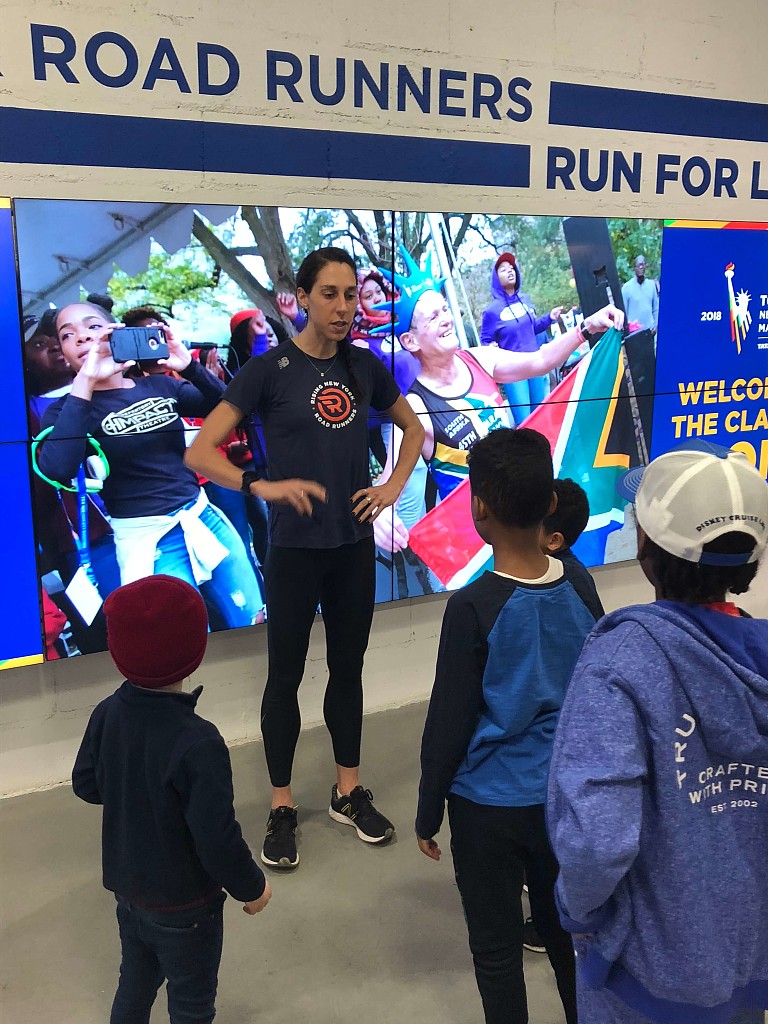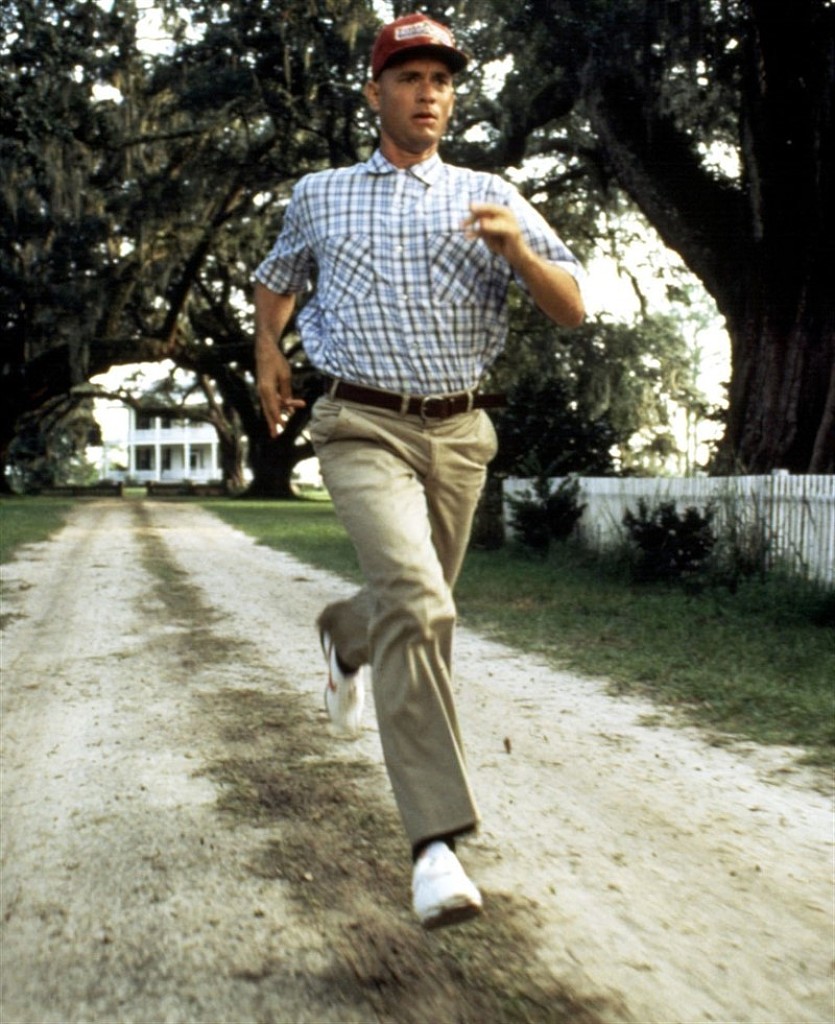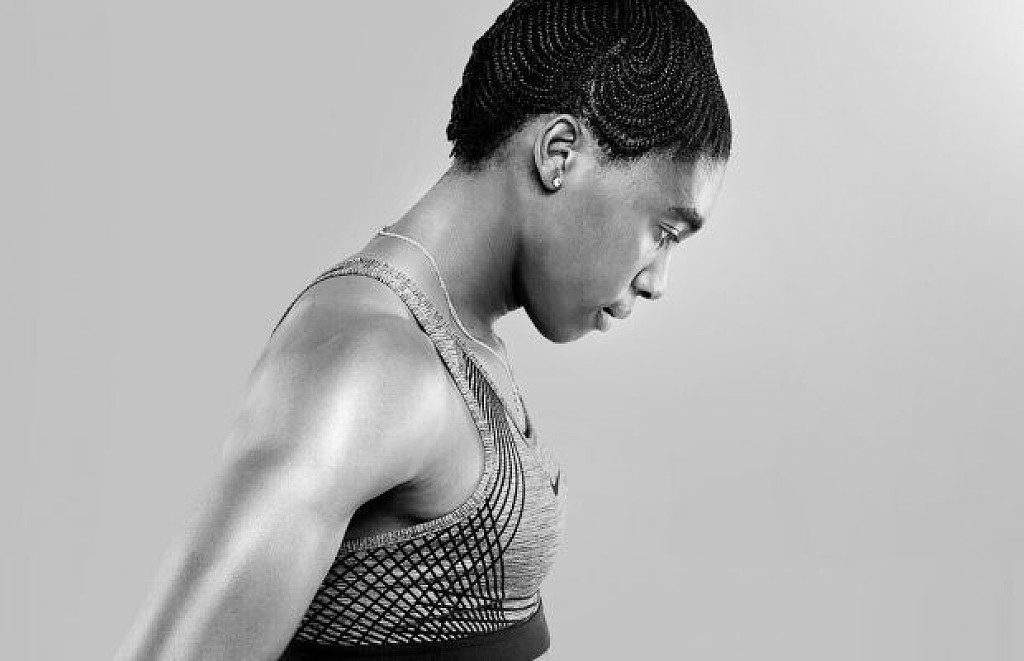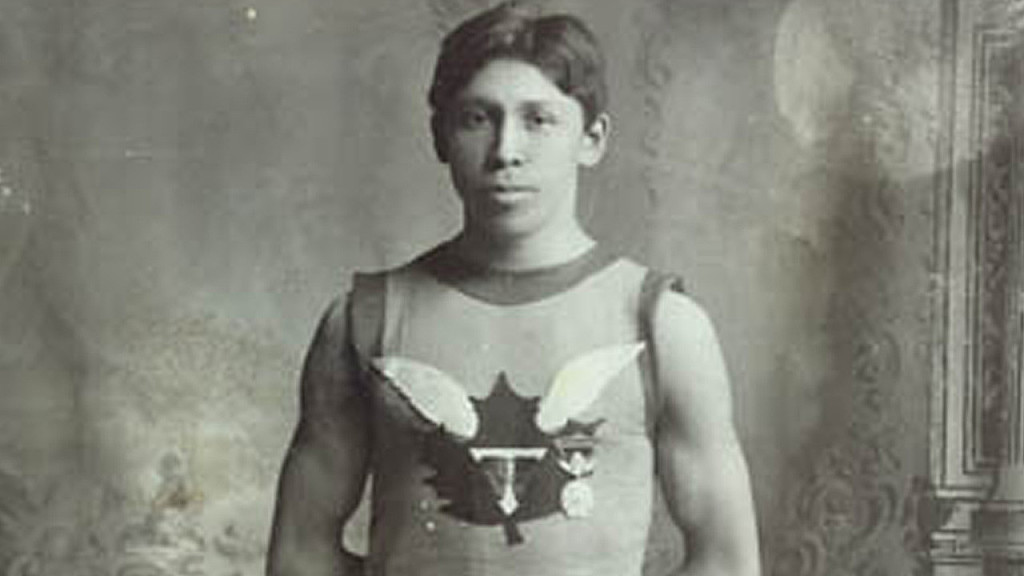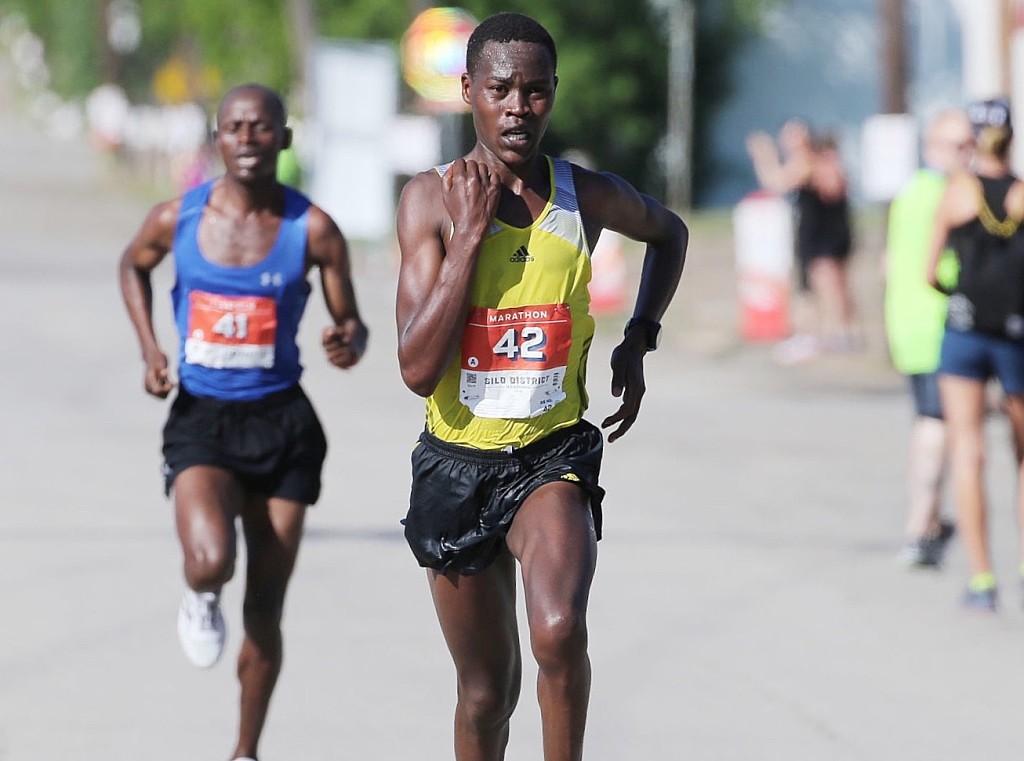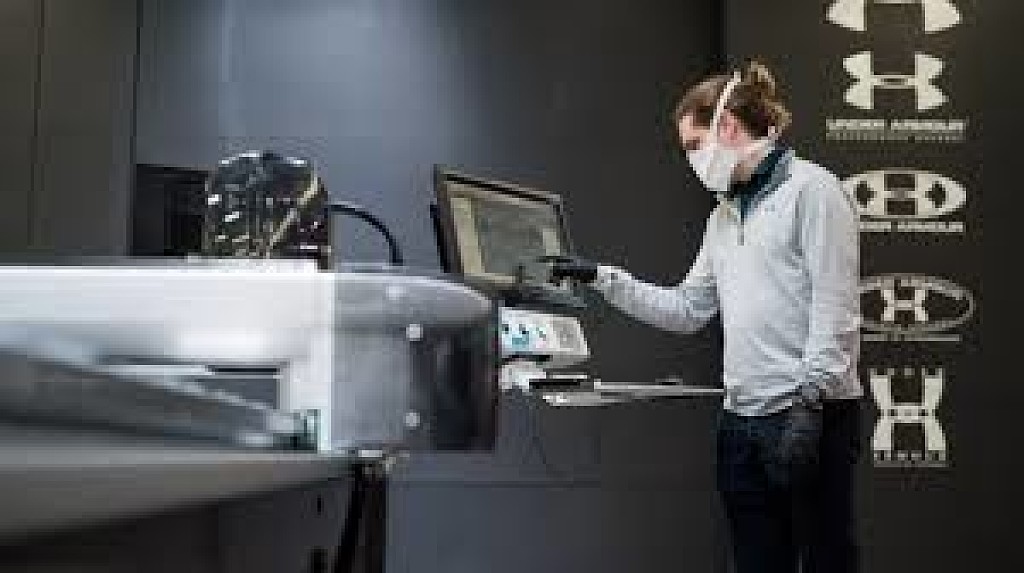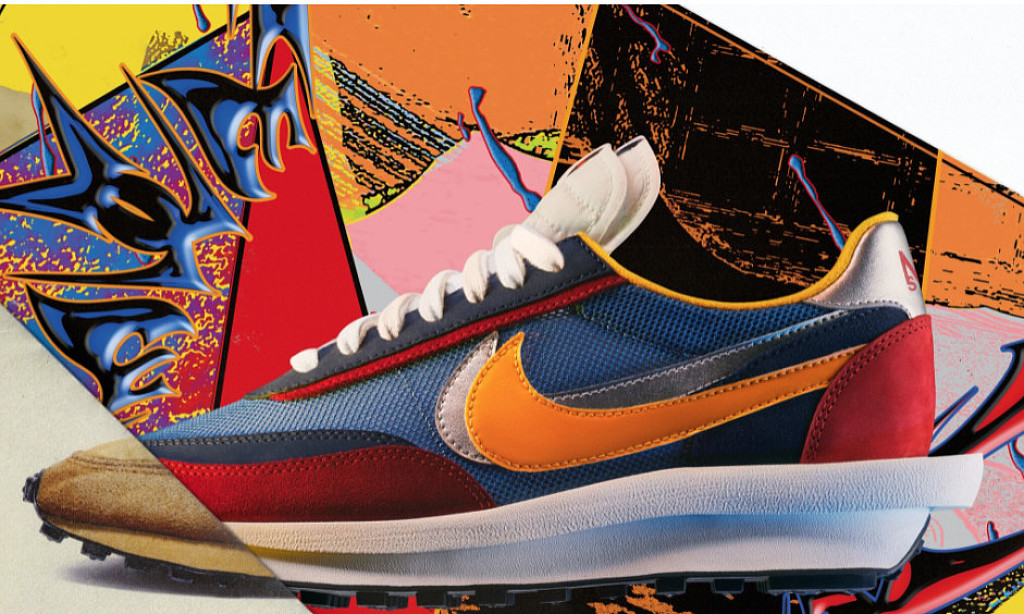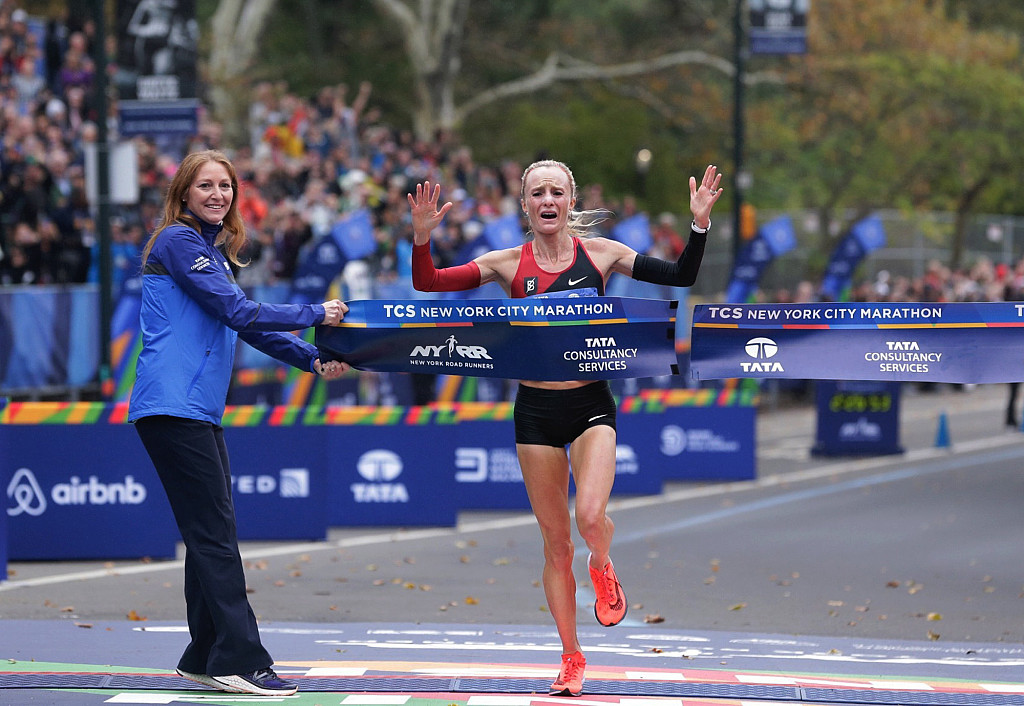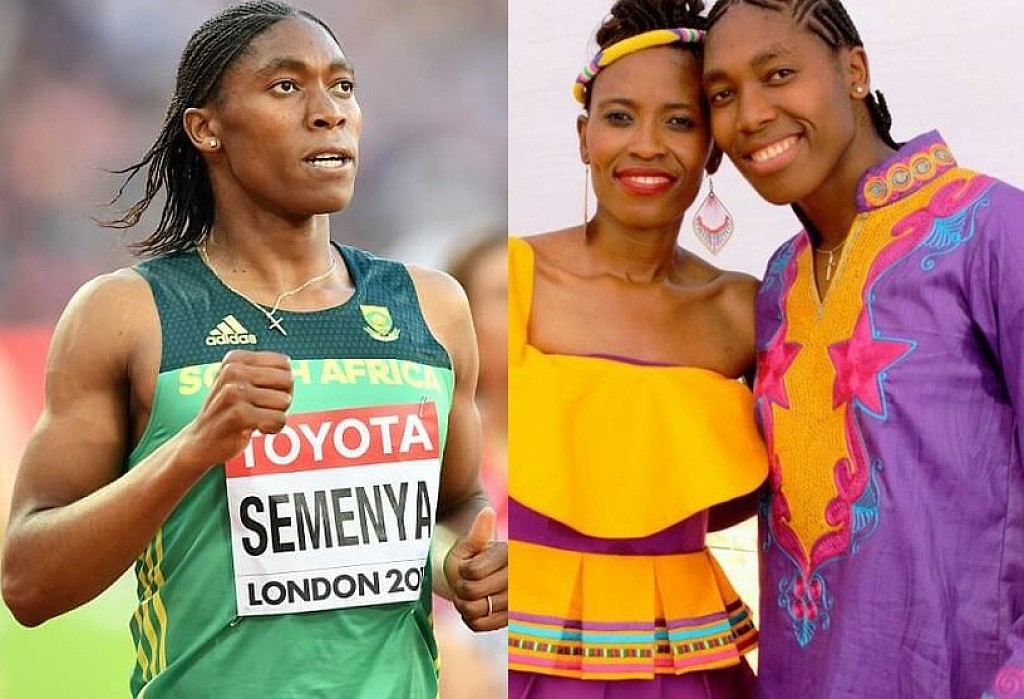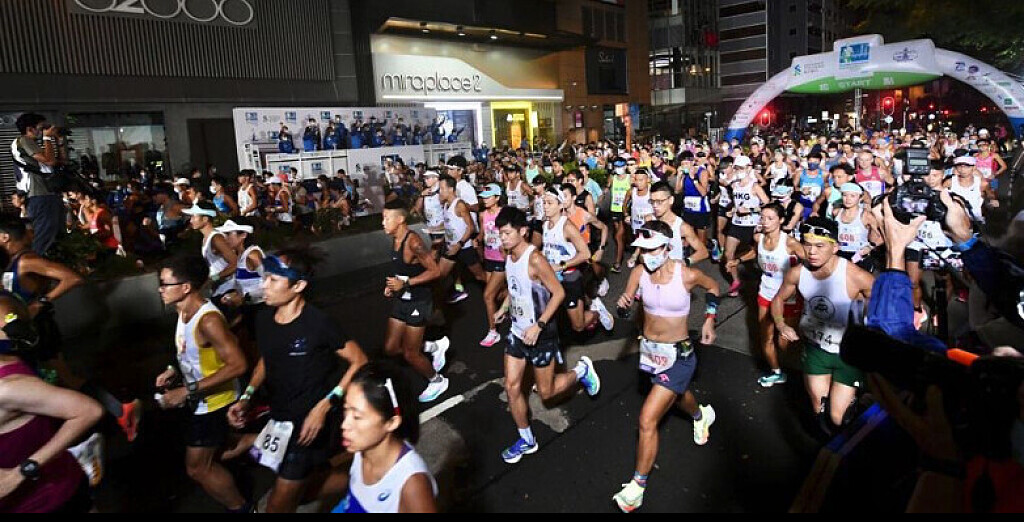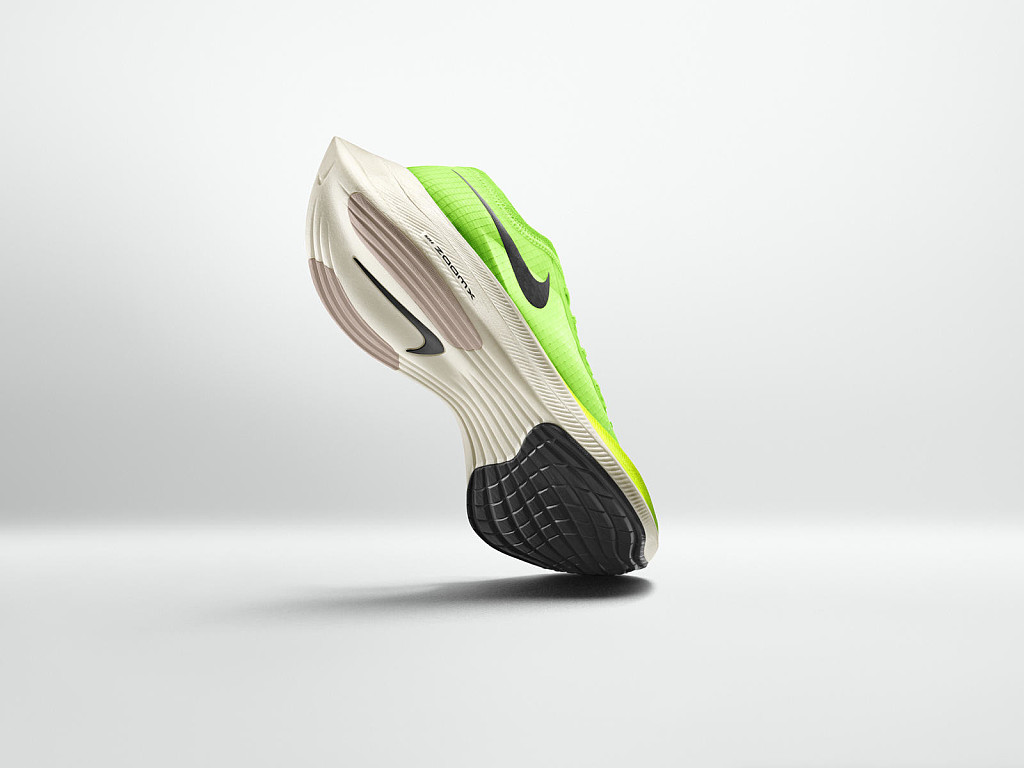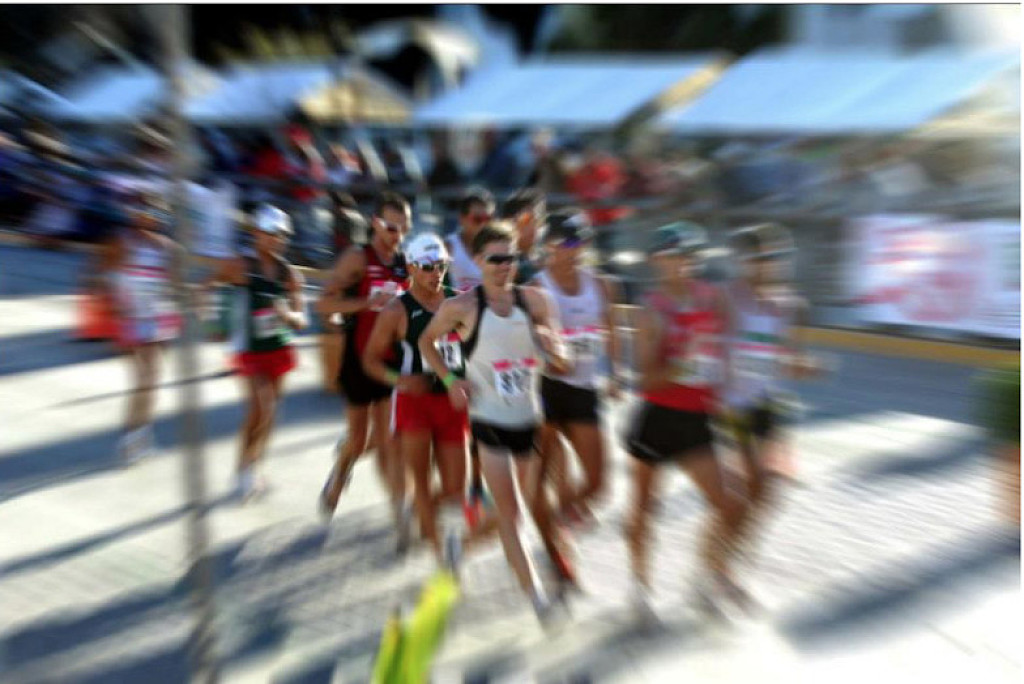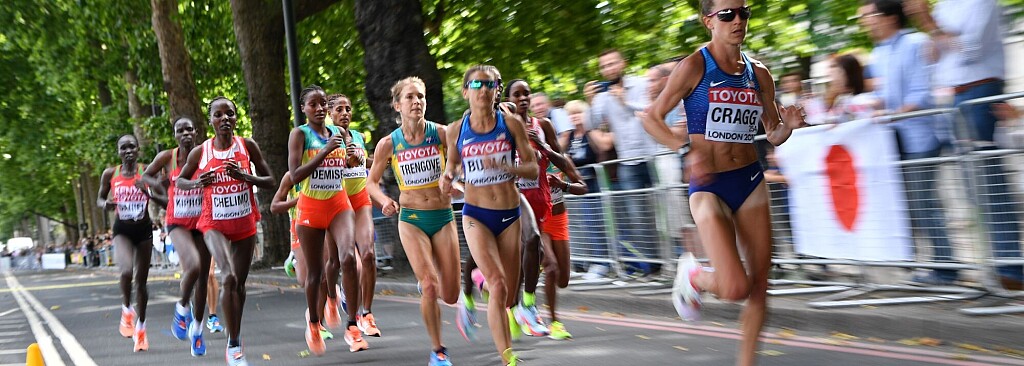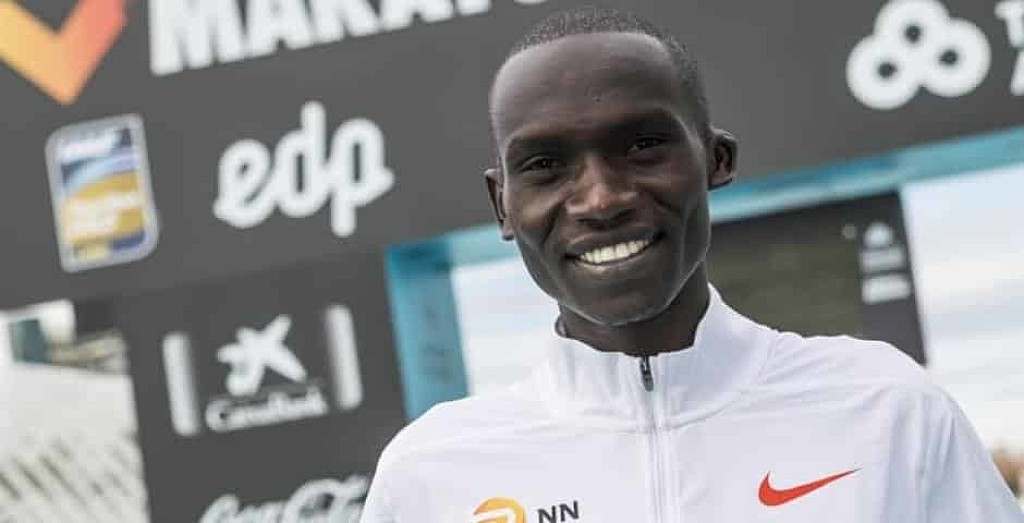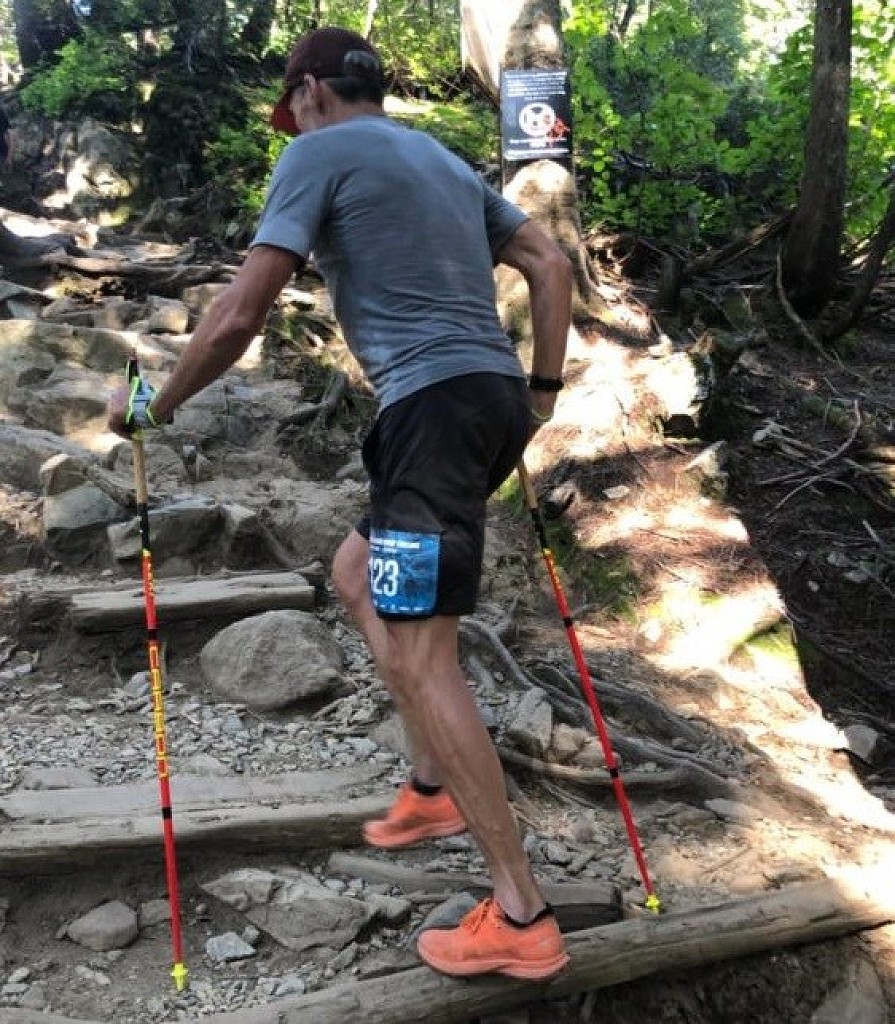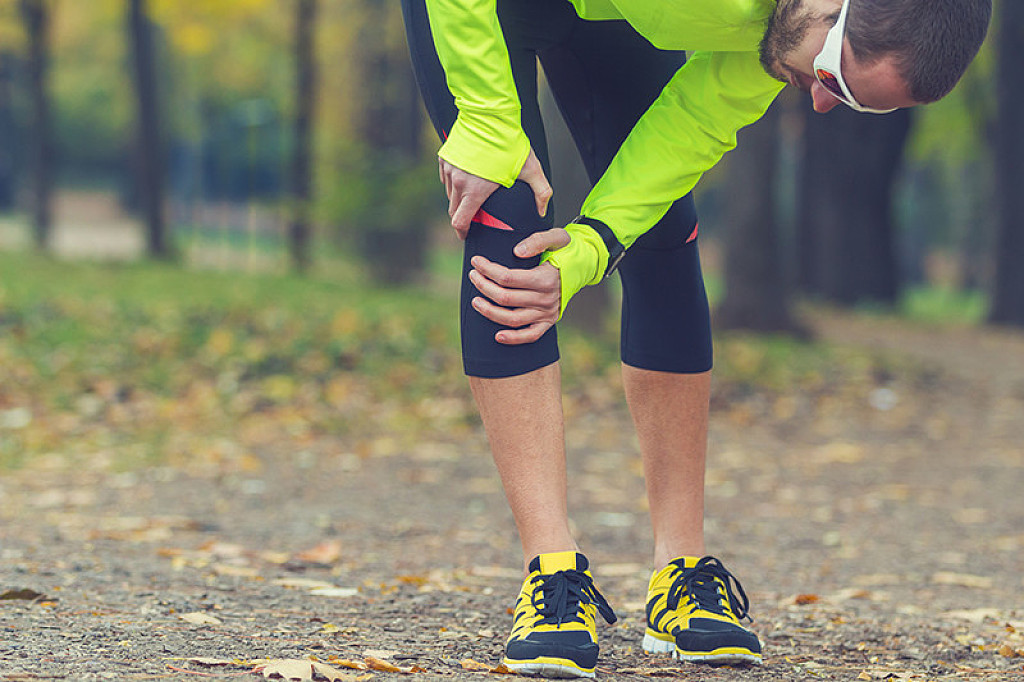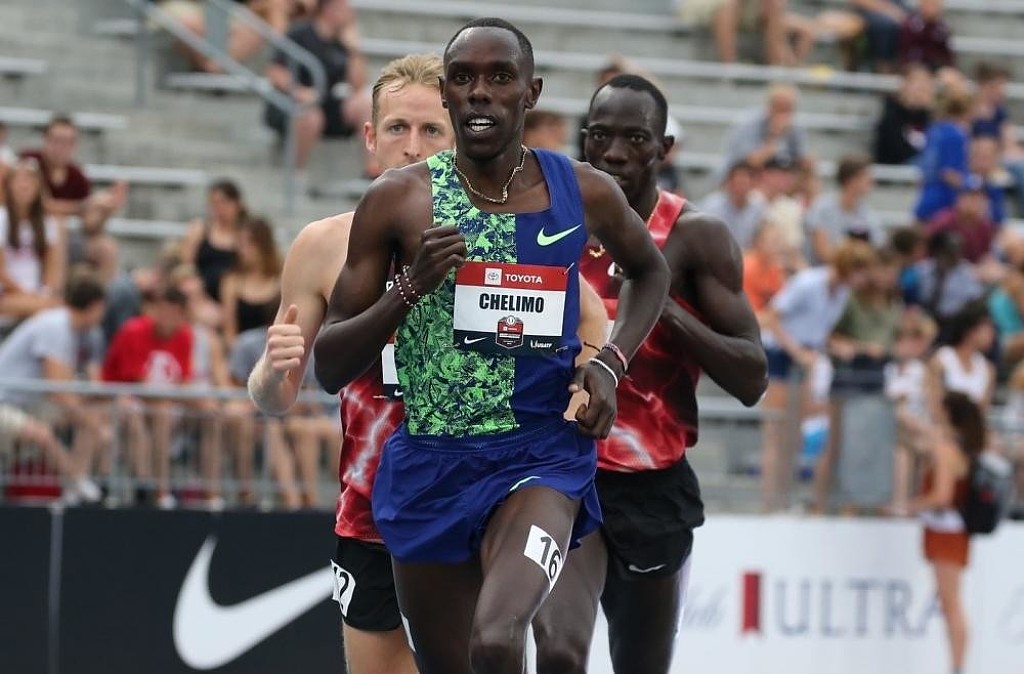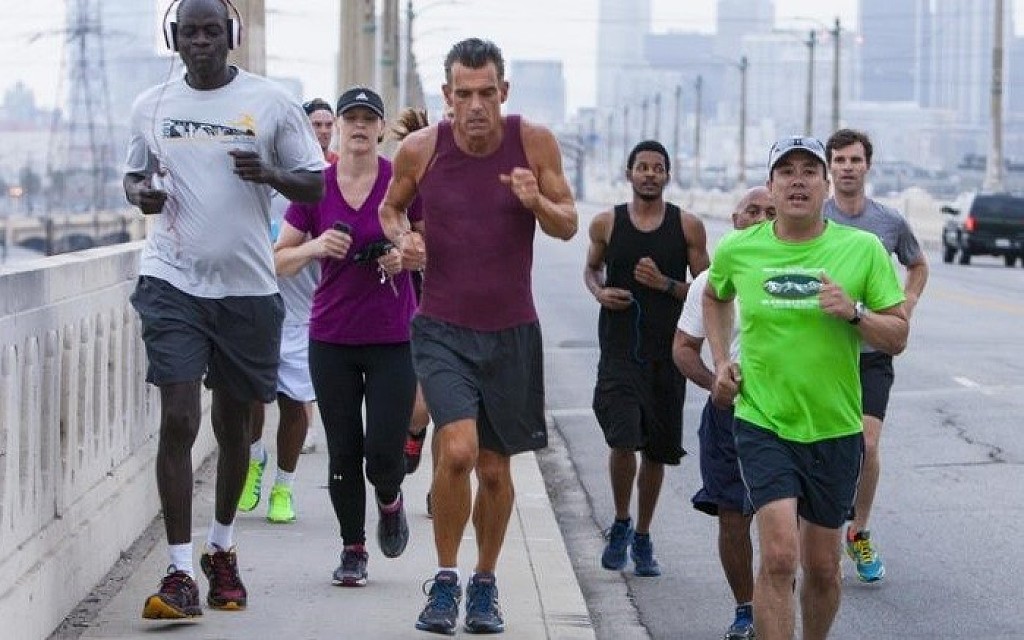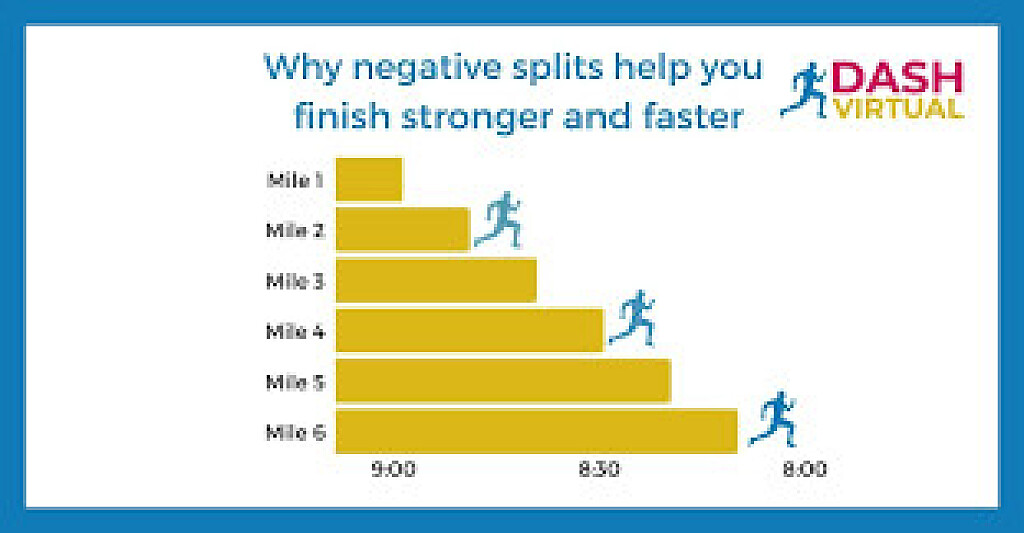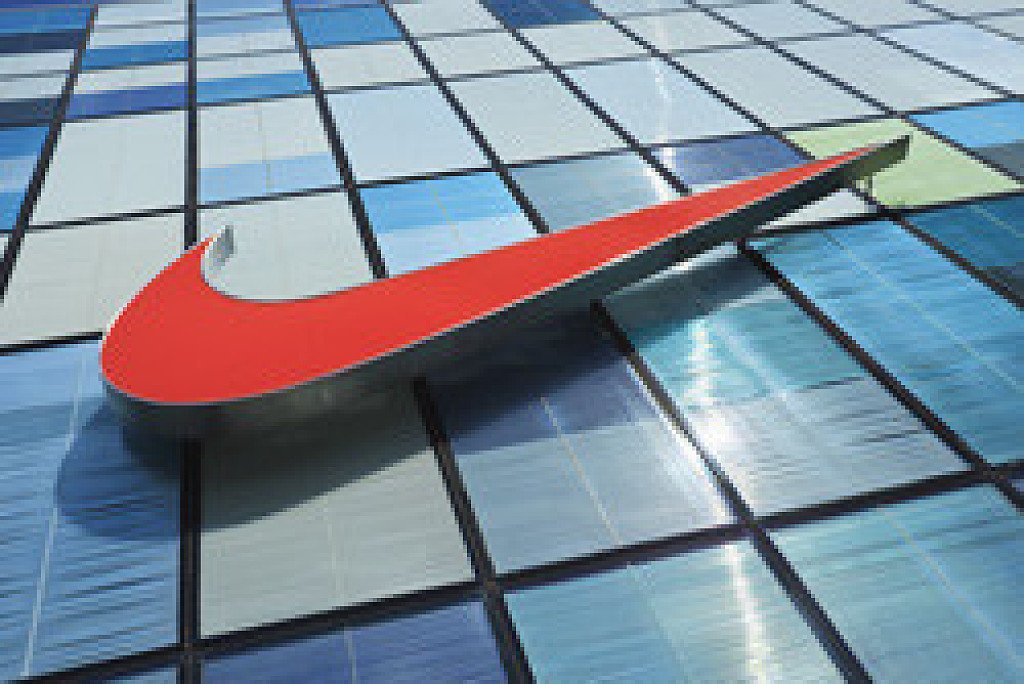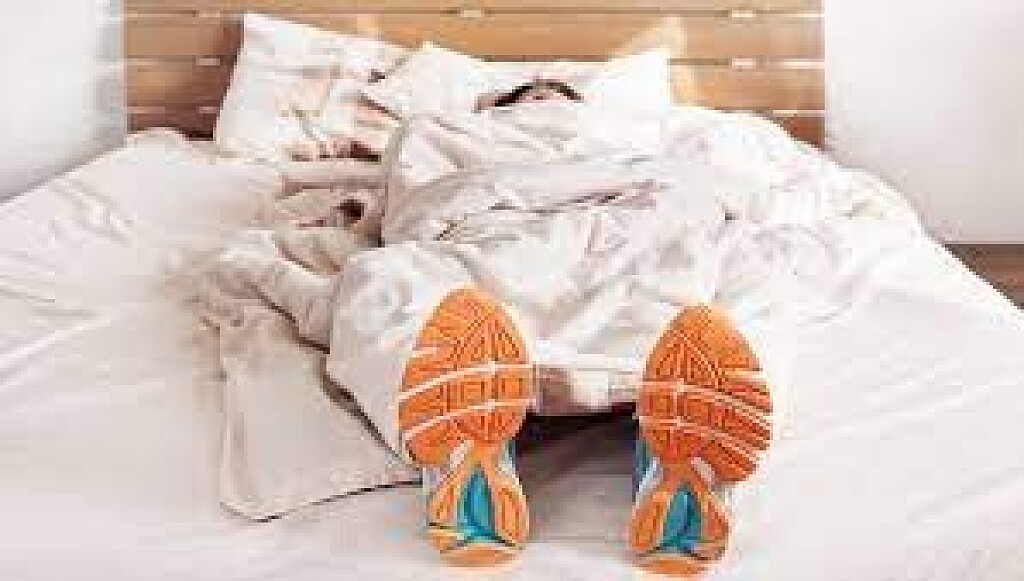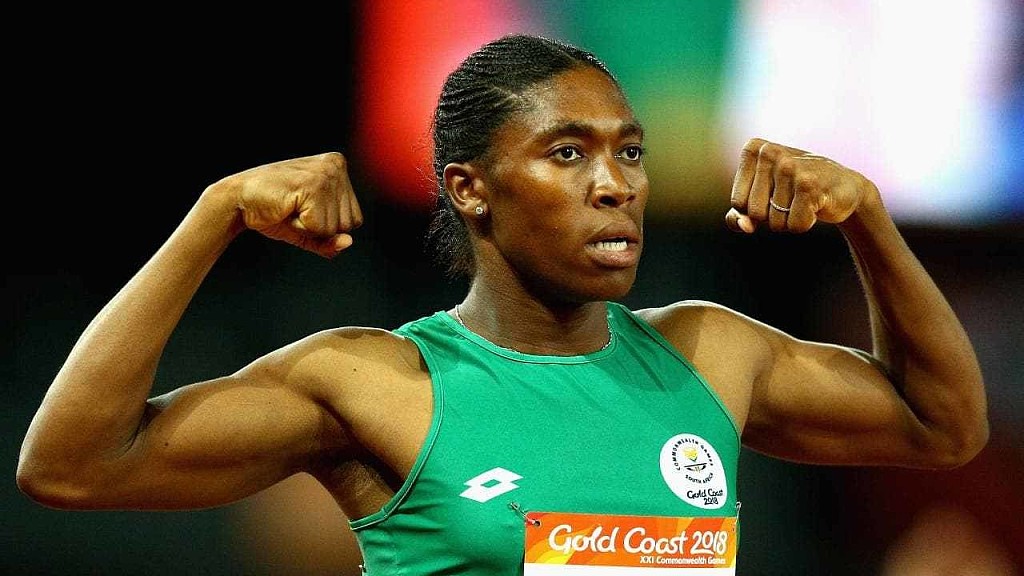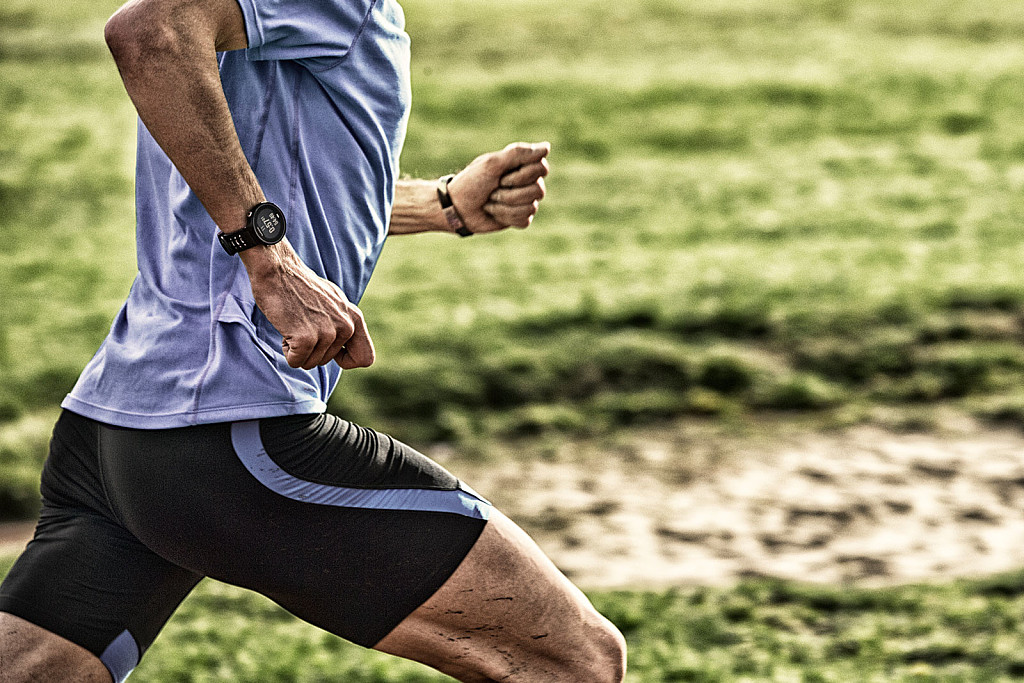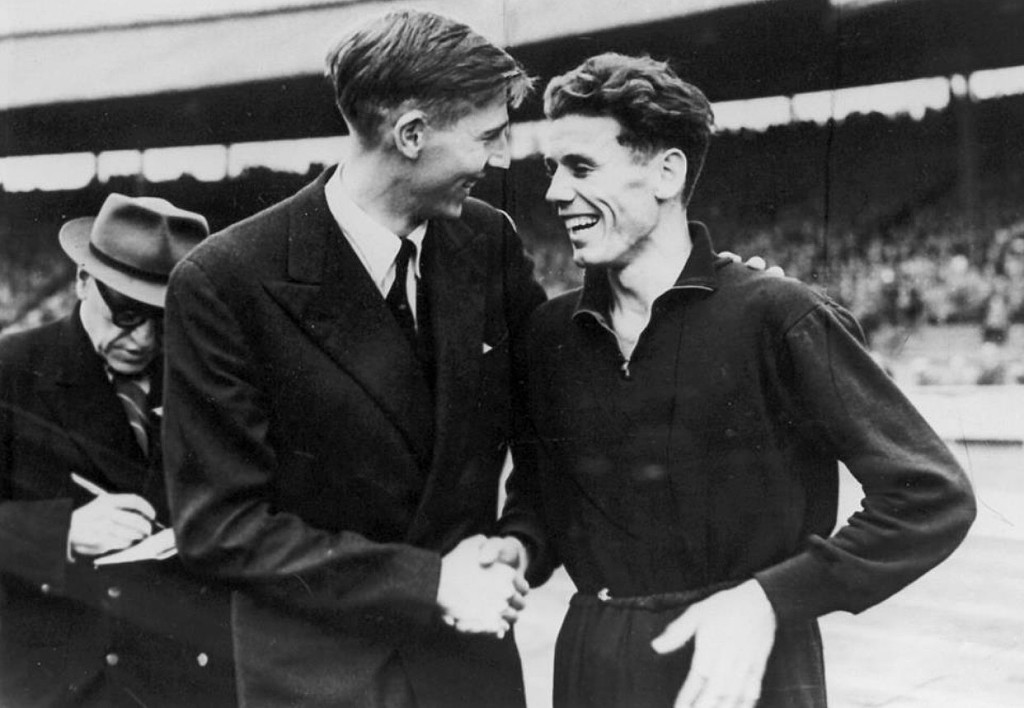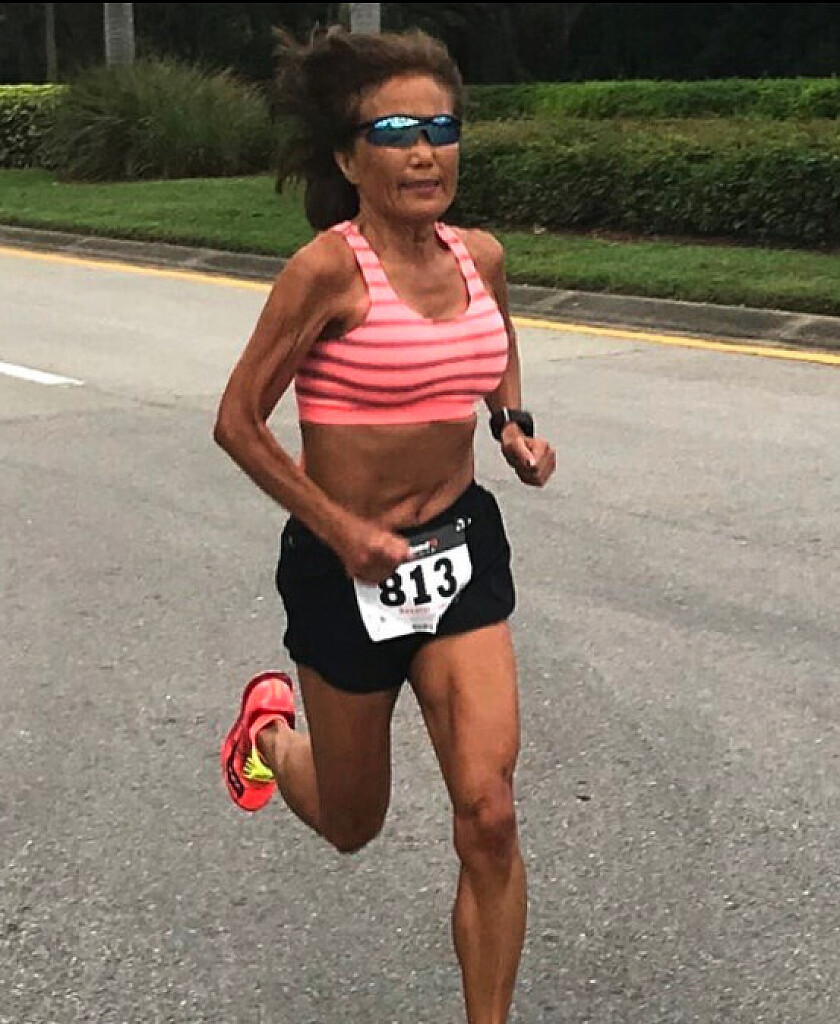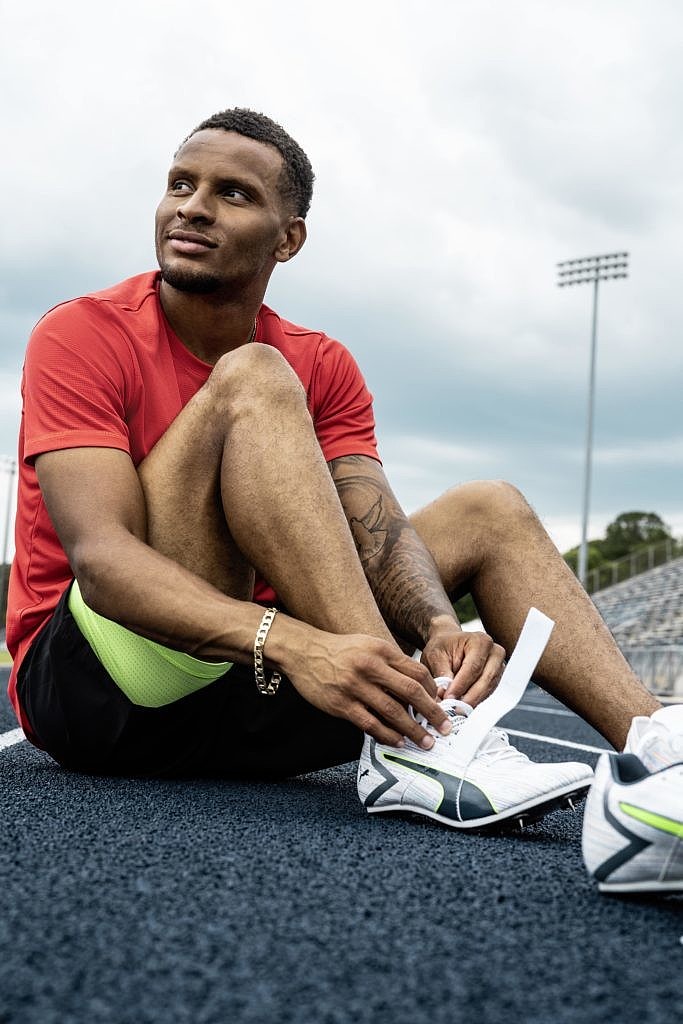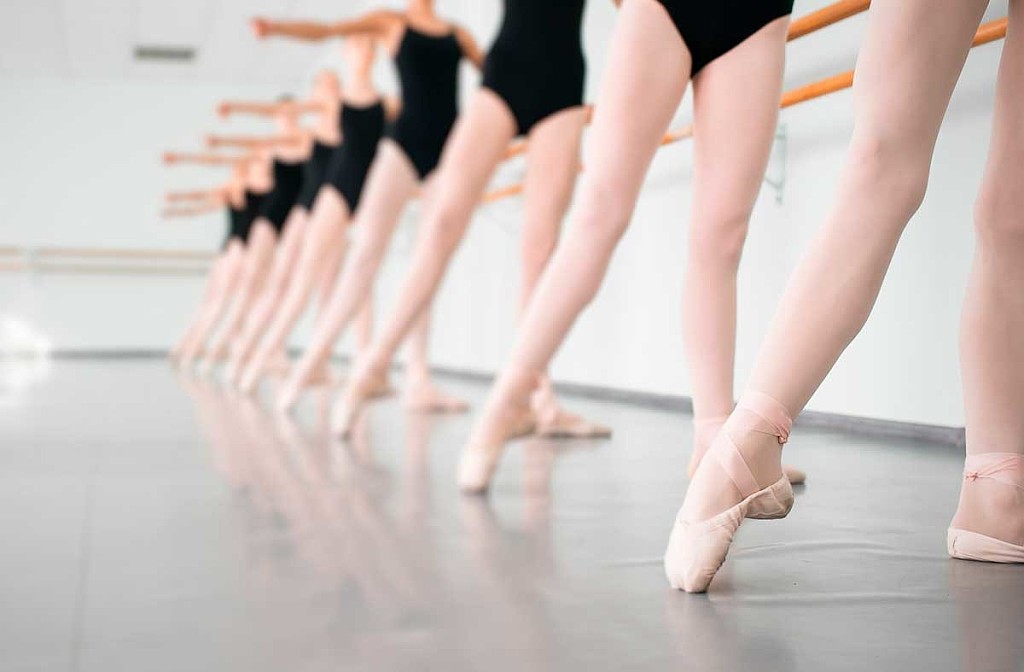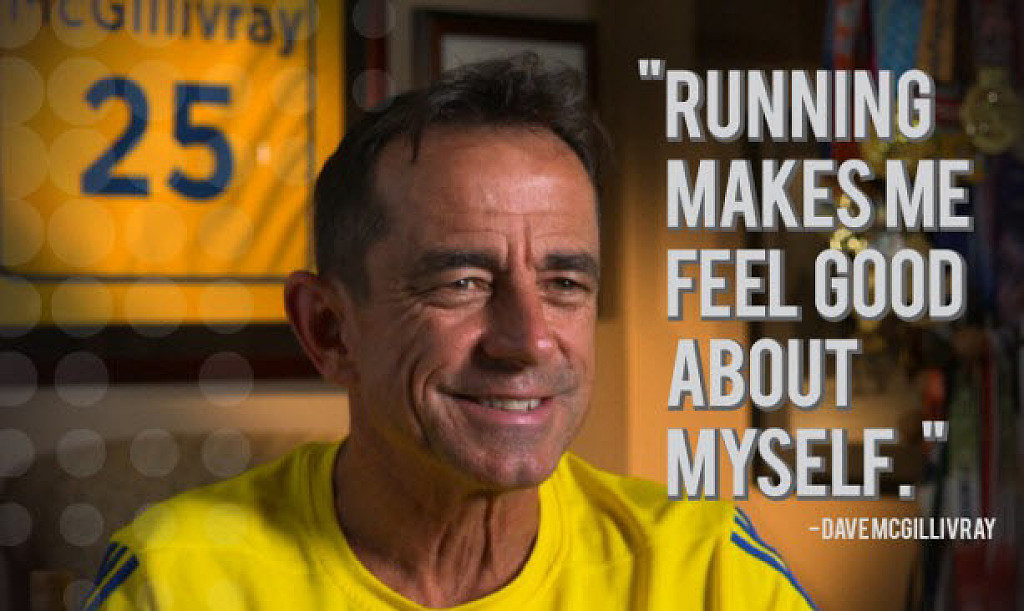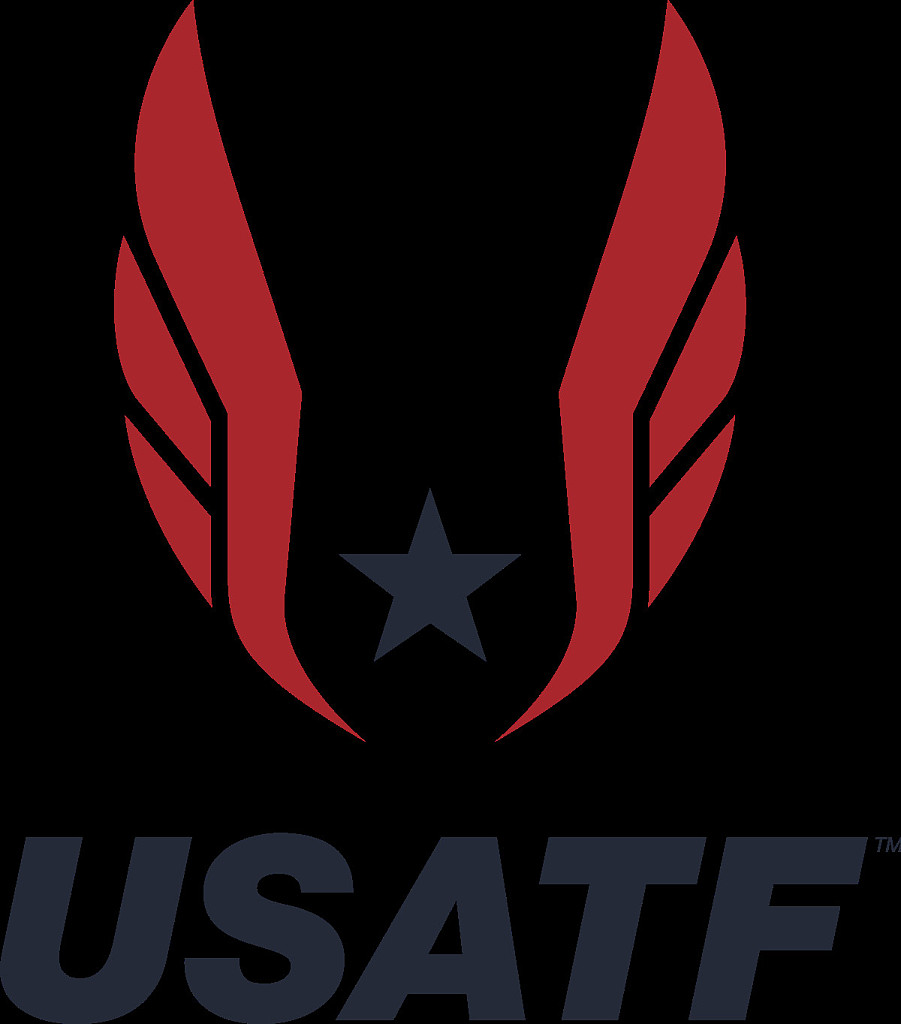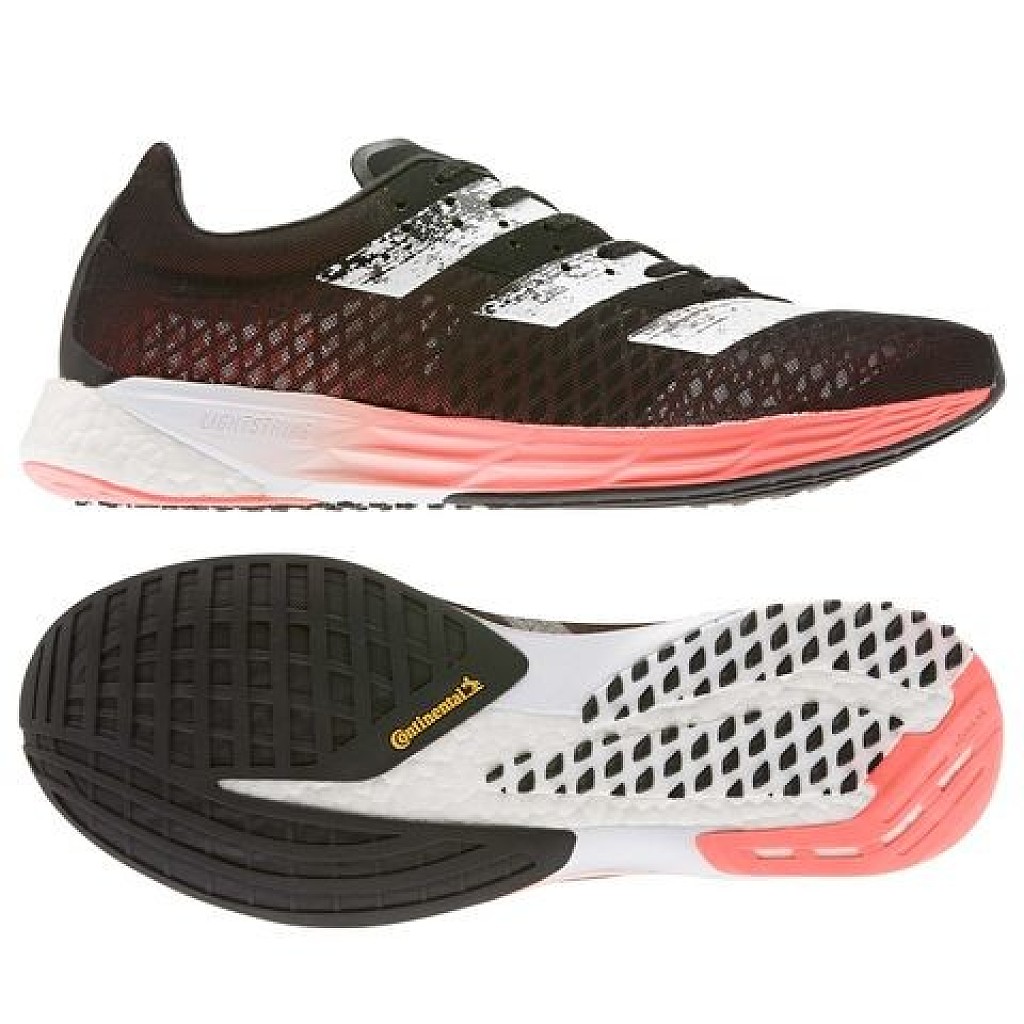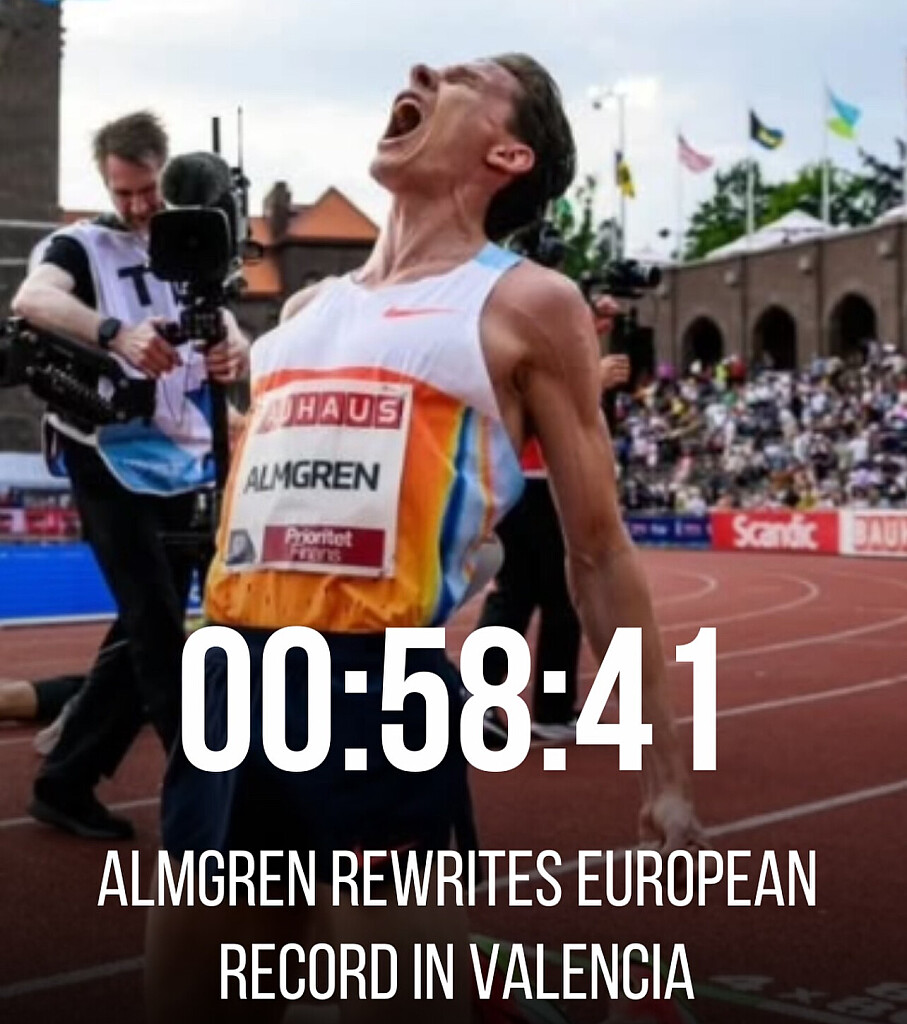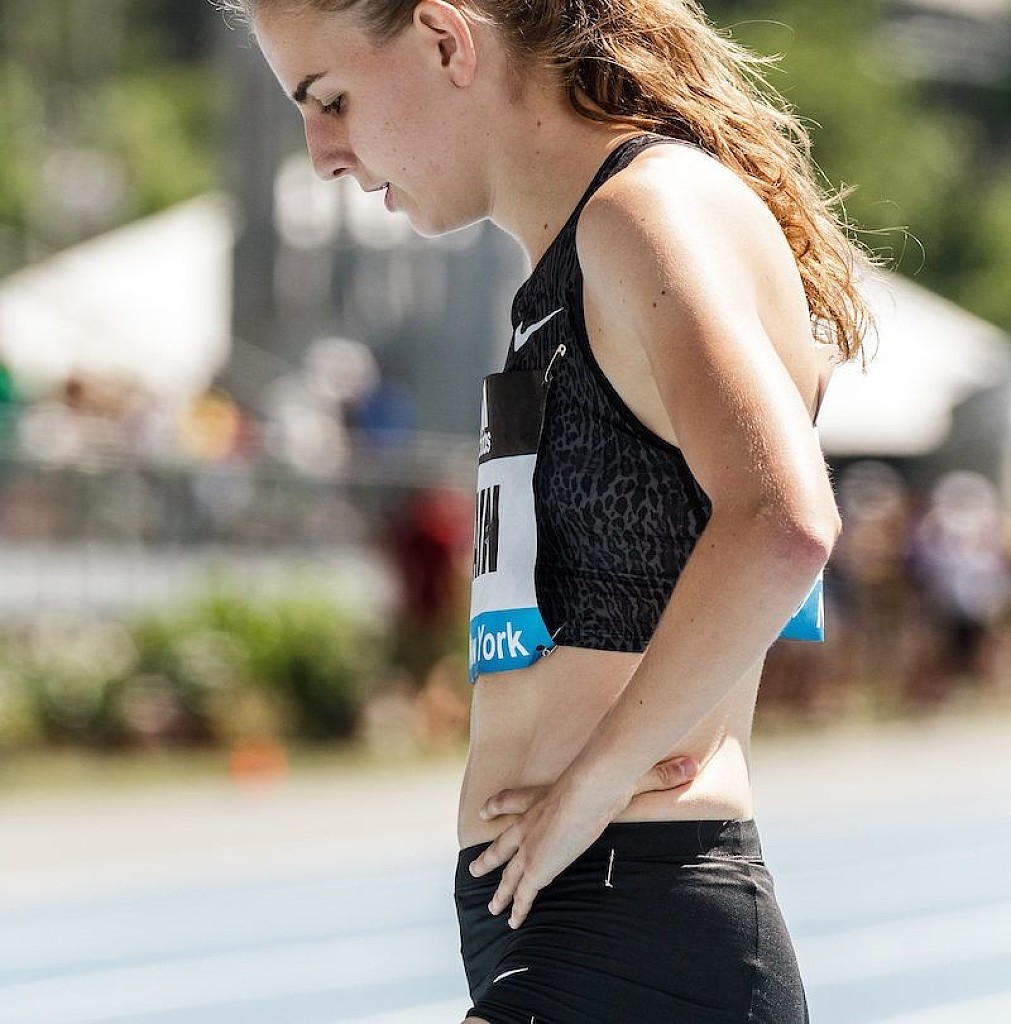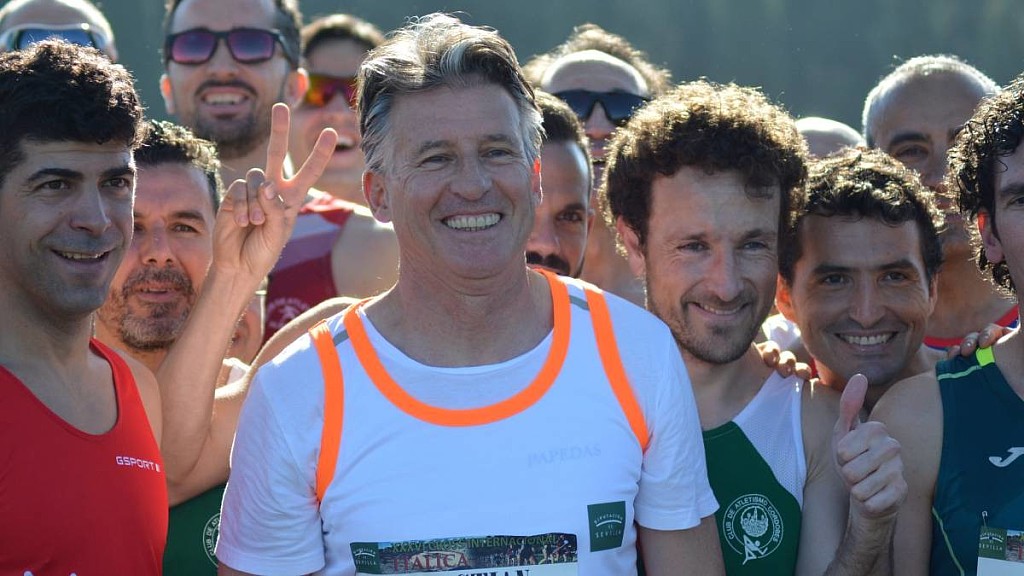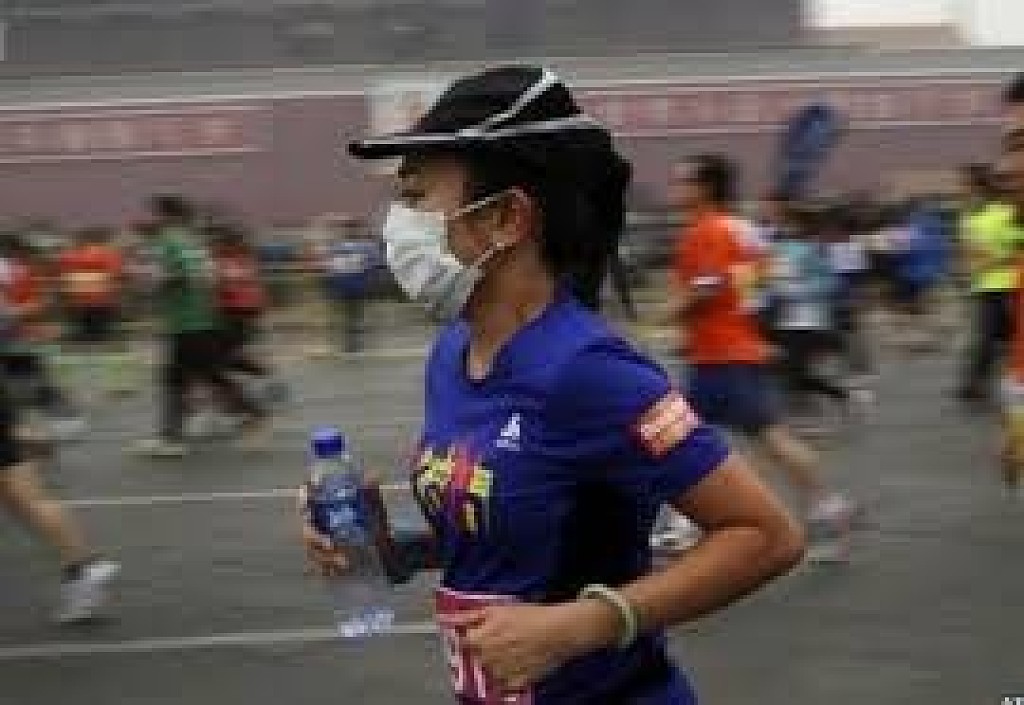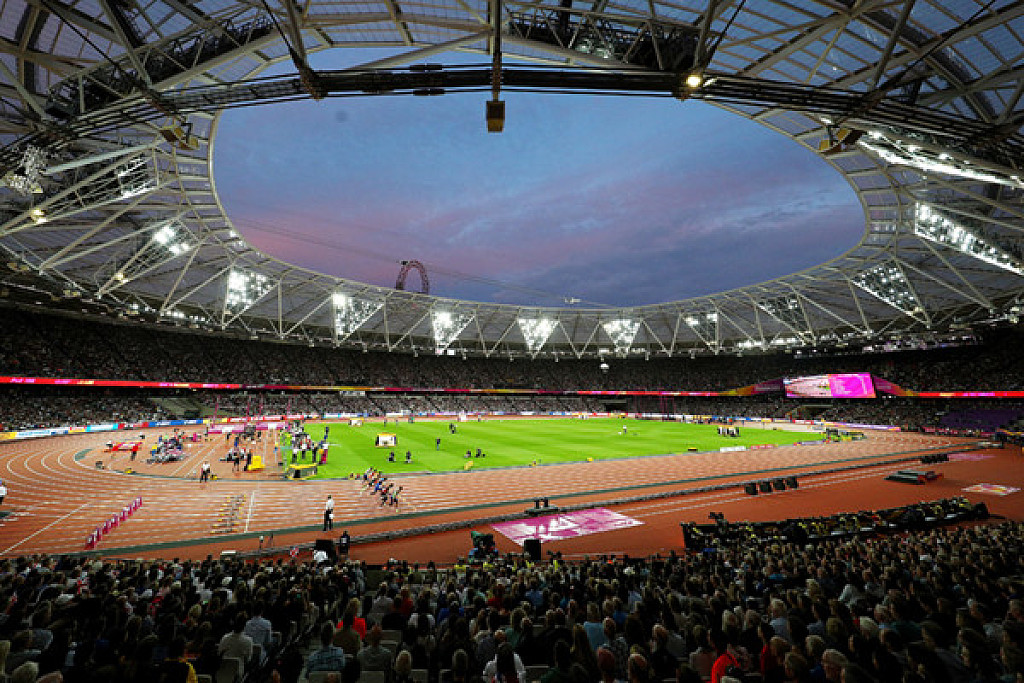Running News Daily
All Time List
These are the all time top 100 stories based on views.
NYRR the nations largest nonprofit running association, announced on July 21 that it is laying off 11 percent of its workforce and furloughing another 28 percent, as the coronavirus continues to wreak havoc on the running industry
New York Road Runners is reportedly laying off 11 percent of its workforce and furloughing another 28 percent.
Runners World reports 26 people were let go and 65 were furloughed.
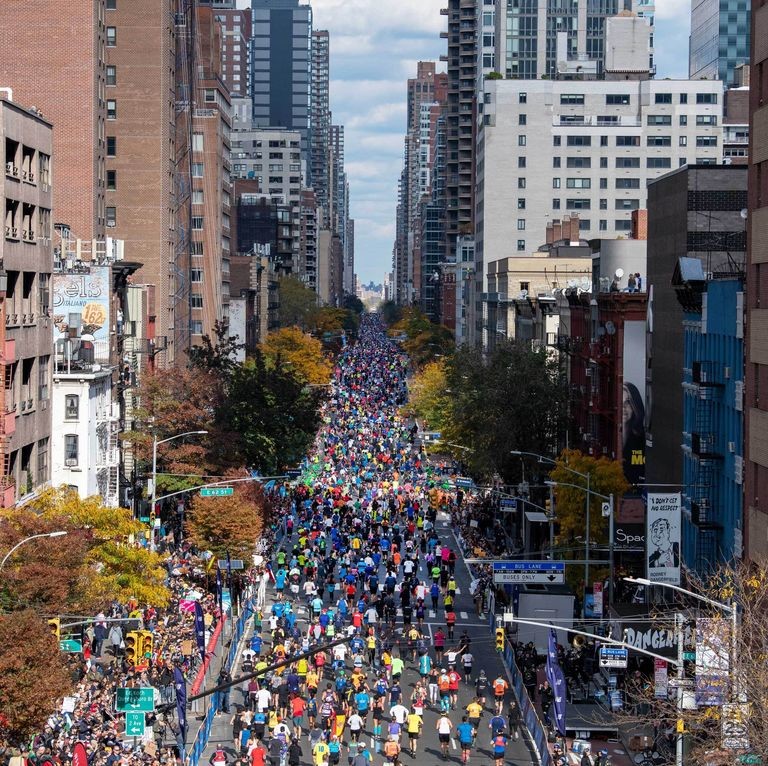
The moves affect 91 of the organization’s 229 employees—65 were furloughed and 26 were let go.
Since the pandemic began in March, NYRR officials have had to cancel more than 20 races, including the New York City Marathon in November, which was to have been its 50th anniversary.
Every year NYRR hosts some of the largest races in the world. In addition to the marathon, it holds the NYC Half, the women’s Mini 10K, and the Brooklyn Half, as well as dozens of smaller events at all distances throughout the five boroughs of New York City and in New Jersey. It also brings running to thousands of people every year outside of racing, with programming for children, seniors, and athletes with disabilities.
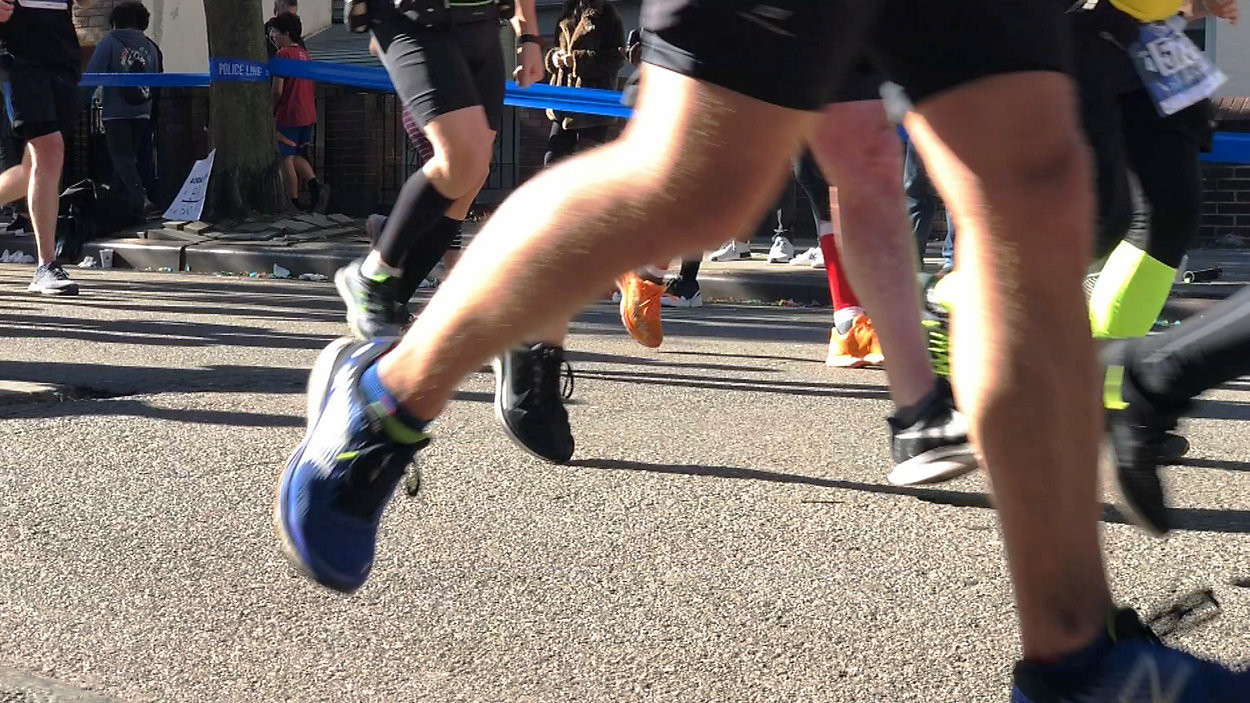
NYRR was a recipient of a PPP loan of between $2 million and $5 million when COVID-19 first hit, which, combined with budget cuts, allowed the organization to keep employees for five months.
This comes less than a month after the group announced it had to cancel this year's New York City Marathon due to the pandemic.
It's one of 20 races that have been canceled since March.
Top executives are taking a 15 percent pay cut and the president and CEO is taking a 20 percent cut.
New York Road Runners is the nation's largest nonprofit running association.
(07/23/20) Views: 51,667The movie, Forrest Gump was released on July 6, 1994, it won six Oscars and became one of the most popular running films of all time
It was 25 years ago Saturday that Robert Zemeckis’s film Forrest Gump opened to wild acclaim and became one of the world’s best-loved running films.
Based on a novel by Winston Groom and adapted for the screen by Eric Roth, the movie concerns a simple-minded but wise man (played by Tom Hanks) who overcame childhood polio to become an endurance runner, on a whim, and went on to participate in some of the most significant events of the 20th century.
One day Forrest just starts running, and ends up running from his home in Alabama to the California coast, then back across America to the Atlantic. He runs back and forth across America for three years, two months, 14 days and 16 hours. And he inspires others to run, as well.

The movie most likely appeals to endurance runners in particular because of Forrest’s stripped-down approach. When asked by reporters if he was running for world peace, or the homeless, or women’s rights, or the environment, or for animals, Forrest replies, “I just felt like running.”
“They just couldn’t believe that somebody would do all that running for no particular reason,” he narrates.
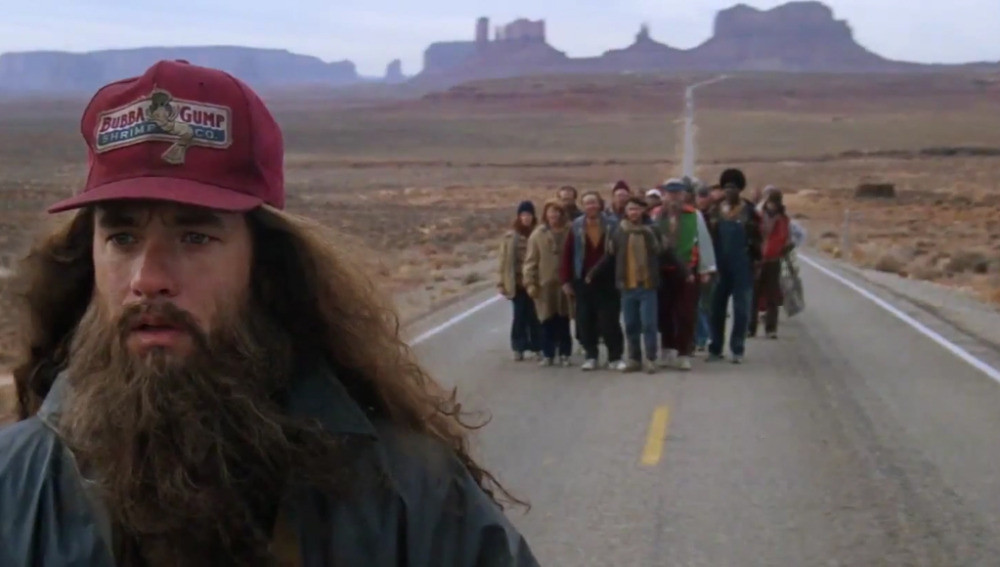
Of course, Forrest eventually gets tired of running, and quits as suddenly as he started, possibly having fulfilled his purpose of outrunning the past.
Forrest Gump won Academy Awards for directing, best picture, best actor, best adapted screenplay, best film editing and best visual effects.
(07/08/19) Views: 51,504Anne Francis
Nike has launched a video starring Caster Semenya that calls for acceptance and echoes its recent films featuring Raheem Sterling, Colin Kaepernick and Serena Williams
The Olympic 800m champion recently won a legal battle with the athletics governing body, the International Association of Athletics Federations, after it had banned the middle-distance runner unless she took hormone-suppressant medicine to control her testosterone levels.
Semenya has naturally elevated testosterone levels as a result of a condition known as hyperandrogenism and had lost a landmark legal case against the IAAF, something that she successfully appealed in the Swiss supreme court.
Nike's film promotes Athlete in Progress – a women's apparel collection by Off-White designer Virgil Abloh that debuted in September 2018 in Paris.
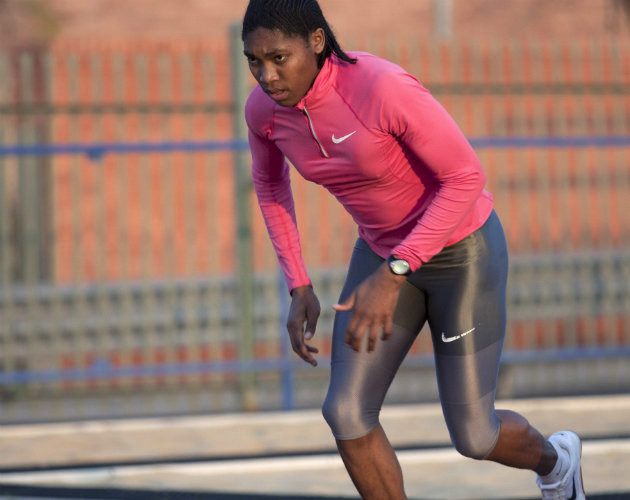
It follows Semenya running through the streets of Johannesburg in her native South Africa, talking about inspiring progress on and off the track. The theme centres on respect, love and acceptance.
Semenya closes with the powerful words: "I have learned to appreciate people for who they are, but first it comes with me appreciating myself and loving myself."
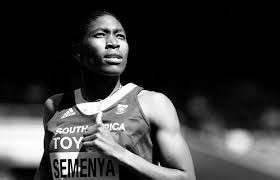
She has accused the IAAF of using her body "as a human guinea pig experiment" and has received support from the South African government and several global sports bodies, including the International Working Group on Women & Sport, WomenSport International and International Association of Physical Education for Girls and Women.
However, not everyone has stuck in her corner. British distance-running legend Paula Radcliffe has been a vocal supporter of the IAAF's position, while noting it was unfair on Semenya.
(07/03/19) Views: 33,129Arvind Hickman
Many of the top runners in the world come from Kenya and here is a good answer why
Kenya is known around the world as the home of champions and we wanted to know why. One tribe in Kenya that stands out more than others is the Kalenjins.
At the 1968 Olympics Kalenjin runner Kipchoge Keino defeated world-record holder Jim Ryun.
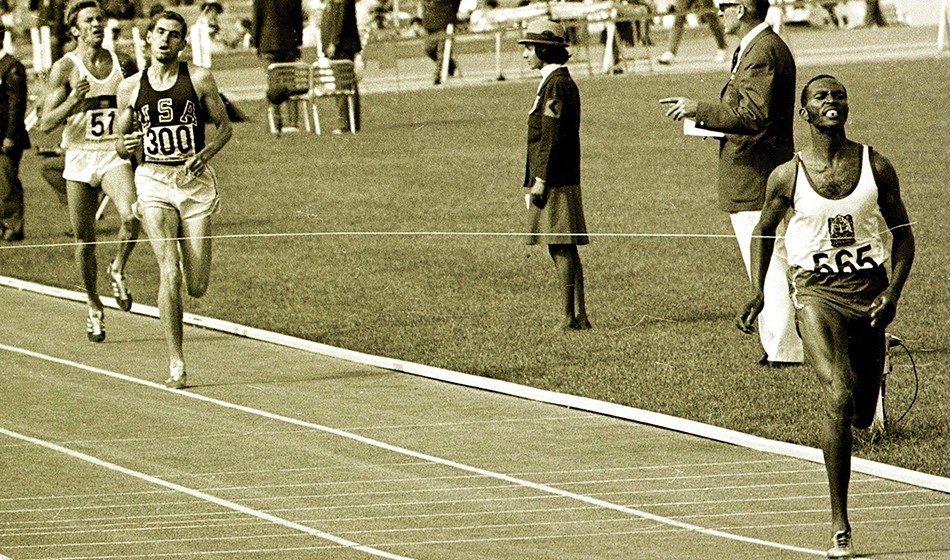
That day Keino not only won gold, but he also ushered in an era of Kenyan dominance. Since then a considerable number of the races are won by Kenyans and many world records are held by Kenyans. Many of these runners are of the Kalenjin tribe.
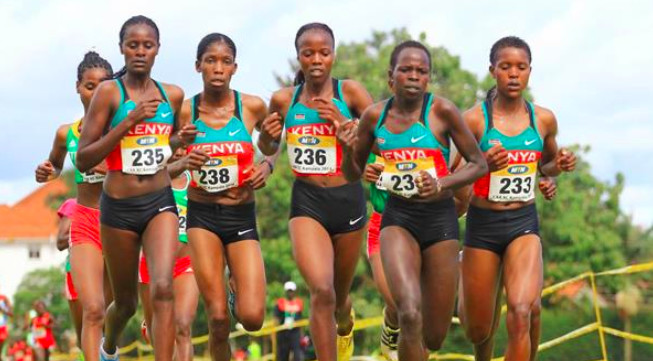
The feats have just bafflled the world. David Epstein a renown sports editor who authored a book called “The Sports Gene'” noted that many world-class runners in Kenya come from the tribe of Kalenjins. In his book, he explores possible genetic factors that might be the reason behind this.
He notes that Kalenjins have thin ankles and calves which makes their legs resemble a pendulum and eases their movement. According to his explanation, the more weight you have farther away from your center of gravity, the more difficult it is to swing.
The vice versa applies to Kalenjins. Some studies have also discovered that Kenyans, in general, have less mass for their height, longer legs, shorter torsos and more slender limbs. These physical traits can be viewed as relatively “streamlined” and improve efficiency while running.
Lastly, there is a controversial cultural argument that Kalenjins become great runners because they ran several miles to and from school barefoot on a daily basis.
(04/13/18) Views: 28,223The 1907 Boston Marathon Winner Tom Longboat earlier hated life at a state-run school and ran away
DID YOU KNOW: Tom Longboat was born 131 years ago (June 4, 1887). In 1907 he won the Boston Marathon in a record time of 2:24:24 over the old 24-1/2 mile course, four minutes and 59 seconds faster than any of the previous ten winners of the event.
The next year he collapsed in the 1908 Olympic Games marathon, along with several other leading runners. A rematch was organized the same year at Madison Square Garden in New York City.
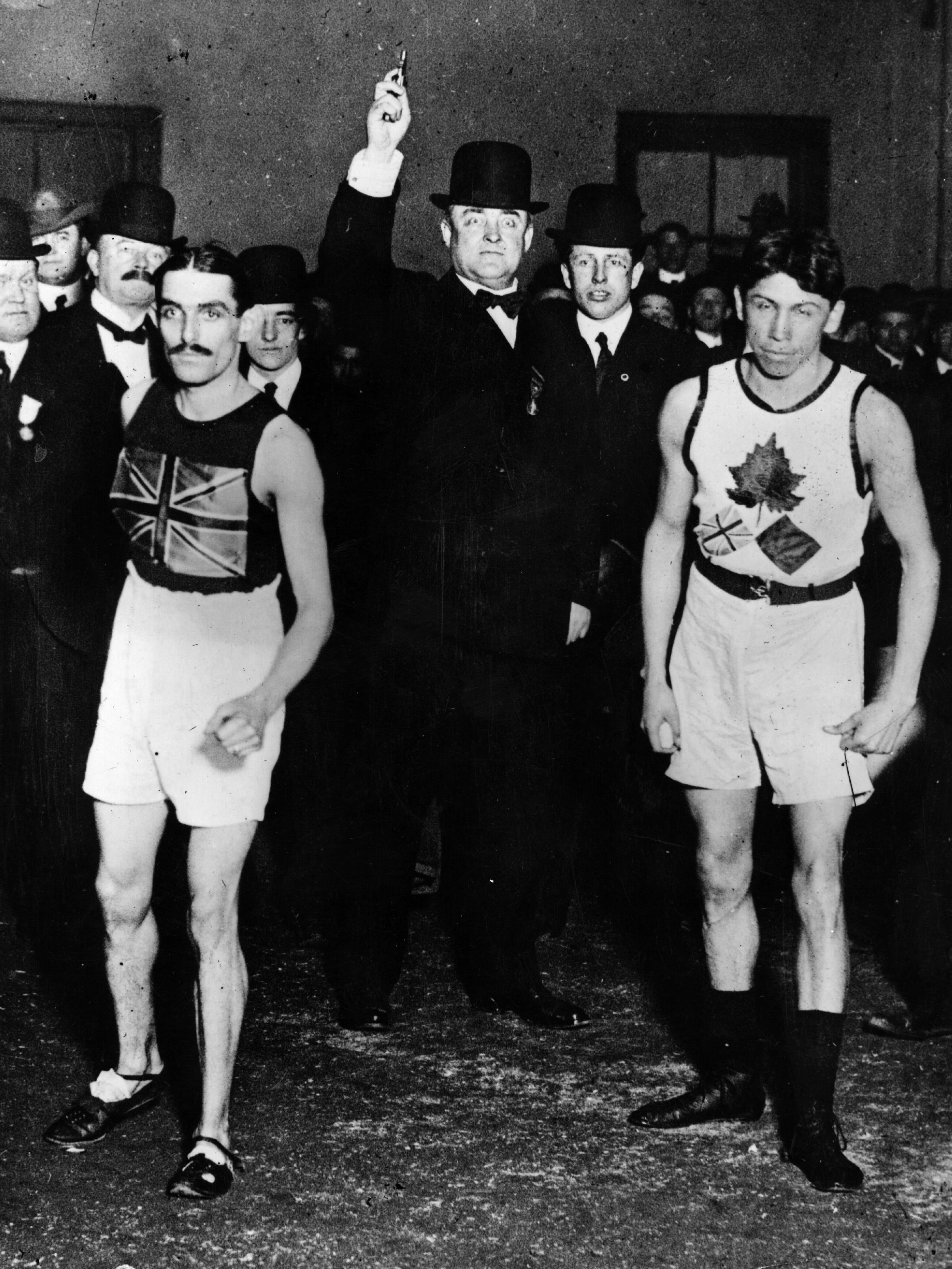
Longboat won this race, turned professional, and in 1909 at the same venue won the title of Professional Champion of the World by defeating Dorando Pietri and Alfred Shrubb in front of sell-out crowds.
The Onondaga athlete was one of thousands indigenous children in Canada to be separated from their families and forced into a state-run education in the country's residential school system.
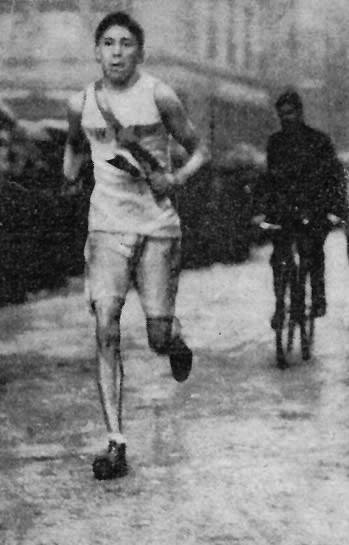
Longboat, rebelled against being forced to speak English and to abandon his indigenous beliefs in favour of Christianity. He hated life at the school.
After one unsuccessful escape attempt, he tried again and reached the home of his uncle, who agreed to hide him from authorities. After his athletic successes, he was invited to speak at the institute but refused, stating that "I wouldn't even send my dog to that place."
Longboat, from Ontario's Six Nations reserve, also served as a dispatch carrier in France during World War One. He was inducted into the Canadian Sports Hall of Fame in 1955.
After the war, Longboat settled in Toronto where he worked until 1944. He retired to the Six Nations Reserve and died of pneumonia on January 9, 1949.
(06/05/18) Views: 26,256Kip Keinoa grandson Julius Keter won Chip Gaines New Marathon and $15,000
Julius Keter comes by running naturally since his grandfather is Kip Keino, the legendary Kenyan who won the 1,500 meters in a famous race against Jim Ryun of the United States in the 1968 Summer Olympics. Keter is also a fan of “Fixer Upper,” so running in the inaugural Silo District Marathon was perfect for him Sunday morning.
Running strong from start to finish, Keter won the marathon against a talented international field for the $15,000 first-place prize. He clocked 2:16:26.
The event drew 6,000 entrants with total prize money of $88,000, a big purse which attracted runners from all 50 states and seven countries. While 3,150 competitors entered the 5-kilometer race and 2,150 runners signed up for the half-marathon, the marathon featured 750 entrants that included some top-shelf talent from across the world. “Fixer Upper’s” Chip Gaines also ran his first marathon, which held great appeal to an estimated crowd of 18,000 that crammed into the Silos area beginning at 6 a.m.
Gaines stood on a table wearing a tool belt with wife Joanna at the start of the race. The women’s marathon winner was Shewarge Alene Amare who has a goal to compete in the 2020 Olympics for Ethiopia. Like Keter, she brought home $15,000 in prize money after coming in at two hours and 38 minutes. “I’m so proud to be in the first marathon here and I’m so happy for the victory,” Amare said. “I entered the race two weeks ago. I’ll do some races and then go back to Ethiopia.”
(05/07/18) Views: 25,865Under Armour brand is manufacturing face masks for hospital workers amid Coronavirus
Under Armour is the latest brand to pivot production to assist in the fight against novel coronavirus.
The Baltimore-based footwear and apparel brand announced on March 31 it plans to manufacture and distribute more than 500,000 fabric face masks while assembling and distributing 50,000 specially equipped fanny packs to support the 28,000 healthcare providers and staff that comprise the University of Maryland Medical System (UMMS).
“This is an unprecedented time. Companies with the ability to innovate and provide resources to make a difference are needed now more than ever,” Under Armour CEO Patrik Frisk said in an e-mail. “Our partners at the University of Maryland Medical System and other medical organizations on the frontlines of this pandemic are facing a new kind of challenge. We hope to deploy our heritage in helping make athletes better—as well as our legacy of local community support—in this new way to help the heroic healthcare workers as they make the lives of all better every day.”
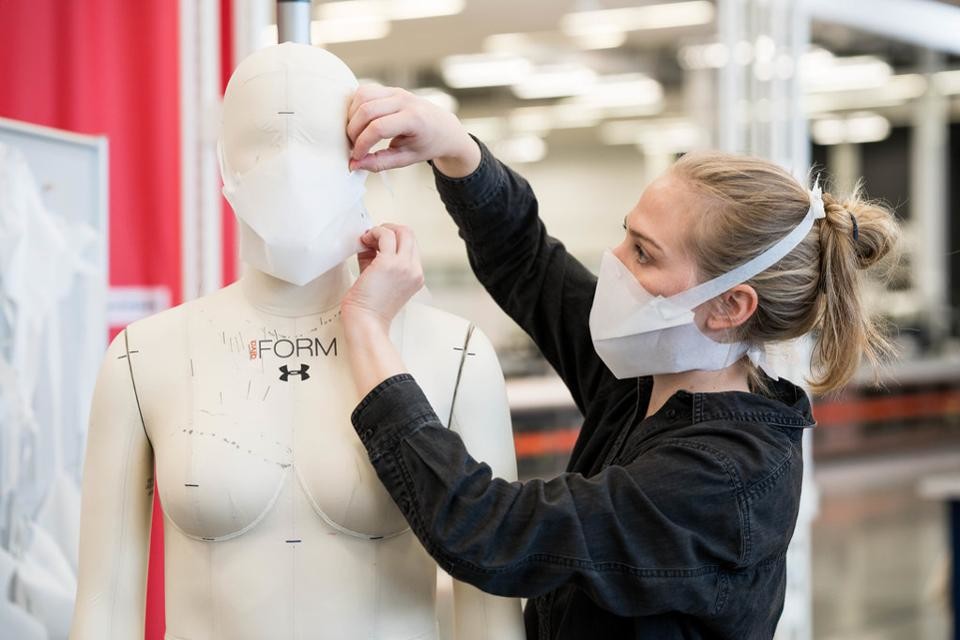
The United States is currently facing a face mask shortage as novel coronavirus continues to sweep through the nation; as of 9:20 a.m. March 31 there are more than 161,000 confirmed cases of COVID-19 and more than 3,000 deaths.
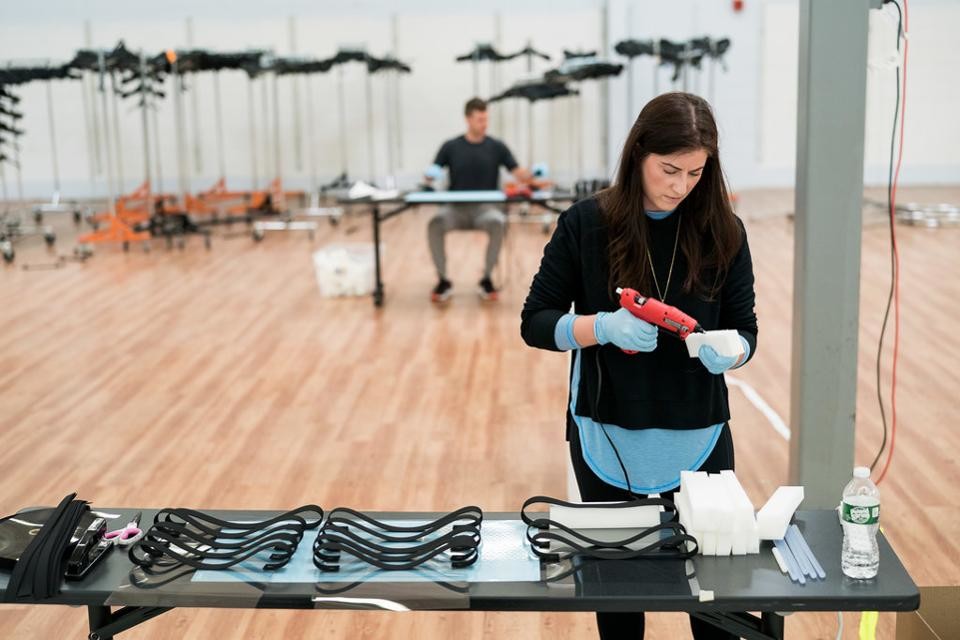
With numbers rising and the demand for medical equipment also increasing, various sports companies have stepped up to contribute during these unprecedented times.
Fanatics announced on March 26 it is partnering with Major League Baseball to support emergency personnel in the fight against novel coronavirus by making hospital face masks and gowns out of the same material used to make baseball jerseys. Nike announced on March 25 it is prototyping personal protective equipment including face shields with guidance from healthcare workers at Oregon Health & Science University. New Balance is producing prototypes for face masks out of its manufacturing facility in Lawrence, Massachusetts, with the hopes to scale production throughout its other New England factories soon.
Under Armour designed a one-piece face mask that doesn’t require sewing. The mask’s origami-style folds mold the fabric into the desired mask shape. Under Amour senior vice-president of advanced material and manufacturing innovation Randy Harward estimates the company can generate as many as 100,000 masks per week moving forward utilizing its knife cutter which can carve nearly 100 pieces of fabric at once.
The brand is not only helping supply healthcare providers and staff at UMMS, it has begun providing face masks to LifeBridge, a regional health care organization based in Baltimore, and is in discussion with Johns Hopkins Medicine, MedStar and other local medical institutions regarding supplies.
Under Armour, which is exploring 3-D printing N95 and N80 masks for medical professionals, has already delivered 1,300 face shields to UMMS.
“Ensuring the health and safety of our medical staff and patients is our first priority,” said Dr. Mohan Suntha, president and CEO of University of Maryland Medical System. “The national shortage of personal protective equipment has put our hospitals—and every other hospital in the country—under intense pressure to manage supplies while delivering care in a setting that is safe for our patients and employees.
(04/04/20) Views: 24,855Michael LoRé
The Secret Psychology of Sneaker Colors
Aqua blue, acid lime and grape purple. Electric orange interspersed with neon pink. Gray suede and cheetah print mixed with white and gold. These are not descriptions of a minimalist’s worst nightmare, but rather new color combinations from Adidas, Reebok and New Balance. And they are jarring by design.
In the age of the infinite scroll and the era of sneaker culture, where the competition to make the hottest, rarest, most wanted kick is more intense than ever, the shoe that clashes shades with the most force stops traffic — at least of the online kind. As a result, athletic shoe companies are increasingly becoming fluent aficionados of that old art: color theory.
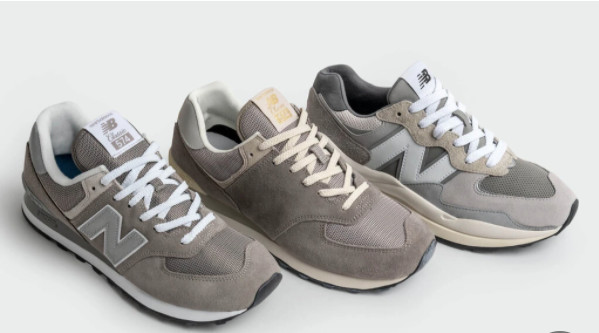
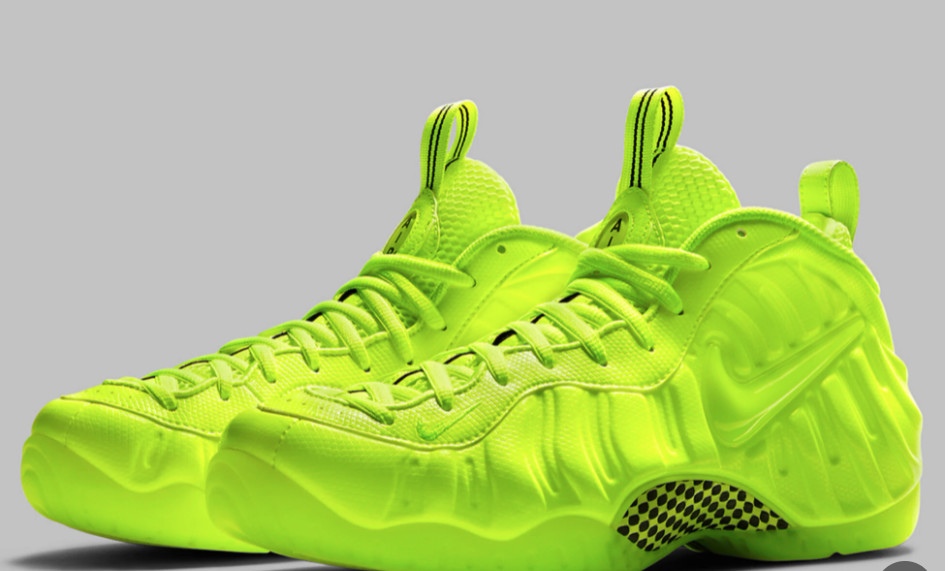
The links between color and emotion have been studied for centuries, from Carl Jung’s color coding of personality traits to focus groups evaluating the ways in which candy colors can affect perceptions of flavor. Drug companies color their pills “cool” or “hot” according to desired effect (hypnotics are often blue or green, antidepressants yellow), and we use SAD lamps in winter to replicate the energizing qualities of a sunny day.
Little wonder that sneaker brands have departments dedicated to manipulating minuscule shifts in shades, as well as engineering the visual equivalent of a crime scene so you rubberneck online. It’s their mission to create feelings and accelerate business.
“Between 70 percent to 90 percent of subconscious judgment on a product is made in a few seconds on color alone,” said Jenny Ross, the head of concept design and strategy for lifestyle footwear at New Balance. “It can excite or calm us, it can raise our blood pressure. It’s really powerful.”
So while the bread and butter of most brands remain the basics — the Nike Air Force 1 was the best-selling sneaker of 2020, and its default is all white — the pieces that power the continued churn and buzz are the limited-edition collectibles that tap into our subconscious to create desire.
Sometimes the triggers are obvious: The use of Varsity Red, for example, summons up Ferris Bueller collegiate nostalgia; gold and purple call to mind a Lakers game; and white is associated with racket sports. But in fashion, color is also your brand. Fendi is yellow, Hermès is orange and Tiffany is blue. Thus sneaker brands toggle between their core colors and wild experimentation.
New Balance, for example, is rooted in gray, omnipresent every season, suggestive of the urban running shoe, riffing on concrete. “Doing gray right is something we take a lot of pride in,” Ms. Ross said. “Every gray on our color ring has a character and personality: Castle Rock is warm; Steel is a blue tone. With legacy models, we make sure our tanneries never stray. They replicate with precision.”
At the other end of the dial is Nike, with its neon lime Volt color, first seen at the 2012 Olympics. To some it is heinous, to others a masterstroke. “That was an intellectual and scientific choice for Nike,” said Bryan Cioffi, Reebok’s vice president for footwear design. “The first color you read in your optical receptors is that super-bright lime. It’s possibly an evolutionary take from poisonous animals and signals danger. A physical thing happens when you see it. Nike triangulated that and repeated it forever.”
Repetition is how you win the color game. You may see Volt and recoil, but you’ll always think “Nike.” As colors go, it is a paradigm for brand marketing. “We did a complete technology innovation study about how color showed up on HDTV and sports tracks,” said Martha Moore, a Nike vice president and creative director. “We were studying the idea of speed and what color complemented that in the vibration of the human eye. Volt is emotional.”
After a year of living our lives almost wholly online, pixel coloration has become even more key. “We are developing colors that appear lit from within,” Ms. Moore said. “Pixels sitting next to one another create previously unseen colors. They create new neutrals and complex combinations. We are using complex knits of yarns, with bright spots and glows that haven’t been seen before.”
Indeed. “We are seeing a particularly positive response to dialed up pastels and strong yellow,” said Heiko Desens, the global creative director of Puma. “Things that speak of energy and positivity.”
That new energy is everywhere. For example, the Yeezy Boost 700 Sun shoe, introduced in January, is a blaze of yellow and orange that is a world away from the beige associated with Yeezy of yore. Hardcore Rick Owens fans may own numerous black pairs of his Dunks, but the new season’s Geo Baskets in bubble gum pink throw a curve ball and flip the dark Owens aesthetic.
(05/29/21) Views: 24,220Beet juice enhances athletic performance giving to the athletes an amount of nitrate in a natural food source
Runners have experimented with a broad array of aids in pursuit of a performance edge. A popular one today that seems safe and backed by solid data is the juice of beets, for the nitrates they contain.
Inorganic nitrate is added to cured and processed meats to extend their shelf life and give them their distinctive pink color. It’s also naturally found in spinach, arugula and beets. In the past decade, new evidence has suggested that the nitrate in these vegetables enhances athletic performance and may also increase cardiovascular health in old age.
The first clue came in 2007, when Swedish researchers reported that three days of sodium nitrate supplementation lowered the oxygen demand of nine cyclists and triathletes as they worked out, compared with a placebo of table salt. It also increased the blood plasma levels of nitrite, a byproduct of nitrate.
That study caught the eye of exercise physiologist Andrew Jones of the University of Exeter in England. Usually, the oxygen demand of exercise is fixed, he says, so for a short-term intervention to change that “was unusual.”

Although it wasn’t clear how nitrate was doing what it did, Jones knew that green leafy vegetables and beets were rich sources. So he conducted a study, reported in the Journal of Applied Physiology, giving eight men active in recreational sports an equivalent amount of nitrate in a natural food source like beet juice.
The volunteers consumed 500 ml (17 ounces) of beet juice every day for six days. Then, after a break of 10 days, the groups were switched around and drank another drink for an additional six days.
By the last three days of the six, nitrate concentration in the blood of those drinking beet juice was almost doubled and their systolic blood pressure (which measures the pressure in your blood vessels as your heart beats) fell by an average of 6 points. The oxygen cost — the amount of oxygen consumed — when they exercised on a stationary bicycle was reduced by 19 percent.

“When we asked them to continue to exercise to exhaustion, they were able to go longer,” recalls Jones, who co-wrote a review on dietary nitrates in the 2018 Annual Review of Nutrition.
From then on, research on beet juice, beet juice concentrates, whole beets and nitrate salts started to pour in.
Nitrate itself doesn’t do much in the body. It first has to be converted to nitric oxide, a gas with numerous physiological roles — in blood vessel dilation, muscle contraction and transmission of nerve signals, among others. People obtain that nitric oxide in two ways: either through the action of the enzyme nitric oxide synthase, which catalyzes the amino acid L-arginine to produce it, or from nitrate ingested in food.
(04/30/19) Views: 23,026Rodrigo Pérez Ortega
Does NIKE'S Vaprofly really improve performance by 4%?
Created in conjunction with Breaking2, Nike’s attempt to enable the first sub-two-hour marathon, the Nike Zoom Vaporfly 4% was designed with the goal of helping the world’s fastest marathoners run their best.
The tooling features new Nike ZoomX foam that is ultra-lightweight, soft and capable of providing up to 85- percent energy return. Shalane Flanagan wore this shoe and won the NYC marathon, the first American woman in forty years.
(11/28/17) Views: 22,584Should Caster Semenya be forced to lower Testosterone levels to compete in Tokyo?
Caster Semenya is very much in the news lately. We have already published two stories about the new IAAF rule which will require Caster to take testosterone-lowering medication in order to compete on an international level.
Per the report: "The IAAF, will reportedly announce the creation of a new female classification to be known as Athletes with Differences of Sexual Development, which includes those with Hyperandrogenism, such as Semenya.
"From November 1, 2018, athletes who fit into that classification will be forced to undergo testosterone-lowering treatment."
Caster was born with this medical condition. Caster is a South African middle-distance runner and a gold medalist and for sure could easily pass for a man on the outside.
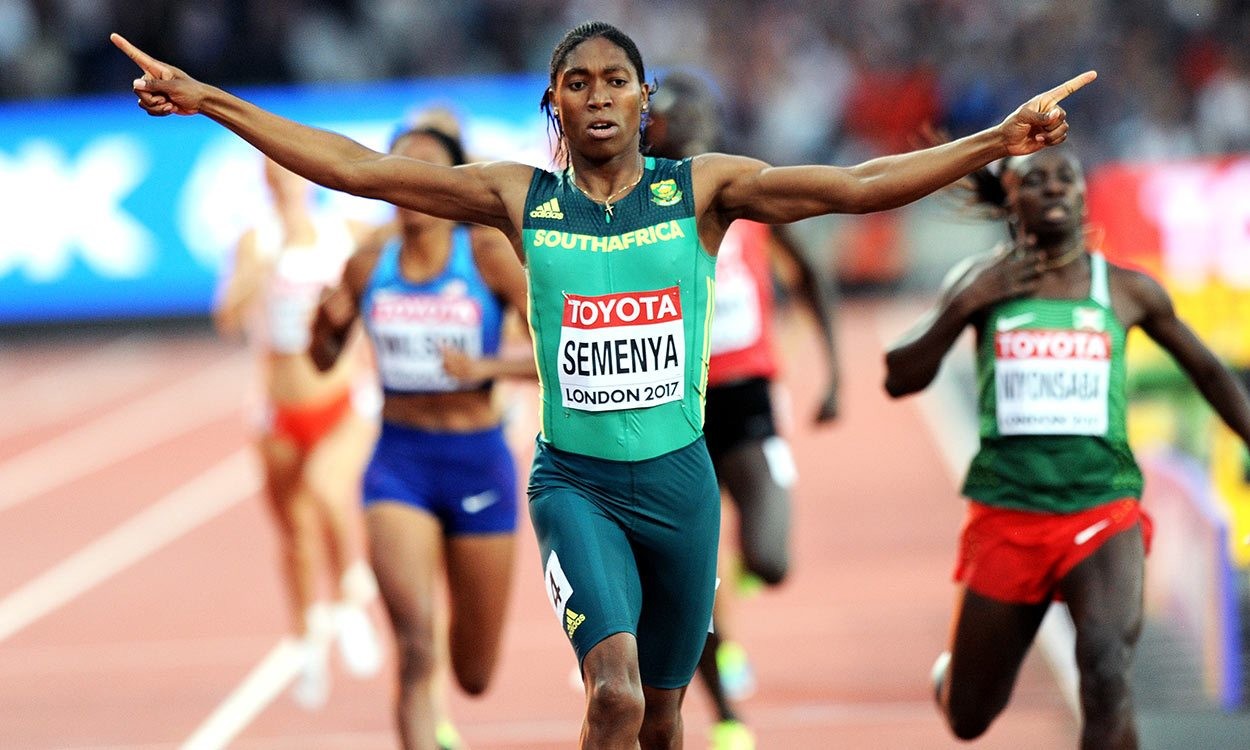
Last August Caster shared this story about her love story with her wife Violet Raseboya in a TV interview. "We met in a restroom in 2007. She was a runner and was being escorted by doping officials.
She thought I was a boy and said 'What is a boy doing in here?'" "I'm not a boy. You think I'm lost? You think I can just walk in here?" It took a while for them to start dating and Caster said it was her that told Violet about her feelings for her.
"We were in denial. She had a past. She had a boyfriend. (She) was trying to deny being in love with a woman" They got married in 2017.
This is a tough situation for the IAAF. Seb Coe just wants the competition to be fair. However, this is a medical condition a person is born with. Penalizing an athlete for a natural trait of her body does not seem right.
(05/01/18) Views: 21,936Bob Anderson
Netflix series ‘SPRINT’ brings speed, drama and glory
The highly anticipated Netflix sports series ‘Sprint’ comes at the perfect time – both for the sport and for the digital age – according to multiple world champion Noah Lyles.
‘Sprint’ takes viewers on an exhilarating journey through the highs and lows of athletes’ lives as they battle it out for gold at the World Athletics Championships Budapest 23.
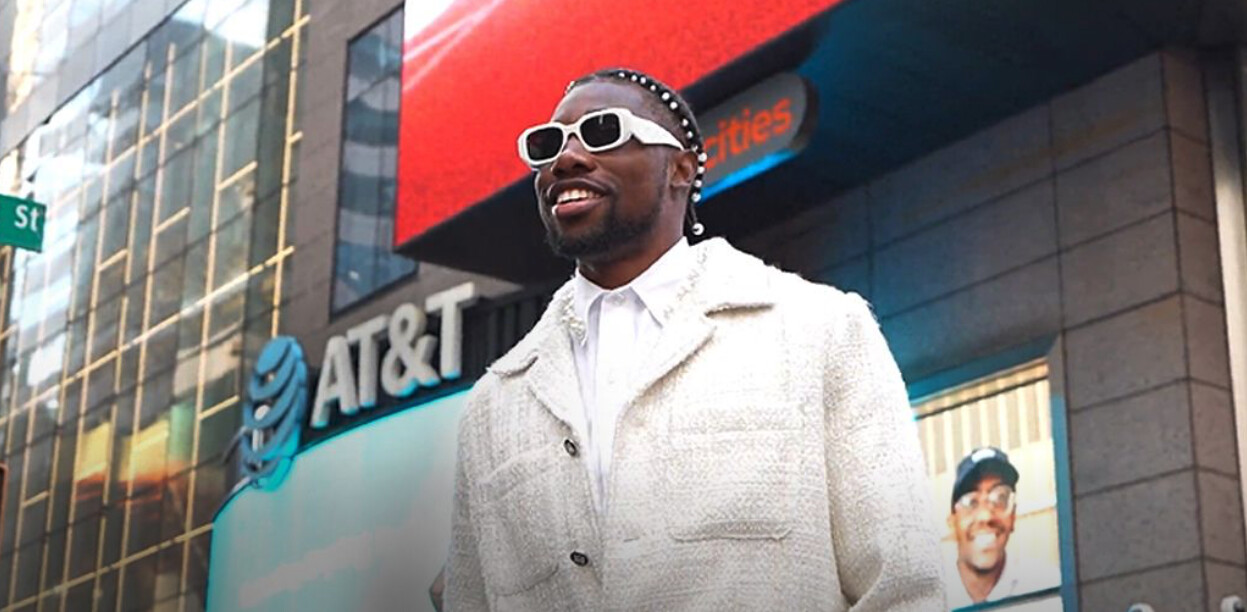
'Sprint’ shines a particular spotlight on the rivalry between Lyles, 2022 world 100m champion Fred Kerley and Olympic champion Marcell Jacobs in the lead-up to last year's World Championships. The series not only showcases the athletes’ personas, it also delves into their lives off the track.
It reveals, for example, how Lyles – one of several athletes featured across the six episodes of ‘Sprint’ – overcame serious health concerns in his teens to become the poster boy for sprinting. The growth and evolution of world 100m champion Sha’Carri Richardson is another key storyline throughout the series“Being part of ‘Sprint’ was an incredible experience,” said world 100m, 200m and 4x100m champion Lyles. “When I imagined the day where a docuseries would be created, I didn’t always envision me being the first person it would be about.”
Earlier this month, the series trailer was beamed across giant screens in New York’s Times Square ahead of an exclusive pre-screening at the Nasdaq Building in New York, where some of the stars of the show, along with other key figures in the sport, were treated to episodes one and five.
The full series is set to land on the Netlfix streaming platform and screens around the world on 2 July.
Speaking at the pre-screening, Lyles said that this series comes at the perfect time for the digital age that athletes are living in.
“We are rockstars in the top 1% and we live in the age of technology and social media,” he said. “It’s a part of our lives and we need an example of how the sport can go with it.”
Executive Producer Paul Martin expressed his enthusiasm and pride for the project. “It felt like a gift,” he said. “We’re incredibly grateful to be able to go into this world. It felt like we really wanted to go above and beyond to make the best version that we could. There was just something about doing justice to this sport and what these athletes put themselves through. World Athletics opened the door for us, for whatever we needed to get this series done.”
Ato Boldon, the 1996 Olympic 200m silver medallist, lauded the producers of the series, and forecasted that it will help expand the oldest sport in the world.
“We know we have some of the best athletes in the world, but we also know we have some of the best personalities in the world,” he said. “I look at this and say that this is going to open up a range of fans who casually follow these athletes, it’s going to grow our audience and engage fans that we didn’t even know we could get.”
(06/29/24) Views: 20,592
World Athletics
You Can Earn $1,250 If You Break This Time at the Hong Kong Marathon
However, the prize-earning time standards make it easier for male runners to earn cash than female runners.
Turns out, you don’t have to be a professional athlete to earn money from running. The Hong Kong Marathon on February 12 is giving out 10,000 Hong Kong dollars (about $1,277 USD) to every male finisher under 3:00 and every female finisher under 3:30 who are permanent residents of Hong Kong.
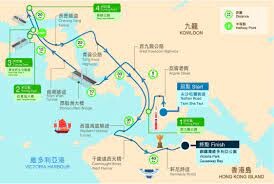
“We estimate there may be around 300 to 350 runners that can reach the standard,” Simon Yeung Sai Mo, senior vice-chairman of the Hong Kong Association of Athletics Affiliates, told South China Morning Post. That means the Hong Kong Marathon is prepared to give out nearly $400,000 in prizes to non-professional athletes.
In a email to Runner’s World, the Hong Kong Marathon shared the following statement:“The increase in prize money is a ‘one-off’ special award this year to celebrate the 25th edition of the Standard Chartered Hong Kong Marathon. Participants in the Marathon Challenge Category, who are also permanent residents of Hong Kong, finishing marathon under 3 hours (sub 3) for men and under 3 hours 30 minutes for women (sub 3:30) will be awarded with the Special Incentive Award HKD10,000, which is 10 times the amount of the same awards in previous marathons.”
According to numbers crunched by South China Morning Post, 147 participants finished below 3:00 in the men’s race in 2018. In the women’s race that year, there were only 52 runners that finished below 3:30.
The women’s time standard is more challenging than the men’s. According to World Athletics scoring tables, a 3:00 marathon by a male runner is equivalent to a 3:50:18 marathon by a female runner. The Hong Kong Marathon prize-earning standard for women is 3:30, so female runners have a harder challenge by 20 minutes—that comes out to 46 seconds per mile.
In the statement to Runner’s World, the Hong Kong Marathon clarified the reasoning for the standards: “Based on previous records, the men to women [participation] ratio is approximately 8:2.”
On the professional side, the Hong Kong Marathon offers $30,000 to the individual winners in the men’s and women’s races. Professional men who finish faster than 2:10 and women who finisher faster than 2:28 earn an additional $10,000. The course record bonus is $12,000; the men’s record stands at 2:09:20, the women’s at 2:26:13.
The Hong Kong Marathon first occurred in 1997. It has been run every year since, with the exception of 2020 and 2022 due to the coronavirus pandemic. Therefore, this year’s race is the 25th edition.
(01/29/23) Views: 19,630Runner’s World
A New York Times study finds the Nike Next% and Vaporfly could lead runners to improved odds of a personal best
The New York Times repeated, with a larger sample size, the study of the Nike Vaporfly that they conducted in 2018. Their updated study included the Nike Next% and the findings were surprising. We knew the Vaporfly and Next% were arguably some of the best shoes on the market, but the NYT finds that their current dominance is undeniable.
The New York Times repeated, with a larger sample size, the study of the Nike Vaporfly that they conducted in 2018. Their updated study included the Nike Next% and the findings were surprising. We knew the Vaporfly and Next% were arguably some of the best shoes on the market, but the NYT finds that their current dominance is undeniable.
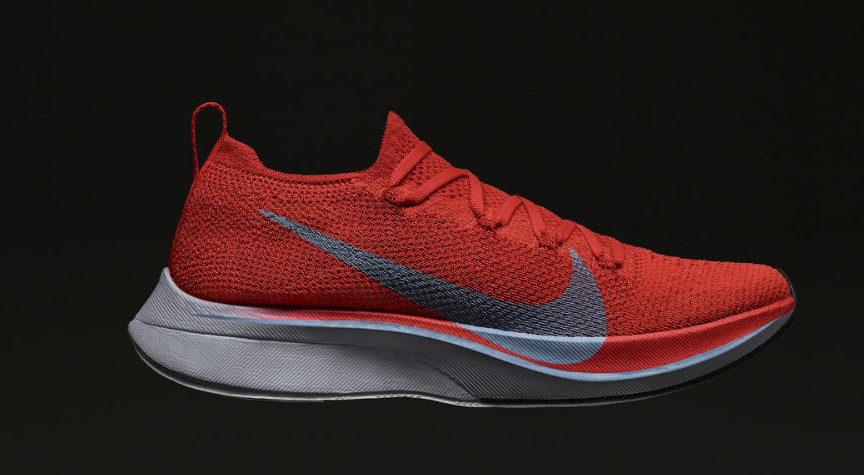
The study founds that, “The Zoom Vaporfly 4% or ZoomX Vaporfly Next% — ran 4 to 5 percent faster than a runner wearing an average shoe, and 2 to 3 percent faster than runners in the next-fastest popular shoe.” The name four per cent was born out of Nike’s finding that the shoe could make the wearer four per cent more efficient–efficiency translates to less effort at the same pace, which means a runner can go faster. So the claim that the shoe makes a runner faster as opposed to simply more efficient is new.
Another key finding was that men had a 73 per cent chance of running a personal best in the shoes, while women had a 74 per cent chance, “In a race between two marathoners of the same ability, a runner wearing these shoes would have a significant advantage over a competitor not wearing them.” The Times also reports, “In the final months of 2019, about 41 per cent of marathons under three hours were reported to have been run in these shoes (for races in which we have data).”
When someone first comes to running, they find that after the initial agony of getting your legs used to the motion, there’s quick improvement. You’ll run a 5K personal best and then a subsequent PB just weeks (or even days) later. Because you’re new to the sport, the time melts away in the first few races.
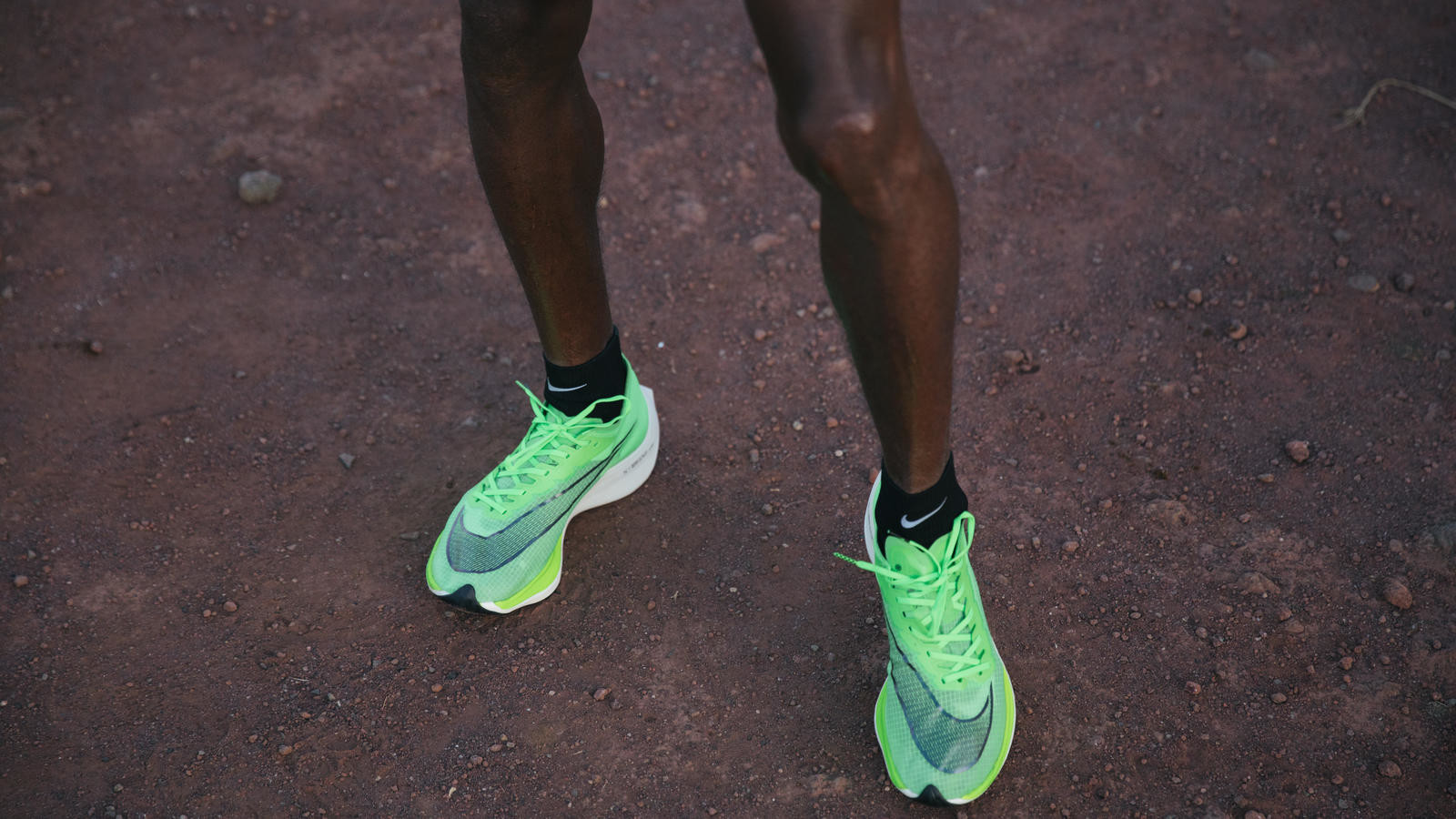
But as you progress and become better, it can take months and even years to run a personal best. And for the competitive runner, staying patient is the hardest part. But what if someone told that runner who’d been trying to PB for 14 months, 27 days and 13 hours, that if they spent $330 CAD they had a 73 per cent chance at finally improving? If they have the budget, that’s an appealing statistic.
Two weeks ago Molly Huddle, who has the sixth-fastest marathon time among American women in 2019 (she ran a personal best 2:26:33 at the London Marathon), replied to a tweet by sports journalist Cathal Dennehy about the AlphaFly (Nike’s next step in the carbon-plated game). The shoe was first seen on the feet of marathon world record-holder Eliud Kipchoge, who raced to a 1:59:40 finish in them at the INEOS 1:59 Challenge in Vienna last month. Huddle’s comment: “Kinda nervous as to how this would affect the Olympic Trials over here @usatf.”
It’s not just Huddle who has noticed the effect the shoe (or prototype versions) could have on the US Olympic Marathon Trials. Runners are qualifying for the event at unprecedented rates. With the qualifying window still open for another five weeks, entries are already nearing the thousands.
It’s important to note that the qualifying standard for the trials did get two minutes easier (2:43 in 2016 to 2:45 in 2020). But does two minutes warrant a potentially doubled field size or are technological advantages, like the Nike shoes, the reason for the jump? The New York Times’ finding would suggest the latter.
(12/13/19) Views: 19,517Madeleine Kelly
Curious about race walking? Here's how to give it a try
Every four years, race walking tends to cause a stir among the general public at the summer Olympic games. Maybe it’s the unusual movement, or the fact that ‘walking’ is in the title of the event. What the public doesn’t understand is how similar race walking is to running – and that most race walkers were runners before getting into the sport. Race walking (like running) is a foot race, but it diffs from running in that one foot must be on the ground at all times.
Boston marathoner, race-walking coach and host of “The Running Dad Podcast” Noel Paine spoke to us about the sport and how to get started. “Most race walkers come into the sport from running, as a less impactful activity on the body,” he says. “Some of the similarities it has to running is the mileage you have to put in to become faster and to build your technique.” Technique is the key, he adds: “Your technique limits how fast you can go. If you have good technique, the sky’s the limit, therefore, focusing on your technique early on is important.”
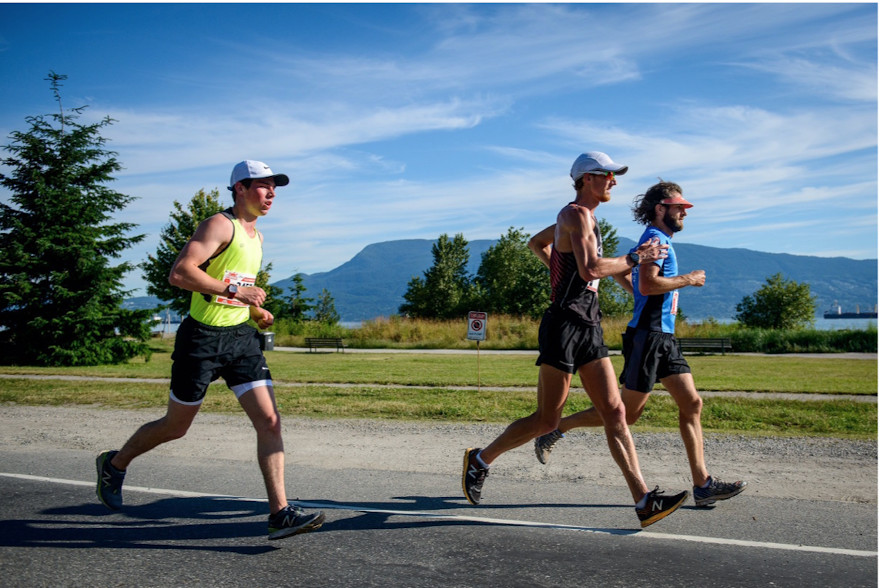
What is the ideal race-walking technique? Here are a few pointers.
Keep your legs straight, striding through your hips and torso
Avoid leaning too far forward or sitting back
Keep your body posture relaxed, and try to walk tall
Engage your abdominal muscles and keep them firm. Most of your power will come from your core
Over time, you can work on your cadence and try to increase your strides per minute as you improve. “Try race walking 1 km on your next run, and time yourself…while ‘staying legal,’” says Paine. Canadian Olympian and fourth-place finisher in Rio 2016, Evan Dunfee has been a big role model for Paine. They became friends in 2018 and have shared knowledge and tips.
The race walking at Tokyo 2020 will begin in Sapporo on Aug. 5 with the 20 km event, followed by the 50 km event on Aug. 6, with our Canadian contingent consisting of Evan Dunfee and Mathieu Bilodeau. You can follow every second of the race walking events at Tokyo 2020 on CBC Gem or cbc.ca/olympics.
(07/31/21) Views: 18,839Running Magazine
World Championships Oregon22 marathon course revealed
The marathon course for the World Athletics Championships Oregon22 has been revealed by the local organising committee (LOC) for the event. Spectators will be able to line the course and experience the world-class competition for free.
The men’s and women’s marathons, taking place on 17 and 18 July 2022, will be contested on a mostly flat 14km looped course that will run through Eugene and Springfield. Athletes will start and finish in front of the University of Oregon’s Autzen Stadium.
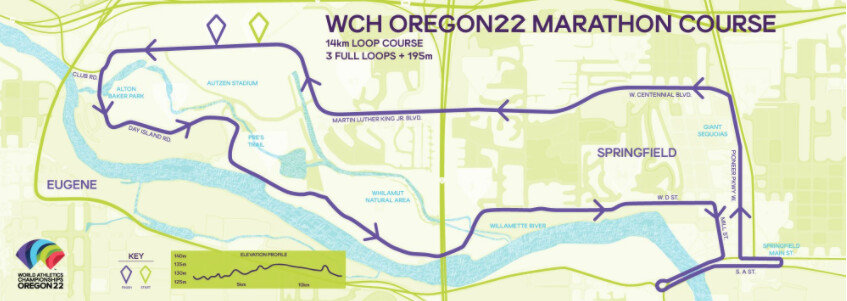
“The opportunity to run a marathon at a World Athletics Championships right here on US soil would be an experience of a lifetime,” said Emma Bates, second place finisher and top US woman at the 2021 Chicago Marathon. “The looped course gives runners the ability to learn and adapt as the race develops, and I think that will result in some fantastic, strategic competition.”
The course follows long sections of the marathon route used for the 1972 and 1976 US Olympic Trials, while also showcasing the beauty and history of Oregon through the landmarks and landscapes of Eugene and Springfield.
“Our objective was to design a course that prioritises the athlete experience while honouring Oregon’s natural landscape, indigenous people, and long-held passion for running,” said WCH Oregon22 Road Events Course Manager Ian Dobson.
“As members of this community, we're proud to give the world’s best runners the opportunity to compete on a course that holds so much history and potential. These marathons will write a new chapter in Oregon’s running story, creating new legends in the footsteps of Frank Shorter, Jacqueline Hansen, Kenny Moore, Joan Benoit and countless others who raced these roads as they helped inspire and redefine what road racing could be – not only in the US, but globally.”
The loop begins on Martin Luther King, Jr. Boulevard, named after the American civil rights leader. From there, it moves into Alton Baker Park, a 413-acre natural area in Eugene.
While on Day Island Road within Alton Baker Park, the route will follow alongside Pre’s Trail. Designated as a City of Eugene historic landmark in 2019, Pre’s Trail is a bark running trail that celebrates University of Oregon track and field legend Steve Prefontaine.
Another feature of this part of the course are the Kalapuya Talking Stones. Showcased in the Whilamut Natural Area of Alton Baker Park, these 15 basalt stones are carved with Kalapuya words and their English translations.
The course will cross over the stunning Willamette River, considered the lifeblood of the Willamette Valley, and then move into the City of Springfield. Competitors will traverse Main Street before running beneath the canopy of a stretch of incredible giant sequoia trees.
The World Athletics Championships Oregon22 will be taking place 15–24 July 2022.
(11/14/21) Views: 18,581World Athletics
Utah runner Jessi Morton-Langehaug wins Moab 240 in 3 days and 8 hours
Utah runner Jessi Morton-Langehaug won the Moab 240 on Monday, completing the 240-mile (386K) route in 80 hours, nine minutes and 42 seconds. She finished well ahead of second-place finisher Jodi Semonell, who crossed the line in almost 83 hours flat.
Third place went to Christie Haswell, who won her spot on the podium with a finishing time of 83 hours and 44 minutes. This was a Moab 240 debut for all three women.
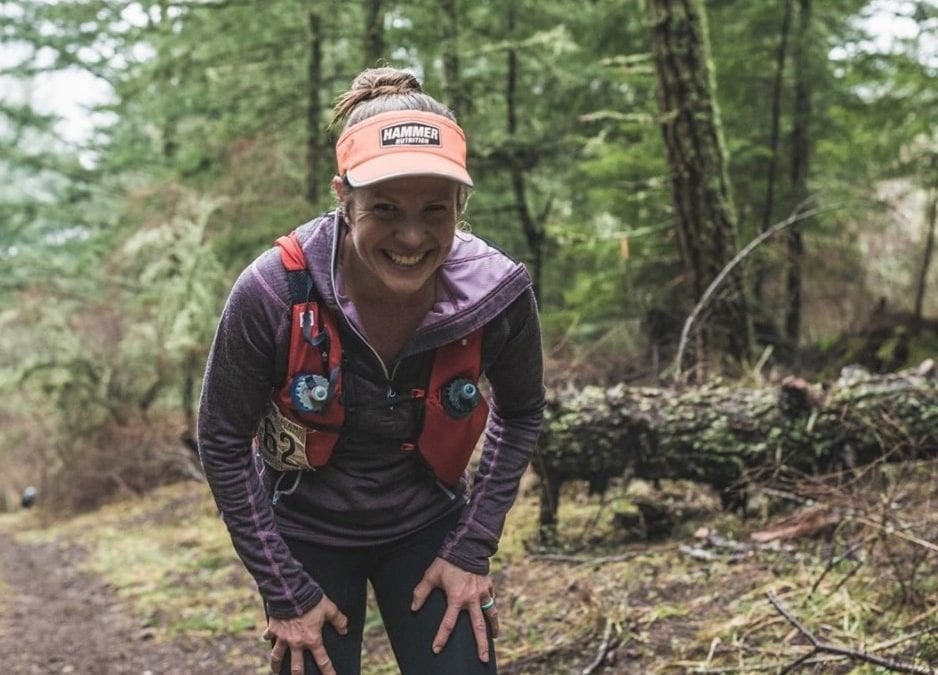
How it all shook out
Morton-Langehaug led early on, and for the first few checkpoints, she was ahead of Semonell, Haswell and the rest of the field. After the first day of racing, though, she was caught and passed by Semonell and Kamloops, B.C., resident Jessie Thomson-Gladish. She didn’t let the pair enjoy the lead for long, though, first passing Semonell after about 28 hours and then Thomson-Gladish at around the 41-hour mark. At one point, Thomson-Gladish had a multi-hour lead over Morton-Langehaug, but she couldn’t hold off the charging Utahan, and she ultimately faded to a sixth-place finish.
Semonell passed the Canadian just before the end of Day Two en route to her spot on the podium beside Morton-Langehaug and Haswell. The top three women were all far off Courtney Dauwalter‘s overall course record of 57 hours, 55 minutes and 13 seconds, but Morton-Langehaug’s 80-hour run is the fourth-fastest time ever posted by a woman on the 240-mile course.
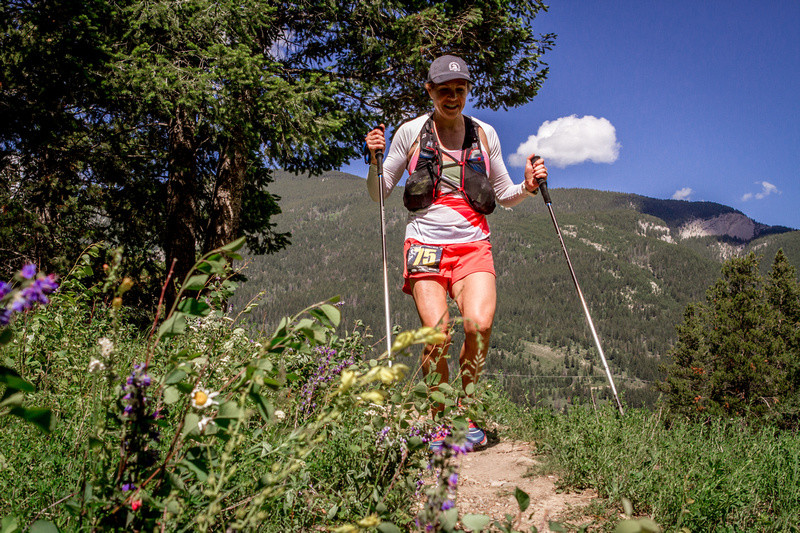
Morton-Langehaug’s biggest win
This is easily the biggest win of Morton-Langehaug’s career, and it’s her fourth top finish of 2020. Her other race wins this year came at a 55K in March and a 100-miler in May (both in Utah) and a virtual marathon that she also ran in May. According to her Ultrasignup profile, the Moab 240 is also by far the longest race that Morton-Langehaug has ever run, with her next longest run coming in at 100 miles.
(10/14/20) Views: 18,246Ben Snider-McGrath
Joshua Cheptegei will be eyeing the 5000 meters winner's prize in Monaco when he returns to the Diamond League this weekend
Unlike previous years, the Diamond League 2020 will not be a structured series of events leading to a final. Due to the coronavirus upheaval, only 11 instead of the planned 15 athletics meetings will take place this season.
There are all signs that Lady Luck will again smile at Cheptegei in the same European city-state where he broke 5km road world record early this year.Cheptegei, together with fellow world champion Halima Nakayi (1000m), Winnie Nannyondo (1000m), and Samuel Kisa (5000m) were flagged off by First Lady and Sports Minister Janet Museveni Saturday.
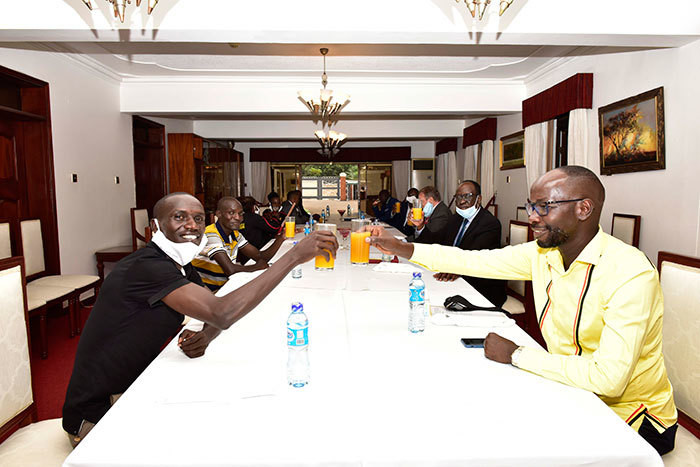
"Please take care to protect yourselves from COVID-19, remember that self-discipline is a big factor in the fight against this virus. God be with you," said Janet Museveni as she handed the athletes the national flag.
The Ugandans were, according to Monaco procedure, first subjected to a mandatory COVID-19 test.
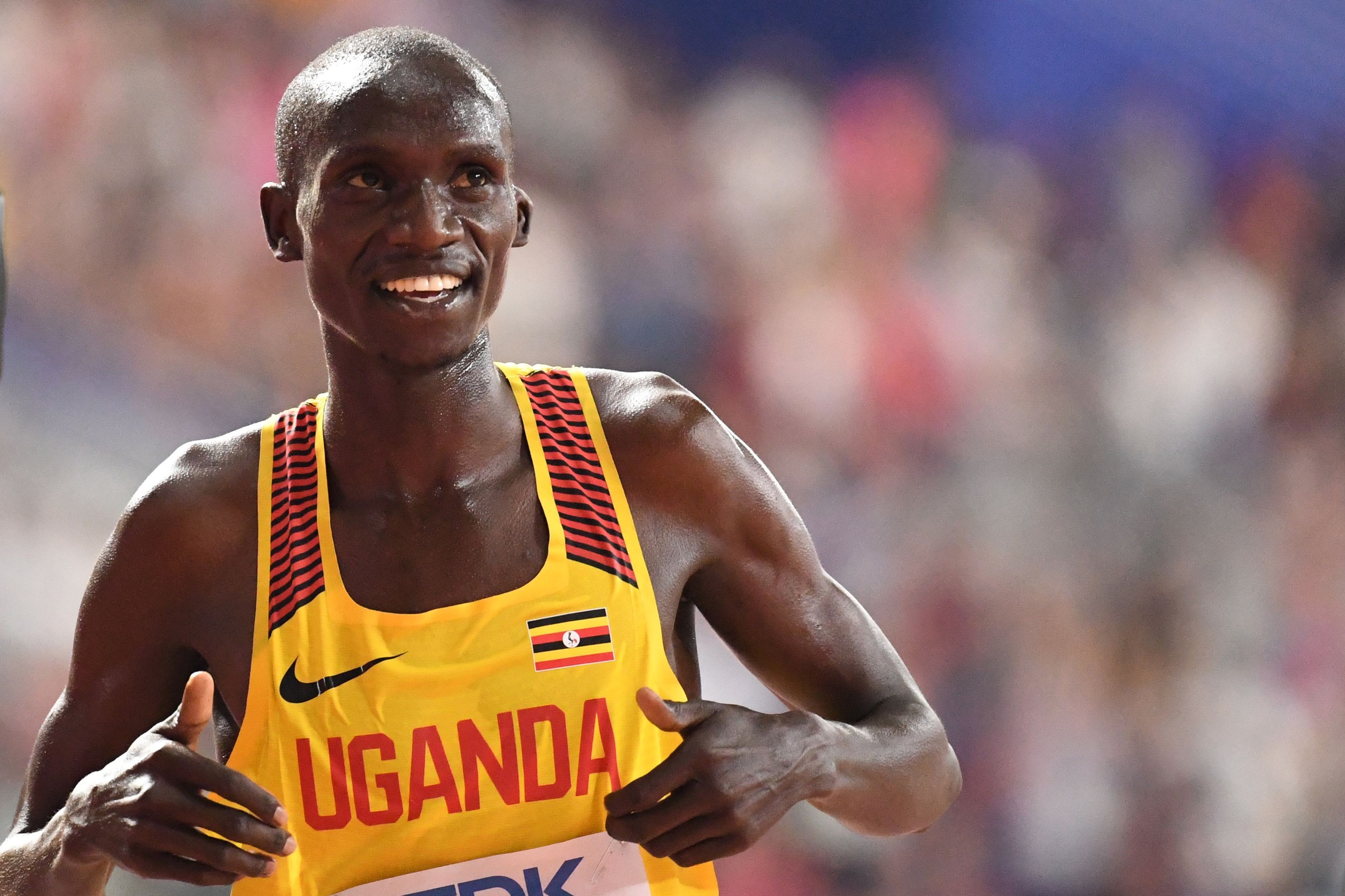
Steeplechase star Conseslus Kipruto from Kenya failed the test and will accordingly miss the Monaco Diamond League event.The Ugandans left on a Uganda Airlines chartered flight to Nairobi on Saturday, then another to Monaco ahead of the August 14 event.
The race organizers of the Monaco event chartered the flights for the 10 Kenyan and four Ugandan athletes.The men's events in Monaco include 200m, 800m, 1,500m, 5,000m, 110m hurdles, 3,000m steeplechase, and pole vault, while women will compete in 100m, 400 m, 1,000m, 5,000m, triple jump and high jump.
Organizers also confirmed that top athletes including women's world record holder, triple jumper Yulimar Rojas from Venezuela, Dutch 1,500m world champion Sifan Hassan, 10,000m world champion Joshua Cheptegei and French hurdler Pascal Martinot-Lagarde will partake of in the events.
On June 26th, the Diamond League canceled its meets in Paris, France, and Eugene, in the United States because of the current restrictions on mass gatherings and international travel due to the coronavirus menace the world over.
Due to the global outbreak of the fatal respiratory disease, the Diamond League season could not start as planned in Doha on April 17.
Meetings have since been canceled in London, Rabat (in Morocco), and Zürich (in Switzerland) which was originally scheduled to host the season finale in September - while other events on the calendar were postponed due to the pandemic.
(08/10/20) Views: 17,582James Bakama
Wilf Leblanc 57-year-old smashes multi-Grouse Grind record on summer solstice
On June 21, Wilfrid Leblanc, 57, broke the Grouse Grind record, finishing 19 ascents in approximately 18 hours, and gaining 15,295 metres over 48K (almost double Mount Everest). The Grouse Grind trail ascends Grouse Mountain in North Vancouver. Every summer solstice, Grouse Mountain hosts the Multi-Grind Challenge, raising money for BC Children’s Hospital. Leblanc wasn’t the only vertical junkie breaking records. Brooke Spence, 37, and James Stewart, 40, each completed 18 Grinds. Spence, beat her previous record of 17 ascents, set in 2018.
The multi-grind challenge is unique as it relies on the Grouse Mountain tram system. For solstice, the tram is scheduled for every 10 minutes. Participants may begin as early as 4:00 a.m., and can begin their final Grind at 9:59:59 p.m. Leblanc met the legendary Spence a few weeks prior to the event, and determined that “19 was possible by doing 45-minute Grinds all day. 19 is not crazy.” Leblanc’s plan of attack was to “stay with Brooke. I know she’s strong. I’m just gonna stay with her, until I can’t.”
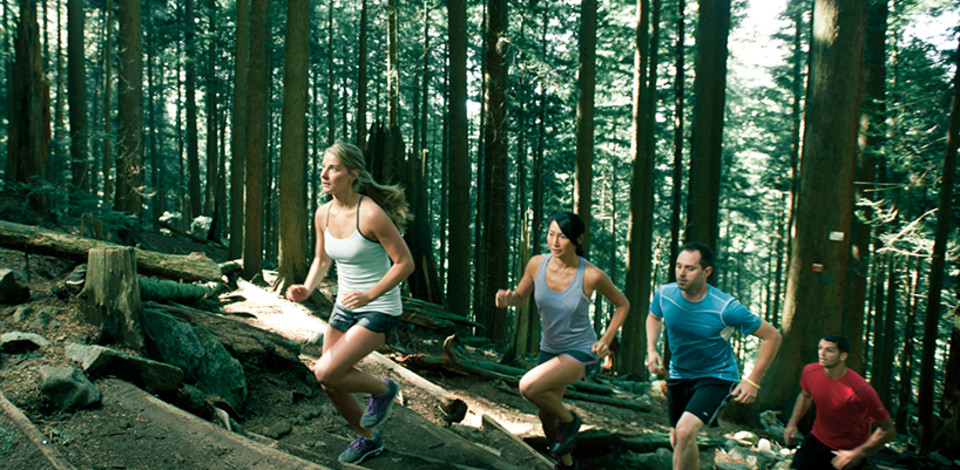
On June 21, Wilfrid Leblanc, 57, broke the Grouse Grind record, finishing 19 ascents in approximately 18 hours, and gaining 15,295 metres over 48K (almost double Mount Everest). The Grouse Grind trail ascends Grouse Mountain in North Vancouver. Every summer solstice, Grouse Mountain hosts the Multi-Grind Challenge, raising money for BC Children’s Hospital. Leblanc wasn’t the only vertical junkie breaking records. Brooke Spence, 37, and James Stewart, 40, each completed 18 Grinds. Spence, beat her previous record of 17 ascents, set in 2018.
The multi-grind challenge is unique as it relies on the Grouse Mountain tram system. For solstice, the tram is scheduled for every 10 minutes. Participants may begin as early as 4:00 a.m., and can begin their final Grind at 9:59:59 p.m. Leblanc met the legendary Spence a few weeks prior to the event, and determined that “19 was possible by doing 45-minute Grinds all day. 19 is not crazy.” Leblanc’s plan of attack was to “stay with Brooke. I know she’s strong. I’m just gonna stay with her, until I can’t.”
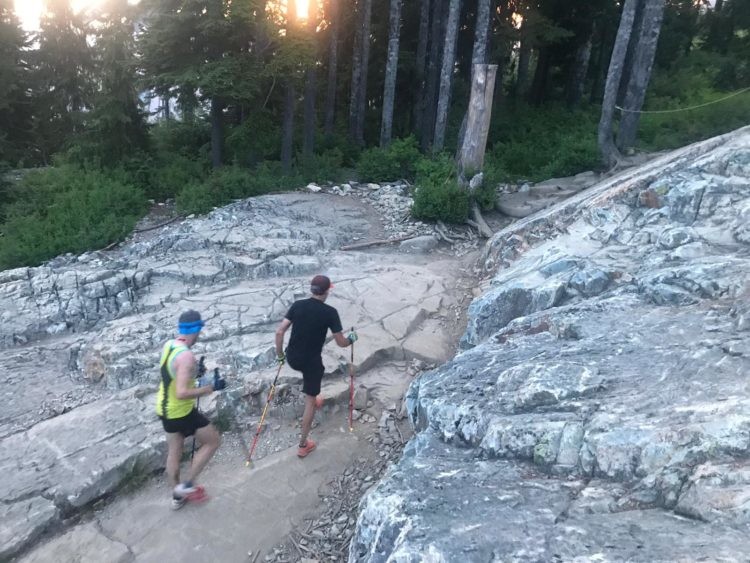
“More people did 15 [Grinds] this year alone than ever before,” says 2017 record-holder Ian Roberton. Robertson was planning on breaking his record of 17 ascents, until his stomach took a turn mid-day. Robertson, Leblanc, Spence, and Stewart were together for the first lap. But Stewart missed the first tram down at 4:45 a.m. due to a broken timing chip, which left him hiking solo until number 18. Leblanc and Spence hiked for 15 laps together, and had fun with friends joining the party for one to five Grinds.
The vertical master Spence says that “this year was a lot different than last year, because last year, I hiked alone. This year, there were four or five of us for a lot of it. It was tons of fun with pacers going in and out. You’re seeing all the other multi-grinders do it and everyone is so encouraging.” Leblanc said it was a highlight having his crew along with Spence’s hiking together.
(06/28/19) Views: 17,148What to do when injury happens
David Roche, author and coach to many top trail runners, dispenses advice on what to do when injury happens.
Even the strongest runners occasionally get injured. If you think you may be injured and this is not something you’ve dealt with before (or even if it is), running coach and The Happy Runner author David Roche of the SWAP Adventure Team (Some Work, All Play) along with Black Canyon 100K winner Matt Daniels has put together a very simple how-to video for Strava on exactly how to approach the situation.
Roche coaches a lot of successful trail runners like OCR badass Amelia Boone, Western States winner Clare Gallagher, Barkley Marathons finisher John Kelly, Canada’s Kat Drew and Canadian Trail Running’s own Tory Scholz, and his approach is holistic–he’s concerned not just that you take care of the injury, but that you remain, well, a happy runner. While injury prevention is important, Roche acknowledges that we can’t always avoid injury entirely. That’s why he formulated these guidelines on what to do when despite your best efforts, something goes wrong with your body. (Roche coaches road runners too, by the way.)

Here are Roche’s Rules for when you think you might be injured.
1. If it hurts to walk, don’t run.- It may seem like basic common sense, but you’d be surprised how may runners routinely ignore it out of a desire to prove how tough they are, or to reassure themselves that they’re not really injured. But if you run on an injury, it will likely get worse.
2. There’s no shame in stopping.- One of Roche’s biggest assets as a coach is that he talks about shame, something that comes up frequently in injured runners who may think they’re wimping out if they don’t finish a workout (or a race) because something hurts. If you ignore rule #1, fine, but don’t ignore rule #2. Stop and take what Roche calls the Walk of Pride (rather than the more traditional Walk of Shame) back to where you started, and “live to fight another day.”
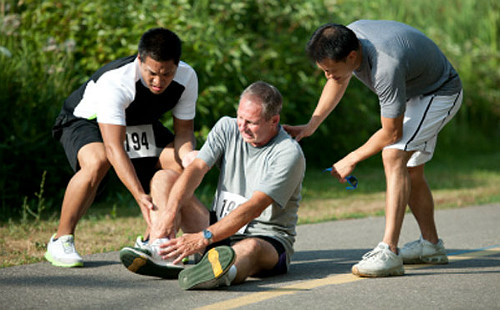
3. Talk to someone.- Confide in someone close to you that you’re injured, someone who cares about you enough to insist that you seek treatment. Many injured runners put off seeking treatment in the hope that whatever it is will get better on its own. (And we all know where that ends.) Whether it’s your family doctor, physiotherapist or chiropractor, getting seen will not only help you get on the road to recovery, it’ll help you cope mentally, too.
Bottom line, you want to get rehabbed so you can get back out there ASAP. If you follow Roche’s three rules, there’s no reason why you can’t do just that.
(12/22/19) Views: 17,109Anne Francis
Paul Chelimo is set to race at XC Town USA Meet of Champions in Terre Haute on Nov 14
Paul Chelimo, who thrilled American distance running fans with his silver medal-winning performance in the 2016 Rio Olympic Games 5,000-meter run, has been confirmed as one of the top entries for the Men’s Elite 8K field at the XC Town USA Meet of Champions, Presented by The Garrett Companies, Nov. 14-15 at LaVern Gibson Championship XC Course in Terre Haute, Ind.
Chelimo, who competes for Nike and is based in Colorado Springs, also was the meet-record-setting victor in the USATF Men’s 5,000m at the 2017 USATF Championships, then followed that with a bronze-medal finish at the 2017 IAAF World Championships in London. He was the top-ranked USA 5,000m runner each year from 2016-19 (Track & Field News) – world-ranking in the top 4 for three of those years – and has clocked PRs of 12:57.55 for 5,000m and 27:43.89 for 10,000m on the track.
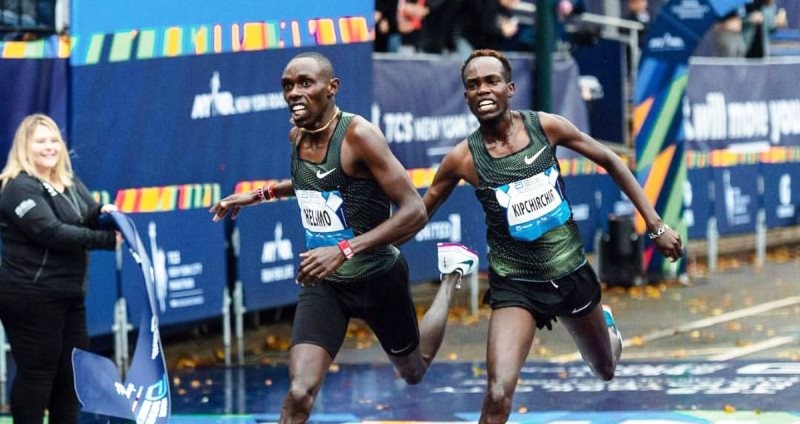
The Men’s Elite/College/Open 8K race will take place Saturday, November 14 at 11:15am at LaVern Gibson. It’s the second of the two races of the meet that will take place Saturday, with the Women’s Elite/College/Open 6k race starting the day at 10:30am. A full day of competition follows on Sunday, starting with the Middle School races and finishing with the Boys and Girls High School Championship races.
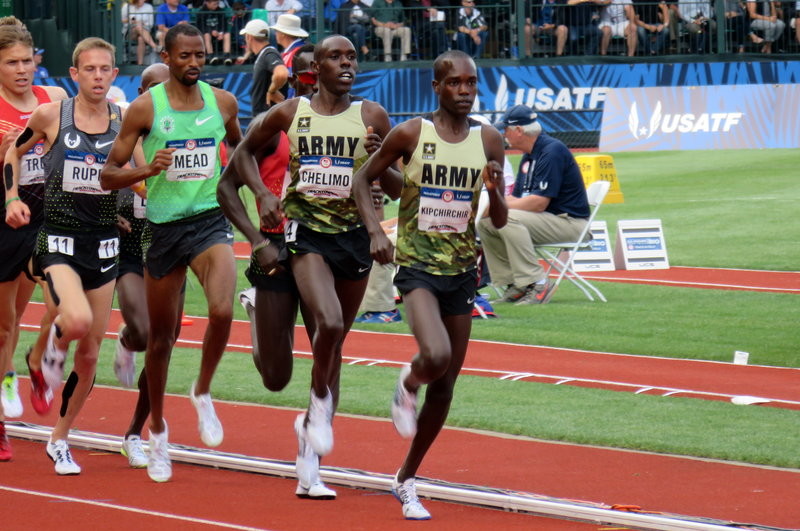
“Obviously, we are thrilled to have Paul Chelimo compete in the Men’s Elite/College/Open Race in our meet,” said NSAF Executive Director Jim Spier. “As one of the world’s best distance runners, his presence elevates an already great event.”
(11/02/20) Views: 16,569Steve Underwood
David Askew, spent 10 years homeless and now runs marathons around the world
“Running is a beautiful thing. There is no better feeling I can explain than finishing a marathon. You have got to endure, it’s mind over matter, and shows if you put your mind to it you can do anything.” These are the words of David Askew, who spent 10 years homeless – and who now runs marathons around the world. His is one of many remarkable stories told in the powerful new documentary, Skid Row Marathon. The film follows a running group set up by Judge Craig Mitchell in 2011 for residents of the Midnight Mission shelter in the most notorious area of downtown Los Angeles and home to some of LA County’s 58,000 homeless population, showing how the simple act of running together, as a community, as a team, can lead to real-life change for people who have experienced homelessness. This remarkable man has a habit of changing lives. In the early days, four or five runners – homeless, recovering from addiction, or recently released from prison – would join him. Now 40 or more join the 62-year-old and a team of mentors at 5.45am to pound the LA streets three times a week. And his fundraising has enabled group members to run marathons in Accra in Ghana, Rome and, earlier this year, in Jerusalem. “It is part of my faith, that every human being has worth, has dignity, deserves to be respected and understood. Homelessness or addiction doesn’t affect one-dimensional people. They are where they are because of a complicated series of events or circumstances. And if anybody is interested in doing anything about that, the complexity of their circumstances needs to be appreciated.” (05/09/18) Views: 16,073Here's Why Negative Splits Are the Key to Racing Faster (and Happier)
I wasn't too impressed with my first marathon experience.
Don't get me wrong . . . I loved the 2008 New York City Marathon with its amazing crowd support, challenging course, and the thrill of running through New York's five boroughs.
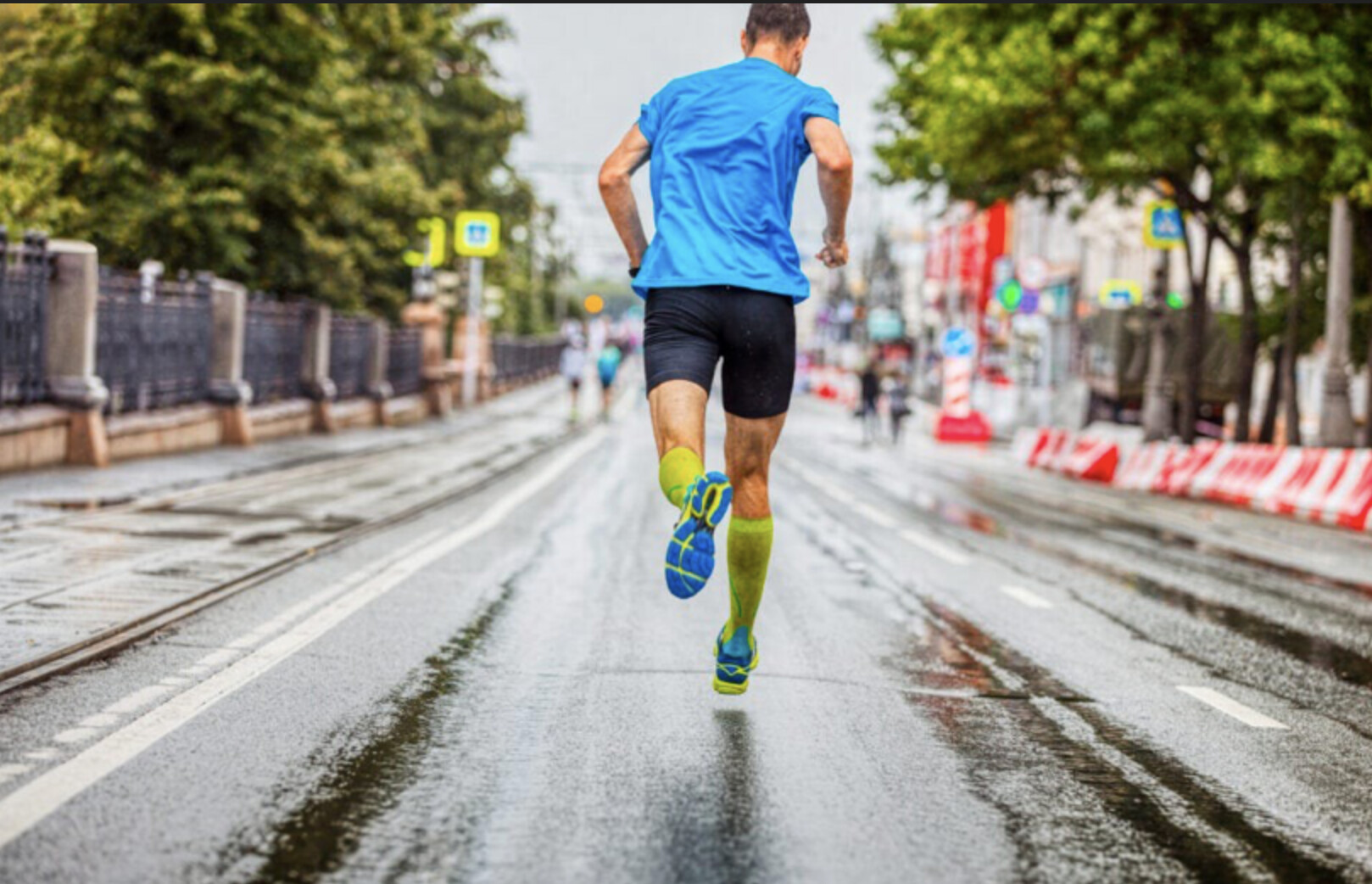
But like many marathoners, I hit the wall at mile 20. Each subsequent mile was slower than the last, and I felt worse than I ever had in any other race. While I was proud of my finish time, I didn't like how I finished the race.
After more than a decade of coaching marathoners, I've come to a realization that really transformed my relationship to training: how you run a race is just as important as the final result.
If you're able to finish in a way that makes you feel good-if you can finish strong-you're much more likely to consider the race a success and feel more fulfilled by your performance.
One pacing approach of finishing strong is commonly referred to as "negative splitting." Negative splits refer to finishing a race faster than you started. It usually means that the first half is slower than the second, requiring you to speed up during the final half of the race.
This strategy is usually preferred over other race pacing strategies (like positive splits, where you run the first half faster than the last half, or even splits where each half is as close as possible) for a variety of reasons.
First, it's physiologically easier. For races like the half-marathon or longer, it's easier to run faster once the body is fully warmed up. That typically happens only after the first few miles of racing, making a negative split easier to manage.
Second, negative splits leave you feeling more empowered and fulfilled when you finish a race strong. It just feels good! Athletes who negative split races feel more confident after speeding up during the second half of a race.
And finally, it's better for fast times. Most records at the national and world level have been run with negative splits, showing that it's the ideal pacing approach for the fastest times possible. Let's look at some of these performances to inspire our own negative split ambitions.
Negative Splits and Records
A clear trend emerges when you study most world and national records: they were run with negative splits! While not every world record has been run with a negative split, it's the most common approach. Here are a three famous examples:
In 2014, Dennis Kimetto ran the world marathon record in 2:02:57 by running the first half of the race in 61:45 and the second half in 61:12.
Years later, Eliud Kipchoge set another world record in the marathon in 2019 by running 2:01:39. His half-marathon splits were 61:06 and 60:33. He also ran his second half marathon about 10 seconds faster than his first when he broke two hours in the marathon in October 2019 during a time trial.
While most world records at distances over 800m are run with negative splits, this strategy starts to break down at the ultramarathon distances. Many ultra races often have unpredictable terrain, dramatic elevation changes, and higher altitudes. Combined with the sheer distance of ultras, finishing the race slower than you started is usually inevitable. Of course, usually doesn't mean always, though! Arizona ultrarunner Nick Coury, 35, set a 24-hour American Record with an impressive negative split, running 173 miles and clipping off 6-minute miles at the end. It did take this elite athlete more than a decade to refine, but it can be done.
How to Run Negative Splits
Now that we've established the benefits of negative split races, now that we know this approach can be easier and more empowering-not to mention the historic strategizing of negative splits at the highest levels of running-how do we do it ourselves?
If you're able to finish in a way that makes you feel good - if you can finish strong - you're much more likely to consider the race a success and feel more fulfilled by your performance.
Running a race with a negative split is no easy task. It requires much more effort in the second half to run faster because of cumulative fatigue. So how do we train for this feat?
The first step is to get comfortable running negative splits when the stakes are low. Practice finishing an easy distance run faster than you started. It can be helpful to run the first mile at a slower pace to help the warm-up process and the last mile at a more moderate effort. This makes that negative split easier to attain.
You can then practice running a structured workout with negative splits. This is more challenging, since you'll be running at faster efforts and will be pushing yourself in a similar way to a race. (Don't forget your encouraging self-talk.)
This approach works best when you're running a series of repetitions of the same distance (i.e., 6 x 800m) so you can work on each repetition getting slightly faster than the last.
In a race situation, accurate pacing becomes a top priority if the goal is to run negative splits. You must first understand what you're capable of, and what's realistic for you, so you don't start too fast. For example, if you want to negative split your next half marathon and you think you're in shape to run about two hours, it's helpful to run close to this pace for the first 10-11 miles. Running a pace that'll net you a 1:45 finish time is too fast!
Can Negative Splits Make You Happier?
In my coaching opinion, the answer is yes! While the destination (your race result) is important, so is the journey (how you ran the race). Racing negative splits ends the race on a positive note. You finish the race running fast, feeling powerful, and likely outkicking many of your competitors. It's a direct way of imprinting a positive memory on your brain at the very end of a race. That final feeling is lasting and a good reminder of all the effort you put into a race.
For runners who struggle with pre-race anxiety, it can be difficult to frame races as positive experiences that make you feel good. These athletes usually dwell on what can go wrong or how they'll perform. But having just one negative split race is an enormous confidence-booster and can be effective at reducing anxiety in future races.
Even if you don't end up negative splitting a race, we can have an "emotional negative split" by focusing on finishing the race strong. The last mile or half-mile is a great opportunity to pick up the pace, put out those airplane arms, and smile as you charge to the finish line. Positive split or not, you'll finish the race feeling powerful.
If you're a runner who wants to race fast, feel better about your performances, and make racing a more positive experience, try negative splits. They're tough-but so worth it.
(01/28/23) Views: 15,719Trail Runner Magazine
Nike reports unexpected loss as sales tumble 38%, shares fall
Nike reported an unexpected quarterly net loss and a sales decline of 38% year-over-year.
Digital sales soared 75%, representing about 30% of total revenue, as shoppers flocked to Nike’s website for sneakers and workout gear.
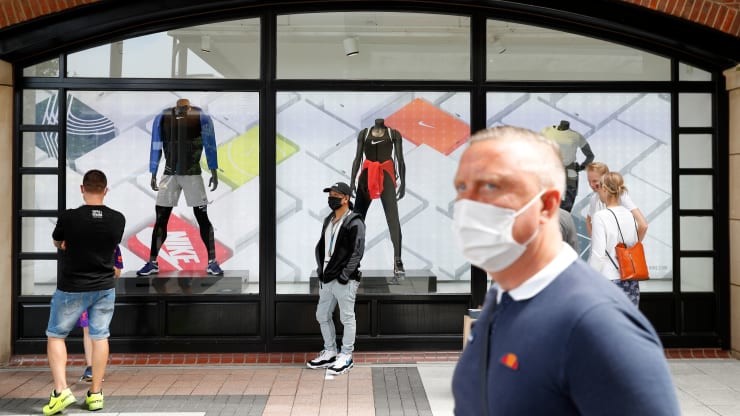
But expenses for shipping and returns also put more pressure on the company’s profits. Nike’s margins during its fiscal fourth quarter shrank to 37.3% from 45.5% a year ago.
Even Nike, often lauded as one of the strongest global brands in the retail industry, is taking a hit from the coronavirus pandemic.
The Portland, Oregon-based sneaker maker on Thursday reported an unexpected quarterly net loss and a sales decline of 38% year-over-year, as its business was hurt from its stores being shut temporarily, and online revenue was not enough to make up for that.
Its inventories also piled up, weighing on profits, as its wholesale partners such as department stores also had their shops shut and took in fewer orders for shoes and clothes.
Nike shares were recently down around 4% in after-hours trading.
Here’s how Nike did during its fiscal fourth quarter:
Loss per share: 51 cents
Revenue: $6.31 billion
Nike reported a loss of $790 million, or 51 cents per share, during the period ended May 31, compared with net income of $989 million, or earnings of 62 cents a share, a year ago.
Total revenue was down 38% to $6.31 billion from $10.18 billion a year ago. Sales in North America were down 46%, while sales in China were down just 3%, with many of Nike’s stores in that region reopening sooner during the pandemic than in the U.S.
Sales at the Converse brand dropped 38%. For the Nike brand, footwear sales fell 35%, apparel was down 42% and equipment revenue tumbled 53%, as sports and many recreational activities have largely been put on hold due to the Covid-19 crisis.
Digital sales soared 75%, representing about 30% of total revenue, as shoppers flocked to Nike’s website for sneakers and workout gear. The company had previously set a goal to reach 30% digital penetration by 2023. But that timeline was accelerated rapidly because of the pandemic. Now, the company said it is targeting its e-commerce sales accounting for 50% of overall sales “in the foreseeable future.”
But expenses for shipping and returns also put more pressure on the company’s profits. Nike’s margins during its fiscal fourth quarter shrank to 37.3% from 45.5% a year ago.
Analysts were calling for the company to report earnings of 7 cents per share on revenue of $7.32 billion, according to Refinitiv data. However, impact from the coronavirus pandemic makes it difficult to compare the company’s results to analysts’ estimates.
“We are continuing to invest in our biggest opportunities, including a more connected digital marketplace,” Chief Executive John Donahoe said in a statement.
During a call with analysts, he went on to explain that Nike will make its online business more “central” to everything the company does, and that Nike will invest in opening additional smaller-format stores that are meant for customers to do things such as pick up their online orders. It said it will open about 150 such locations globally.
“Consumers want modern, seamless experiences, online-to-offline, so we’re accelerating our approach,” Donahoe said on the call.
Nike said its inventories as of May 31 amounted to $7.4 billion, up 31% from a year ago. The company said the increase was due, in part, to it shipping less merchandise to its wholesale partners because of the pandemic.
Nike said product shipments to wholesale customers were down nearly 50% during the quarter.
As of Thursday, Nike said roughly 90% of its owned stores are back open globally. In China, almost all of its owned stores are reopened. About 85% are open again in North America.
According to CEO Donahoe, Nike’s digital business is up triple digits, so far, in June. Bricks-and-mortar retail traffic remains below prior-year levels, he said.
Nike is not offering a complete fiscal 2021 outlook at this time. But Donahoe said revenue should be flat-to-up compared with the prior year.
As of Thursday’s market close, Nike shares are down less than 1% this year. The stock is up about 22% from a year ago. Nike is valued at $157.7 billion.
(06/28/20) Views: 15,648How Do Olympic Athletes Sleep?
Not as soundly as you’d expect, actually
We all know that, in theory, we’re supposed to sleep a lot. After all, it boosts performance, protects against injury, accelerates recovery, improves free-throw shooting, and all sorts of other wonderful things. But sometimes there’s a gap between theory and practice. Are champion athletes also champion sleepers? Or is good sleep in the “nice to have” rather than “need to have” category for ascending the heights of athletic prowess?

A new study in the International Journal of Sports Physiology and Performance, from sports scientists at the U.S. Olympic and Paralympic Committee led by Travis Anderson, dives into the real-world sleep habits of more than 1,600 Olympic and Paralympic athletes. In the lead-up to the Tokyo Games in 2021, they filled out a questionnaire called the Pittsburgh Sleep Quality Index. The results offer insights into the typical sleep patterns for male versus female athletes, summer versus winter Olympians, and team versus individual sports. They also suggest that a surprising number of athletes aren’t sleeping as much or as well as they’d like.
In this age of ubiquitous self-tracking, you may wonder why they’re using a questionnaire rather than some form of objective sleep tracking. The simple answer is logistics: proper sleep studies are complicated and invasive. Even wearable tech devices would have been difficult to administer to 1,600 athletes scattered around the country, and their accuracy is questionable anyway. Moreover, imposing sleep tracking on athletes is a delicate proposition, and there’s a risk it can create anxiety and interfere with the sleep it’s supposed to measure. A few years ago, Charles Samuels, the sleep doctor who works with Canada’s Olympic teams, told me that the best way to assess how someone is sleeping is to ask them, “How are you sleeping?”
The biggest result is that roughly 40 percent of the athletes were rated as having poor sleep based on their PSQI scores. The scores take into account factors like how long you typically sleep, how long it takes you to drift off, how often your sleep is disturbed, whether you take sleep medications, and so on. The results are in line with a recent study of Dutch Olympic athletes, which found that 41 percent were poor sleepers. Similarly, an Australian study in 2021 pegged 52 percent of Olympians as poor sleepers.
One of the goals of the study was to provide normative values—that is, to offer some context on what’s normal for hard-training athletes, as opposed to for the general population on whom the PSQI was first tested. The PSQI is scored out of 21, with higher scores indicating a greater number or greater severity of sleep problems. You’re classified as a poor sleeper if you score 5 or more. The average among U.S. Olympics was 4.3; a quarter scored above 6; 10 percent scored above 8; and 5 percent scored above 10. The highest single value was 16. (The lowest was zero, and boy do I envy those people!)
There are plenty of reasons athletes might have trouble sleeping. If you have a 6:00 A.M. training session, you’re going to have trouble getting all the sleep you might like. If you’re traveling frequently across time zones to get to races or training camps, that will cost you. If your legs are aching from hard training, or your mind is racing before or after a competition, you won’t sleep well. The survey results don’t tell us exactly what’s happening, but they suggest that someone who scores 5 or 6 on the PSQI, while officially classified as a “poor sleeper,” is pretty typical for a serious athlete.
The main difference between this study and previous ones is that it has way more athletes, which makes it possible to slice and dice the data into subcategories. Most notably, despite typically going to bed a few minutes earlier, women had worse sleep quality: an average of 4.7 on the PSQI compared to 3.9 for men. That’s a pattern that has shown up in some but not all previous studies. Among the specific differences were that women were less likely to report falling asleep right away after going to bed, and more likely to report using sleep medications. One theory is that the variation in sex hormones across the menstrual cycle might interfere with sleep, but this study doesn’t tell us anything about the mechanisms, and the authors point out that it’s not really clear whether the small differences observed have any practical relevance.
The only difference between summer and winter athletes was that the winter athletes went to bed later and got up later, perhaps because there’s less light in the morning during the winter. There were no differences between Olympic and Paralympic athletes, even though factors like disrupted circadian rhythms in visually impaired athletes might lead us to expect more problems for the Paralympians. Team-sport athletes got up earlier and had poorer sleep than individual-sport athletes, but that pattern clashes with some previous studies. Overall, I’d guess that all these sub-patterns are confounded by the huge variety of sports in the sample. Runners are probably like runners, regardless of sex or Paralympic classification; they’re not like platform divers.
One way of interpreting all this data is that sleep is a great untapped frontier. If 40 percent of athletes are poor sleepers, just imagine your edge if you can master it. The other interpretation is that sleep can’t be that important, if all these Olympians can’t get it right. I’ll take a middle position, as is my wont. I think sleep is important for performance (not to mention for not feeling like crap all day). But I don’t think it’s one of those quantities that rewards relentless self-optimization. “If you get what you need,” Charles Samuels told me, “that’s as good as it gets.” Take your sleep habits seriously, but remember that if you still have some problems, you’re in very good—Olympic-level, to be precise—company.
(03/30/24) Views: 14,740Outside Online
IAAF battle with Olympic 800m Champion Caster Semenya saying she should be classified as a biological male
South Africa's world and Olympic 800 metres champion Caster Semenya is challenging a proposed new rule brought in by the IAAF which, if upheld, would force her to either take medication to reduce her testosterone levels or compete against men.
Semenya has called the rule - which only affects athletes competing in events between 400m and the mile - unfair, and the case is due to be heard at the CAS in Lausanne next week.
The British newspaper The Times had claimed that when the case begins, the IAAF will argue Semenya is a biological male.
The newspaper stated lawyers for the IAAF are preparing to argue that the 28-year-old two-time Olympic champion and other athletes with differences of sexual development (DSD) should be treated as female but are in fact biologically male.
The lawyers will argue therefore, the paper claimed, that such athletes should take testosterone suppressants before competing in middle distance events in order to level the playing field.
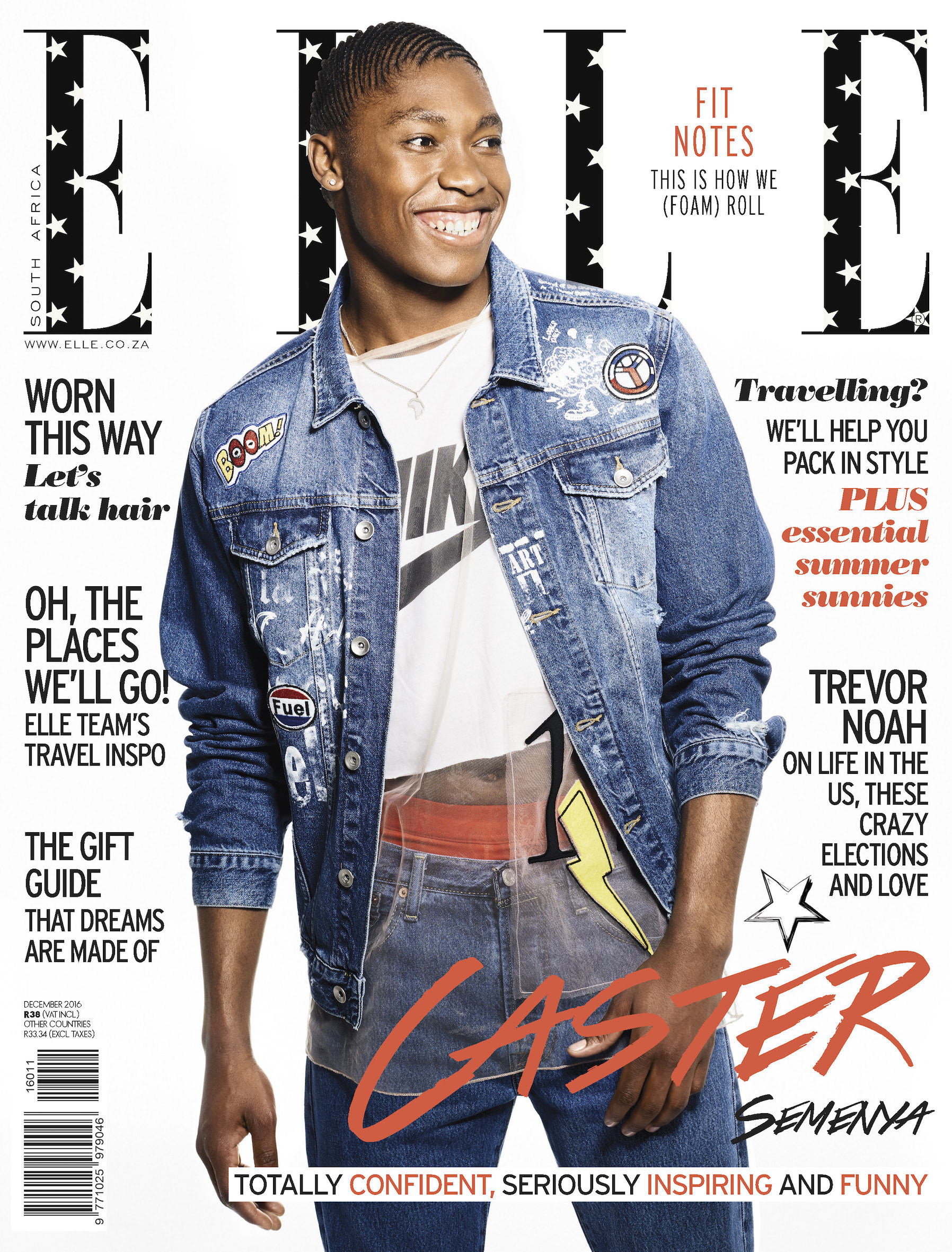
In response the IAAF released a statement saying it is not classifying any athletes with Semenya's condition as male.
"To the contrary, we accept their legal sex without question, and permit them to compete in the female category," they said.
They did stick to their original position, though, saying that to allow DSD athletes to compete against women with normal testosterone levels unchecked would be unfair.
"If a DSD athlete has testes and male levels of testosterone, they get the same increases in bone and muscle size and strength and increases in haemoglobin that a male gets when they go through puberty, which is what gives men such a performance advantage over women," they said.
"Therefore, to preserve fair competition in the female category, it is necessary to require DSD athletes to reduce their testosterone down to female levels before they compete at international level."
Previously, the IAAF claimed athletes such as Semenya competing against women is comparable to adults competing against children, so significant is the perceived advantage.
Semenya's lawyers have also responded to the piece in The Times, saying the South African is "unquestionably a woman".
They also responded to quotes attributed to the IAAF's lawyer Jonathan Taylor, who reportedly said that if the CAS rules in Semenya's favour, "then DSD and transgender athletes will dominate the podiums and prize money in sport", saying her situation cannot be compared to that of transgender athletes.
"There are different regulations for DSD athletes and transgender athletes," they say in a statement.
"Ms Semenya respects the rights and interests of transgender athletes around the world.
"Her case however, is about the rights of women such as Ms Semenya, who are born as women, reared and socialised as women, who have been legally recognised as women for their entire lives, who have always competed in athletics as women and who should be permitted to compete in the female category without discrimination."
The proposed rule has caused significant controversy since it was first put forward by the IAAF and has been criticised by human rights experts from the United Nations who called it "unjustifiable".
(02/14/19) Views: 14,634Garmin's 645 Music features Songs on Your Wrist and more
You can download up to 500 songs to the New Garmin Forerunner 645 Music and connect it with Bluetooth headphones. Leave cash and cards at home and use Garmin Pay instead.
Battery will last up to seven days on a five hour charge. And most importantly, "We’re making it easier to get the data you need to improve your form...Biomechanical measurements, such as cadence, stride length, ground contact time and balance, vertical oscillation and vertical ratio will be captured." Available in 5-8 wks.
(01/09/18) Views: 14,375laszlo Tabori was the third man to break four minutes for the mile
DID YOU KNOW: Laszlo Tabori was the third man in history to break the sub-four minute mile barrier, setting a new European Record with a time of 3:59 on May 28, 1955. Roger Bannister was there. Laszlo posted this on Facebook March 5th after Roger Bannister passed away.
“One of my favorite pictures with Sir Roger Bannister... We were all chasing the sub 4 minute mile. In those days it was a feat comparable only with climbing Mt. Everest. Roger was someone I looked up to and admired.
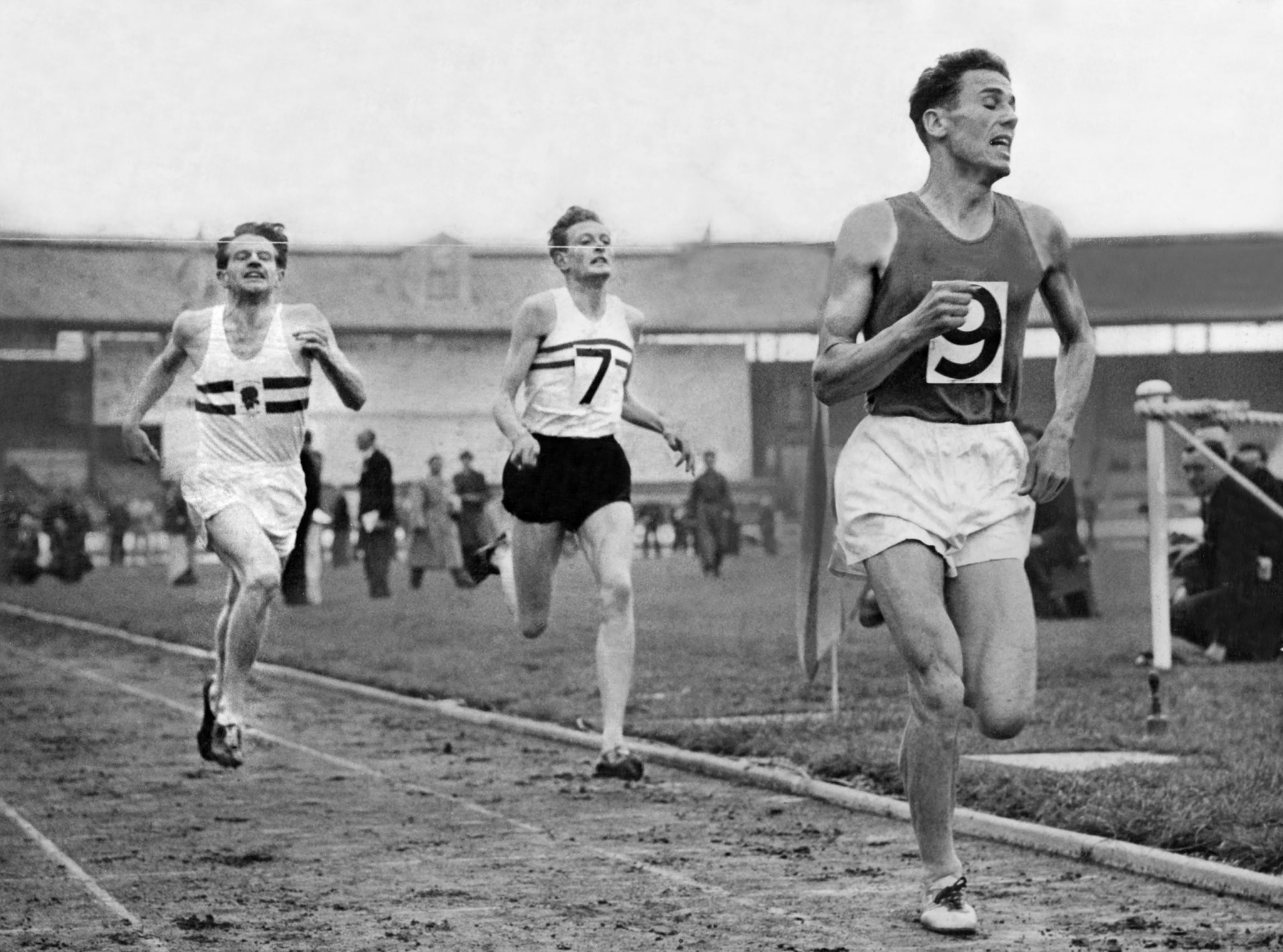
At the height of his running career, he stopped in order to concentrate on his studies in medicine. I had the great fortune to be one of the early ones who followed in his footsteps just a year later at White City Stadium, London. Here Roger is shaking my hand and offering congratulations as I had quite unexpectedly just became the 3rd person to enter this very elite sub-4 min mile club,” wrote Laszlo Tabori.
Laszlo was born in Košice. Although he had already taken up running in his youth, his serious career only started in the early 1950s under Mihály Iglói, the legendary coach.
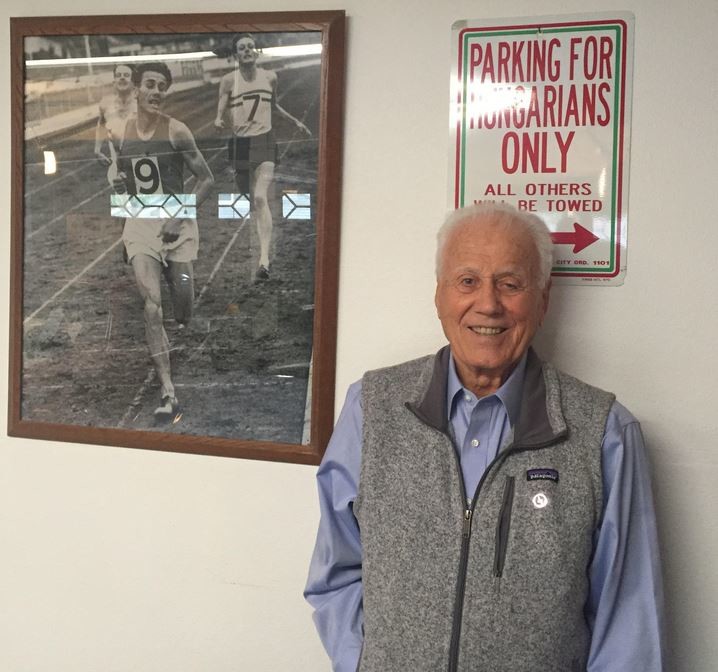
Among Laszlo’s many accomplishments include being an Olympian in the 1956 Olympic Games in the 1500 and 5000m races. Mihaly Igloi and his track team were in Budapest, and saw the chaos of the Soviet invasion, but were fortunate to leave the country and arrive in Melbourne.
Understandably, the Hungarians performed poorly at the Games. After the competition, Igloi, and one of his top runners, Laszlo Tabori, made the fateful decision to forgo their return to Hungary and defect to the United States.
Tábori retired from running in 1962, since he couldn’t compete for Hungry and was not a United States citizen. Tábori returned to distance running as a coach in 1967, his training methods based directly on Iglói's, and has been the coach of San Fernando Valley Track Club since 1973.
(05/16/18) Views: 13,598Bob Anderson
Training Advice from the Greatest Women Masters Marathoners Alive
While Jeannie Rice and Jenny Hitchings are busy setting masters world records, their differences in training are even more instructive than their similarities
The spring marathon season has come and gone, and it didn’t disappoint, producing sensational races and world headlines. This was particularly true in Boston and London. However, you might have heard little or nothing about two of the best marathon performances in those events.
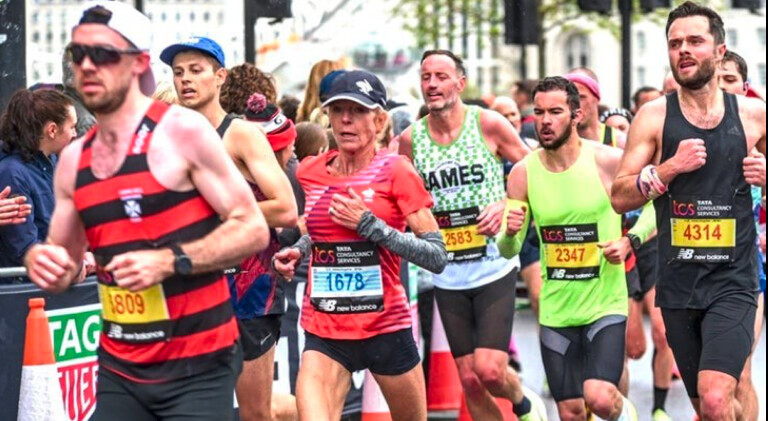
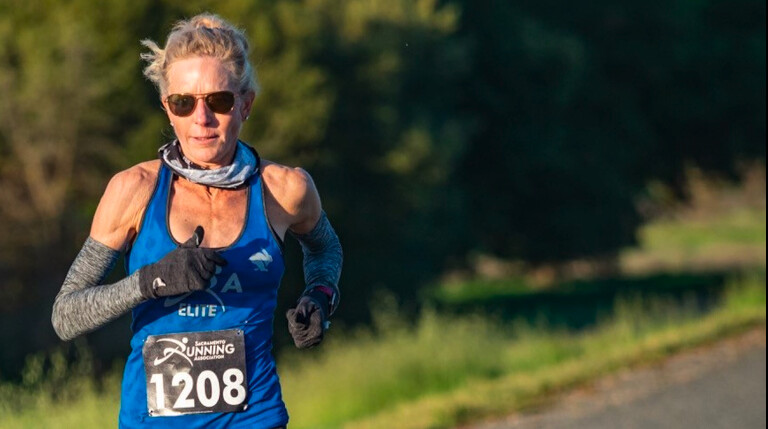
The big media coverage went to seemingly-unbeatable Eliud Kipchoge, who finished sixth at Boston, where Evans Chebet gained his third straight World Marathon Major victory in 12 months. At the London Marathon, Kelvin Kiptum ran 59:45 for the second half, en route to a course record 2:01:27, and Sifan Hassan demonstrated that she can win in the marathon as she has at multiple shorter distances.
But 75-year-old Jeannie Rice and 59-year-old Jenny Hitchings outran them all, on an Age-Gender performance basis, both setting new world records for their age groups. Rice’s 3:33:15 in Boston won’t count, since the Boston course is considered ineligible due to its significant downhill slope and point to point layout, which allows for a tailwind boost. Still, she beat the fastest 75-79 age-group male runner by more than 20 minutes, which has likely never happened before in a global marathon. And five weeks before Boston, at age 74, she ran 3:31:22 in the Tokyo Marathon.
A week after Boston, Hitchings ran 2:45:27 in London—a marathon world record for women in the 55-59 age division. Remarkably, she’s at the high end of that age range, as she’ll turn 60 in early July. Not only that, but it was her personal best marathon in 40 years of running.
Rice was born in South Korea and immigrated to the U.S. in her mid-30s. A retired real estate agent, she now divides her time between south Florida and Cleveland. Hitchings is a longtime resident of Sacramento, California, where she works as a middle-school cross-country coach and a private running coach.
Rice and Hitchings live on opposite coasts, but they have much in common. They’ve both been running for decades, both are extremely consistent in their training, and both log multiple 20-milers in their marathon buildups. Surprisingly, neither makes a particular effort to include hill training, a staple among other top marathon runners. Both are small and lean. Rice stands 5-foot-2 and weighs 96 pounds; Hitchings is 5-foot-4 and 100 pounds.
But Rice and Hitchings also present some stark contrasts. These differences carry an important message: There are many paths to marathon success, and the best senior runners understand this. Through their experience and wisdom, they’ve learned to focus on the positives and jettison the junk.
Here’s a look at some of the major contrasts between master marathon greats Jeannie Rice and Jenny Hitchings.
Both Rice and Hitchings had previously won age-group titles at Boston. Rice chose to return there in April for emotional reasons, as Boston marked her 40th anniversary of marathon running and her 130th marathon. Hitchings selected London for technical reasons. In 2021, she ran 2:45:32 at Boston. It would have been a record except for the point-to-point course prohibition. So this spring she opted for London’s record-eligible course.
Rice: “Boston has always been a special marathon for me,” said Rice. “My preparation wasn’t the best, as I ran the Tokyo Marathon in early March, and then did some traveling. But I wanted to have my Boston celebration, and I had quite a few running friends there with me.”
Hitchings: “London was on my marathon ‘bucket list’ anyway, and it gave me a great opportunity to set an age-group world record,” said Hitchings. “Since my 2:45 at Boston didn’t count, I figured I should take a crack at London while I was still in the age group.” [She will turn 60 in early July.]
Rice has always been self-coached. Hitchings, a running coach herself, has had a longterm coach-athlete relationship with Chicago-based Jenny Spangler. Spangler won the U.S. Olympic Trials Marathon in 1996 and ran a 2:32:39 marathon in 2003, after turning 40.
Rice: “I’ve been approached by people who wanted to coach me, but they seemed expensive and had other demands I didn’t like. I listen to what my friends do and what others are doing in training. I try to run 50 miles most weeks, and a bit more before my marathons. But I don’t actually follow a schedule. Mostly I just train the way I feel. I’m still running strong and beating records, so I must be doing something right.
“I know it’s possible that a coach could help me the way Gene Dykes’s coach helped him, but it’s also possible that things could go wrong. I like to decide my training according to how I feel each day.”
Hitchings: “I coach other runners, and I could certainly coach myself, but you know what they say about doctors who treat themselves: They have a fool for a patient. I think that can also apply to athletes who coach themselves. It’s just smarter to have someone looking over your shoulder, and adding some perspective.
“I’m one of those who’s often guilty of running too fast on my easy days, or getting excited and going too hard when I’m training with friends. Jenny [her coach] holds me accountable for those kinds of things. She has a great personal performance record that I respect a lot, and has been coaching for many years.
“It’s also important to me that she’s a female coach of my own age. She understands what I’m going through and dealing with in terms of female physiology.”
Both runners say they enjoy a relaxed morning cup of coffee before launching into their days. But Rice is up earlier, and often out the door quicker. Hitchings needs more time to be ready for a solid run.
Rice: “I like to get my run done early, so I have the whole day in front of me when I get back home at 7:30 A.M. or so. I’m usually running by 6 A.M. In Florida, where I spend my winters, that can be important for the cooler weather.
“But on days when I’m going 20 to 23 miles, I’ll get up at 3:30 A.M. and begin running at 4:30 A.M. I’ll go two hours on my own, and then join a local training group for their morning loop, which gives me another hour or so.”
Hitchings: “I coach a number of people who can roll right out of bed and start running. I’m not one of those. My favorite time to run is about 8 A.M. or 8:30 A.M. in the morning. I like my coffee first, and the morning newspaper, and I always make sure to get a light breakfast in my stomach. Since my favorite place to run is the American River Parkway, that gives me another 15 minutes of drive time before I get going.
“There have been times when I had to be a noontime runner, and that was OK, too. But 4 P.M. or 5 P.M.? That’s not going to happen. By that time of day, I’m too tired or depleted.”
This one is easy for Rice, who has never been injured except for a fall (and banged-up knee) in 2021 that cost her several weeks of running. Hitchings also considers herself relatively injury-free, but she has encountered an assortment of typical runner injuries through the years: Achilles tendinitis, piriformis pain, and surgery for Haglund’s deformity (a bony growth at the back of the heel resulting from mostly genetic causes).
Rice: “I go to the gym three times a week for a light strength workout, some pushups, and some stretching. But it’s not a serious session at all. I also golf for fun; I really enjoy golfing.”
Hitchings: “I try to do light weight work as much as I can, and I ride my bike 20-30 miles a week outdoors, and do Peloton indoors. Recently, I added Pilates once a week to improve my strength and mobility.
“Also, Jenny and I have agreed to take one hard running day out of my weekly schedule. I used to do speed work of some kind on Tuesday and Thursday, and a long weekend run. Now I’m down to speed on Wednesday, and a weekend long run that often has some tempo-pace segments.”
While both are clearly fit, Rice and Hitchings say they enjoy a wide variety of foods, and have no particular restrictions in their diets. Both enjoy wine drinking. Hitchings admits to a sweet tooth, too, but desserts are not a problem for Rice.
Rice: “Breakfast is usually oatmeal with fruit and nuts. At lunch and dinner, I enjoy a green salad with some sort of seafood or fish on top. I’ve never liked sweets and don’t crave them, but I love cheese and nuts. That’s my big downfall—cheese and nuts. The only supplements I take are calcium with vitamin D, B-12, and magnesium.”
Hitchings: “I eat ‘clean,’ a well-balanced diet with an emphasis on carbs. I simply don’t feel good if I eat heavy, creamy, or fried foods. I get most of my vitamins and minerals from real foods, though recently I’ve added Athletic Greens to my routine.
“When I’m in heavy marathon training, I find it hard to maintain my weight, so I’ll have some protein shakes and maybe one chocolate bar, muffin, or pastry per day. I’ve got a drawer full of vitamins, calcium, collagen, and iron supplements, but I never seem to stick with any for long. It’s just too much.”
While realistic about their futures, neither Rice nor Hitchings sound the least bit intimidated by the unwritten future. Despite aging, both are driven to perform. They hope to keep running hard and fast, and chasing age-group records. Both plan to run the Chicago Marathon on October 8, as it will be the site of this year’s Abbott World Marathon Majors Wanda Age Group Championships.
Rice: “Getting faster at 75 is almost impossible, but this year I’m going to run a few road miles to work on my speed. I’ve won my age group in every World Marathon Major but London, so I want to get back to London in the next several years. I want to run the Sydney Marathon, the Ho Chi Minh City Marathon, and, of course, I must run the Seoul Marathon in the country where I was born.”
Hitchings: “I’m running faster at 60 than I’ve ever run in my life. My time in London was literally my lifetime best, and I’ve been running a long time. Sometimes I get asked, ‘When are you going to stop running?’ My answer is always: ‘Why would I stop?’ I’m still getting faster, and I’m still enjoying it.”
Rice, though 15 years older, feels the same. It’s fun winning major marathons, of course, especially when she beats most men her age. In local and regional races, she challenges herself to finish as high as possible in the masters division against females three decades younger (and sometimes wins outright).
“I love competition,” she says. “I’m motivated to train hard, and I’m excited about setting more records as long as I can. Maybe into my 80s.”
Running is about finish times, sure, but it’s even more about attitude. Find the goal that’s right for you, and go after it. This is the approach both Rice and Hitchings have followed successfully, and neither plans to change course now, no matter how many candles adorn their next birthday cake.
Both are on a shared mission, and they’d like others to join them. As Hitchings says: “I think if we keep a positive attitude and motivation, we can go out there and do much more than people think. It’s important to show others that we can defy the way aging has been defined for us for so long.”
(06/24/23) Views: 13,574Outside Online
NIKE TOP BRAND MEDAL TABLE, BUT PUMA ON THE RISE
The swoosh has been everywhere on the track and in the field in Tokyo. Nike was the spike of choice for 11 out of the 12 middle distance medallists, on the chest of the top-three in the men’s 200m final, while also sponsoring the stand-out sprint star in Jamaica’s Elaine Thompson-Herah, who took down Flo-Jo’s 100m Olympic record with their latest shoe technology.
It will come as no surprise that Nike was again the most dominant brand in Olympic athletics. The global sports giant was on the vest of 53 medallists and was on the feet of 73—and remains in the top spot that it had in Rio in our brands medal table.

Nike’s totals, however, have declined. Its shoe share is down 16 medals (89 to 73)—while Puma has made a surge (4 to 16, or a 300% increase). Nike it seems decided not to extend or renew contracts for the delayed Olympics with Puma sweeping up some of that talent. Puma’s longer-term deals also came to fruition, most notably with Canada’s Andre De Grasse, who inked a multiyear deal back in 2015 reportedly worth as much as $30 million.
This may be a shift in strategy from Nike that has had an impact beyond track and field, a sport in which it has deep roots. In football, stars like Sergio Ramos and Thiago Alcantara took to blacking out their boots earlier this year. The suggestion then was that Nike was focusing on a smaller number of elite athletes that could be at the core of their campaigns.
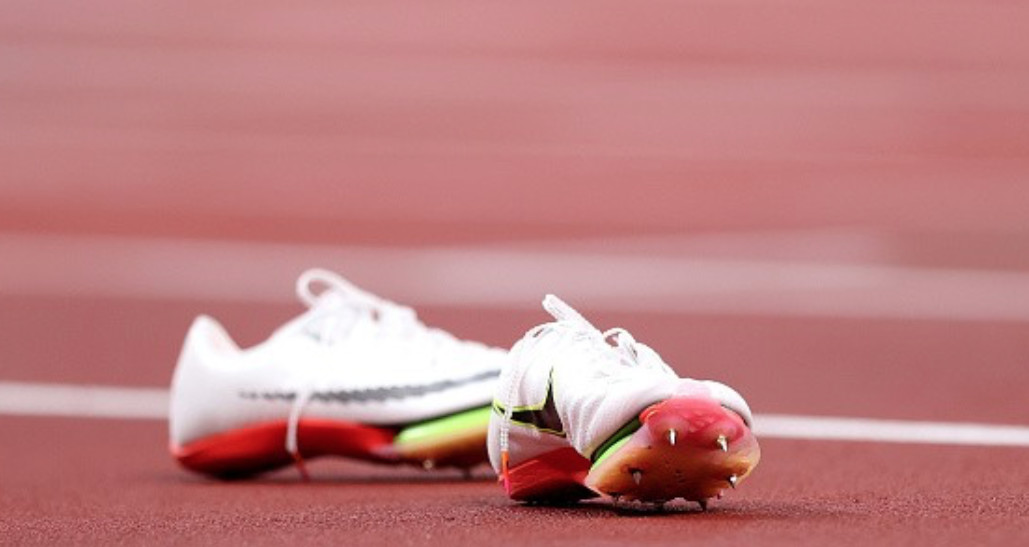
Just because an athlete is wearing a brand in track and field doesn’t mean that they are actually sponsored at all, or in any meaningful way. Some could be “kit drops”, others might have bought a product themselves. New Zealand’s Tom Walsh wore blacked out Nikes for his shot put final, but has had “SPACE FOR RENT” emblazoned on his vest in the Diamond League this season. Others may be ensuring that they don’t miss out on carbon-plated “super spikes”. Britain’s Josh Kerr—Brooks sponsored—wore “whited-out” Nikes for his bronze-medal-winning performance.
There was also room for two new brands; Allyson Felix’s Saysh and fellow American Joe Kovacs wore Velaasa, a shoe brand founded by Lynden Reder that ran a successful Kickstarter campaign back in 2018. New Balance stepped up a notch with their sponsorship of Sydney McLaughlin, Gabby Thomas and Femke Bol.
Nike topped the vests chart through its sponsorship deals with federations, but this was down (71 to 53) and again Puma had the most dramatic boost (15 to 22). This included a shoe and vest double with Norwegian Karsten Warholm’s 400m hurdles world record. Asics, a Japanese company and an official Olympic gold partner, also saw a boost (8 to 13).
Puma may have had one more medal, but decided to cancel its $2.7m sponsorship of the Nigerian team. (Apparently, this delighted Nigerian officials). For its only medal in the women’s long jump, Ese Brume wore the lesser-known sporting brand AFA on her chest. Of these smaller brands, AF’s position is entirely down to Poland’s performance, while Belgian sponsor Vermarc can once more thank Nafissatou Thiam for making the medal table.
Charts show individual track and field events, no relays or road races. One athlete wore different brands across the heptathlon, so her final shoe brand in the 800m was counted here. For the vest count, it is the competing vest and not the podium tracksuit where the brands may differ. Javelin Olympic champion, India’s Neeraj Chopra had no discernible logo on his vest. It is categorised here as “other”.
(08/15/21) Views: 12,726Did you know that Ballet training can improve your running
Have you ever watched a ballet dancer soar through the air and wondered how they make it look so easy?
It’s a ballet dancer’s training that gives them such athletic grace. Ballet has developed tremendously in recent years, in both demand and aesthetics.
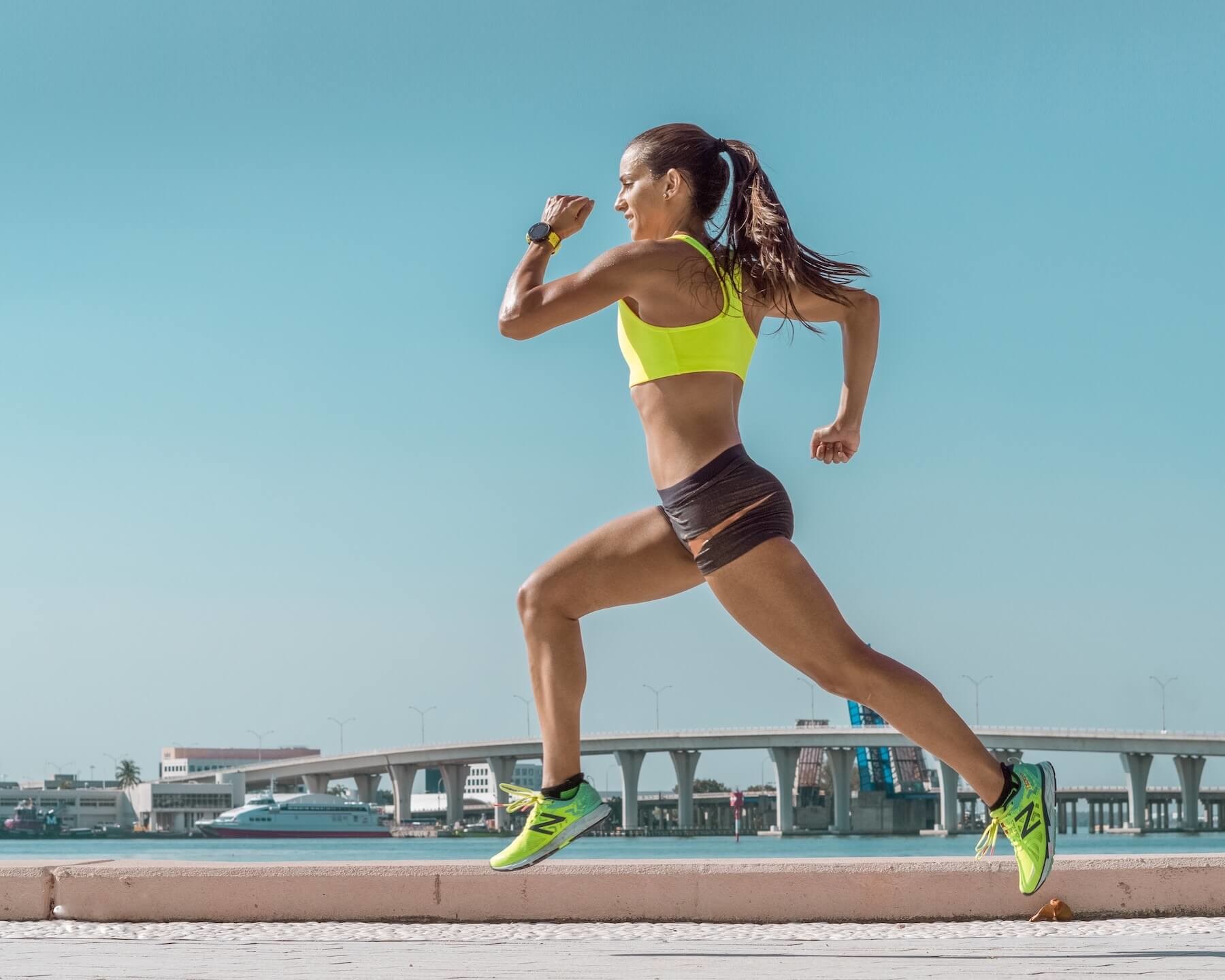
Dancers today are required to have a far greater range of dynamics, flexibility and style. Yet the fundamentals stay the same: continuous practice and repetition of technical exercises that are designed to develop control, strength, precision, a greater range of mobility, fluidity and kinaesthetic awareness (an internal knowledge of where each part of your own body is in movement).
In fact, skills that would make the ideal trail runner. Ballet originates from the 16th century European courts. Ultimately, it is built upon precise alignment.
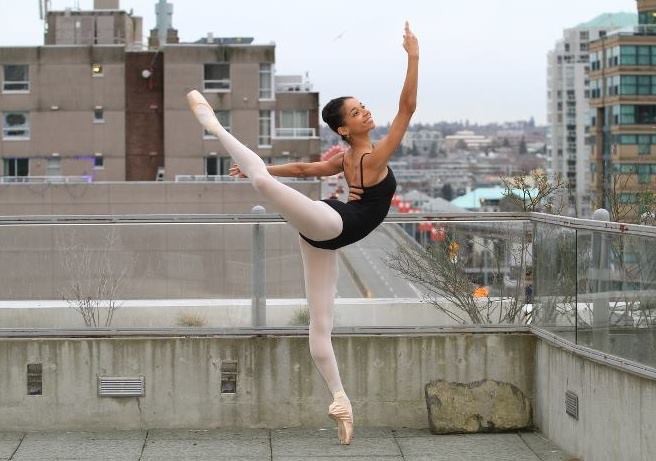
Ballet is performed in ‘turnout’. This is the rotation of the leg at the hips that causes the feet (and knees) to turn outward, away from the front of the body. The result is that the lower trunk, pelvic region and upper thighs strengthen in order to maintain this healthy alignment.
Core control is paramount, even when stationary. Without it, stabilisation of the pelvis and spine are lost. The upper back loses its strong base and postural errors, such as rounded shoulders, begin to appear.
For the dancer, this means the loss of the ability to balance and to execute movements properly. For the runner this is also true, added to which a weak core causes greater stress for the pelvic floor muscles.
(Both men and women have pelvic floor muscles between the legs which support the internal organs! The pelvic floor comes under greater stress during impact work such as running.)
(09/20/18) Views: 11,807Trail Running Magazine
Dave McGillivray who has heart issues says just because you are fit doesn't mean you are healthy
Boston Marathon race director Dave McGillivray was at home resting last night after undergoing his third angiogram in the past five years earlier in the day at Mass. General Hospital.
The tests showed that McGillivray, who turned 64 on Aug. 22, has one heart artery 80 percent blocked and another 40-to-50 percent impaired. McGillivray plans to meet with a heart surgeon in the next week or so to decide the best avenue of treatment.
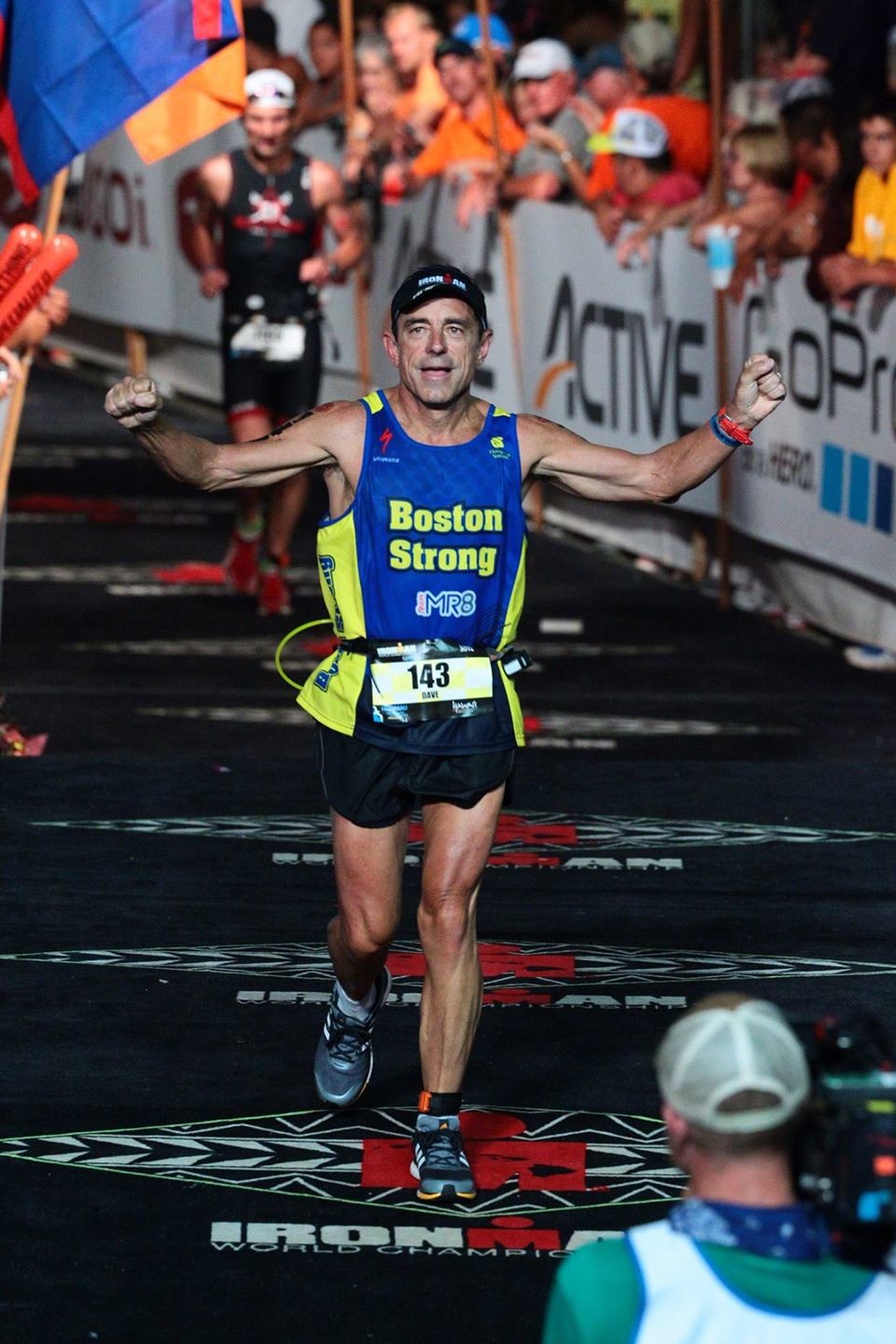
”Right now, my mind is spinning out of control. I never thought during my lifetime and in my craziest dreams that I would need bypass surgery. This just wasn’t on my radar,” McGillivray said in an email sent out to friends and colleagues last night.
”But, I’ve also finally learned and accepted the fact that I am not invincible. No one is.” McGillivray, who maintains a whirlwind schedule, recently served as race director/organizer of the MR8 5K event, which finished inside TD Garden last week.
Just weeks before this past April’s 122nd edition of the Boston Marathon, McGillivray completed an arduous trek of running seven marathons in seven days on seven continents. Each year, to celebrate his birthday, McGillivray runs an equal amount in miles.
Dave wrote in his email, "On the one hand, I wanted to keep this private. At a certain level it is almost embarrassing to me that I am in this position. However, I also want to expose the fact that this can happen to ANYONE and sometimes I am led to believe that the fittest athletes could actually be the most vulnerable ones because they are in such denial of their illness and don't act on it like others do.
I'm hopeful that this message can actually save others going through a similar experience and make everyone think a little deeper about their own health and act on it before it is too late."
(09/06/18) Views: 11,507USATF Releases Its Return To Training Guidance
This guidance document (“Guidance”) on return to training considerations post-COVID-19 has been developed by USATF’s COVID-19 Working Group, composed of medical and scientific experts in the fields of sports medicine, physiology, infectious disease, and epidemiology. This Guidance is based on and includes portions of specific content from the US Olympic and Paralympic Committee guidance document on return to training considerations and World Health Organization (“WHO”) mass gathering guidance.
This Guidance sets as primary consideration the rules and regulations provided by public health authorities and state and local governments, which will be different across the country. The secondary consideration should be the specific recommendations set forth in this document. In either case (State/Local or USATF), whichever regulations are more restrictive should be the guidance that is followed.
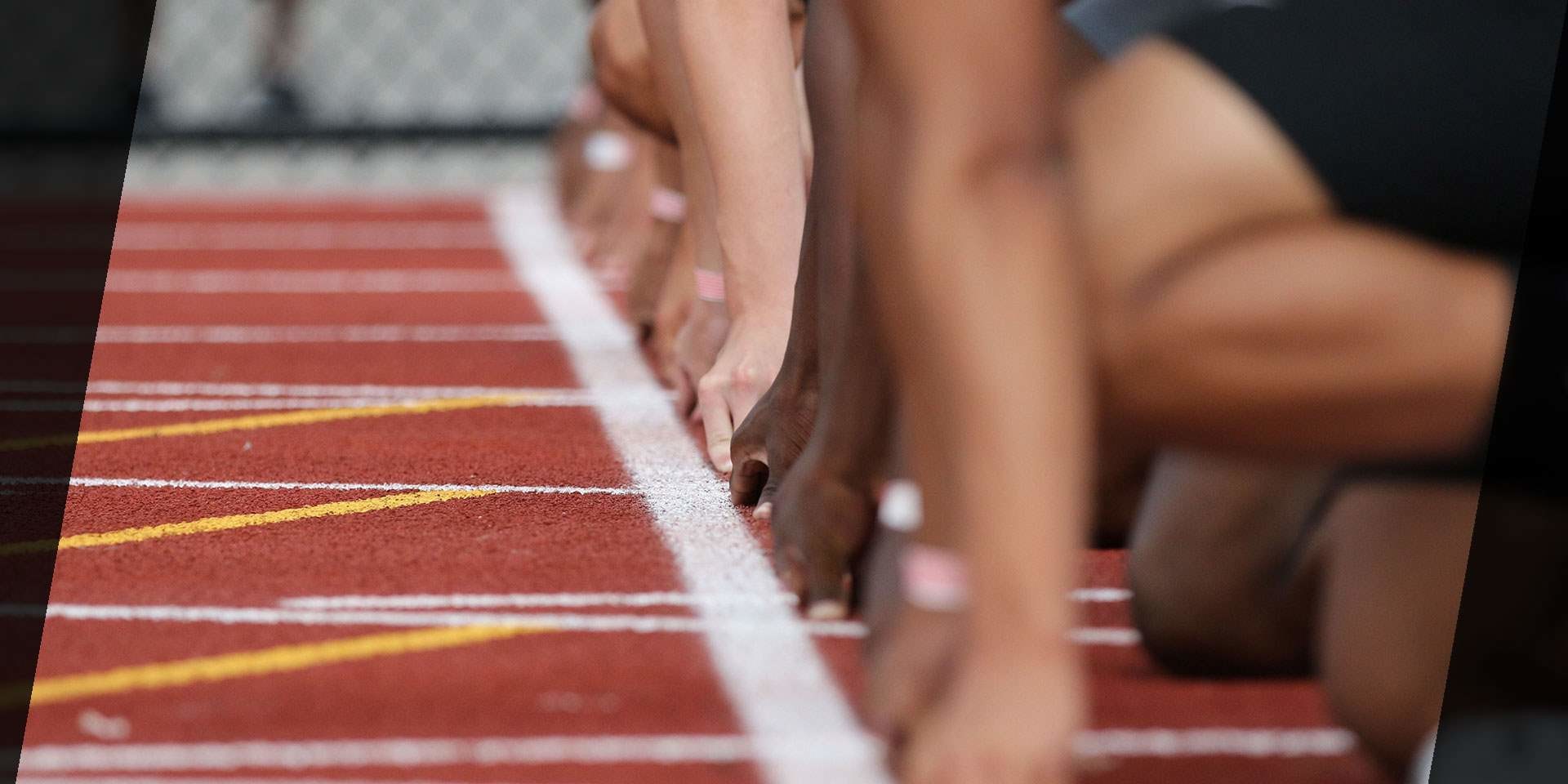
This does not prevent associations, local clubs, and events from adopting even more strict or more conservative approaches than those mandated by local public health authorities or recommended by the USATF Guidance.
This Guidance (v1.3) should be considered a “living document.” This means that the document’s criteria and recommendations are based on known factors at the time of writing. As more information becomes available concerning COVID-19, this Guidance will be updated as appropriate and new version(s) released to the USATF membership.
Finally, although the young and healthy tend to have less severe cases of COVID-19, every case of this disease is potentially life-altering or deadly in any age group, but particularly so in USATF athletes, coaches, and officials with select risk factors - such as asthma, hypertension, diabetes, liver disease, kidney disease, immune suppression, neurologic disorders affecting respiration, or individuals of advanced age.
Until a vaccine is developed, long-term immunity can be confirmed, or a cure is found, there is no way of completely eliminating the risk of fatal infection. This should always be in the forefront when considering return to training decisions.
Return to Training Phases
Step 1: Determine current state government requirements and regulations. Links to find this information for your state can be found on the link to this story.
Step 2: Determine if there are any local or county public health authority notices with restrictions on activities in the community. Finding this information will differ by location, but normally can be found through your county government webpage.
Step 3: Using that information, determine the appropriate phase below that applies to your local community.
Step 4: See the specific guidance for each phase listed below.
Note, in all phases proper hygiene and social distancing practices should be followed.
(06/07/20) Views: 11,131A look at the latest from Adidas, Adizero Pro carbon-plated shoe
Adidas has announced the release date of its commercially available carbon-plated shoe. The Adizero Pro is made of a Carbitex carbon-plate, a Lightstrike midsole (padded by a bit of Boost at the heel) and a Continental rubber outsole.
The shoe will be available to select markets on April 1, 2020 and worldwide on May 15, 2020.
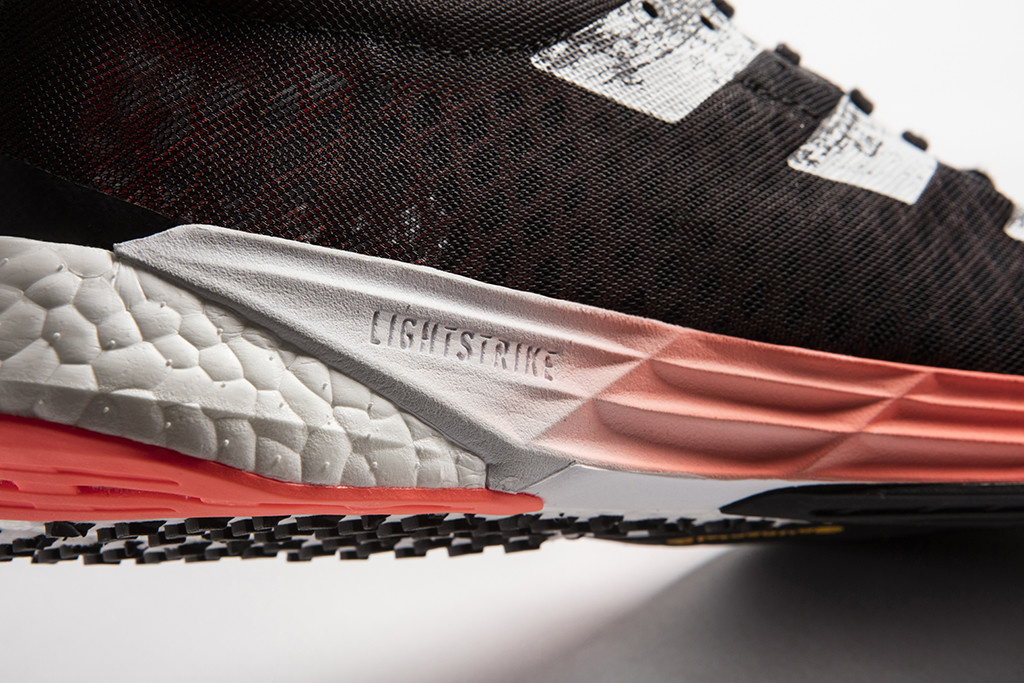
Prototype versions of this shoe have been seen on the feet of four-time New York Marathon Champion Mary Keitany, 10K world record-holder Rhonex Kipruto, and even in 2008, on the feet of the former marathon world record-holder Haile Gebrselassie.
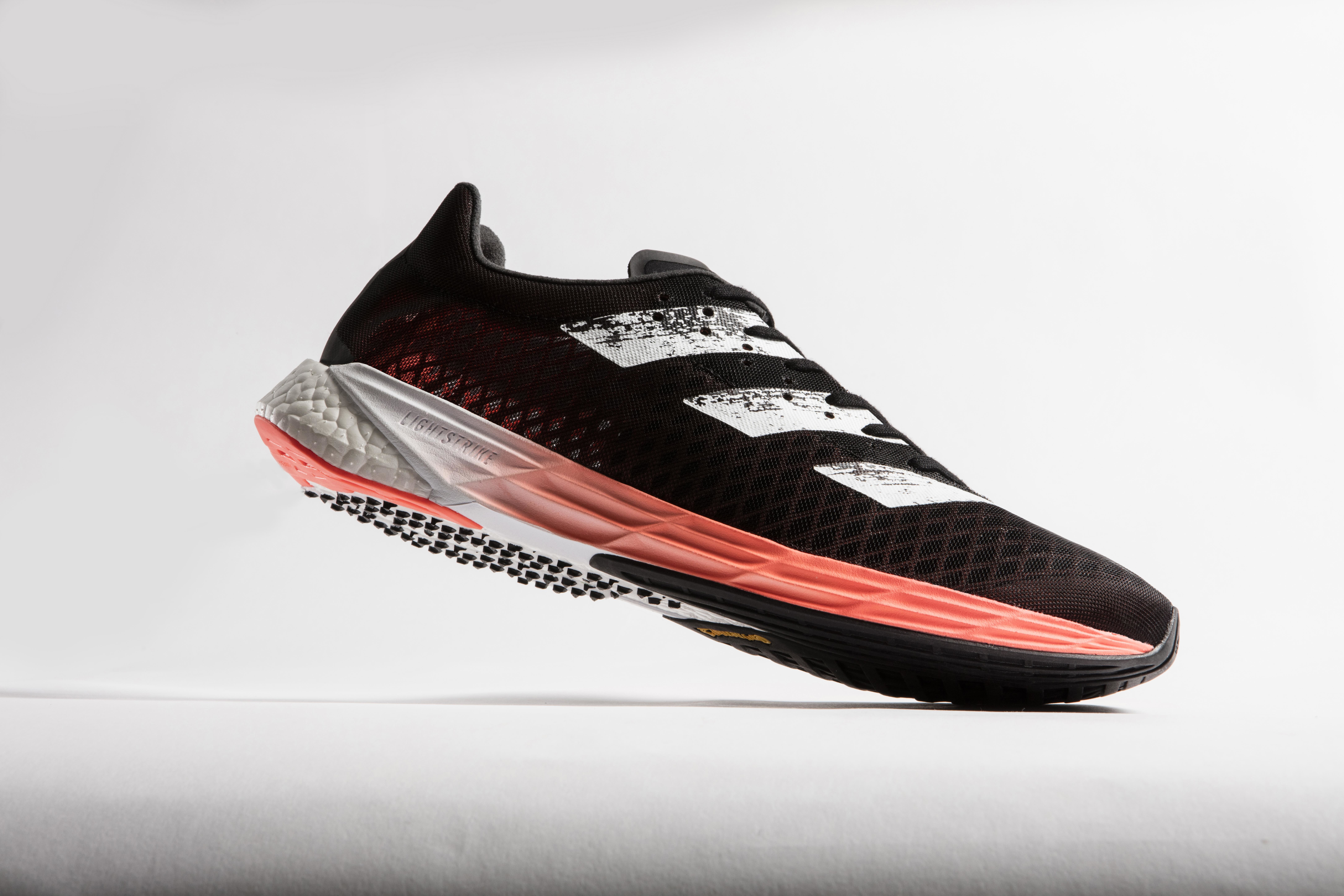
This is the first time the company is using Lightstrike in a running shoes (a TPU foam that made its debut in basketball). Adidas believes Lightstrike’s combination of stability and energy return will be appreciated by runners, especially over the full marathon distance.
The Adidas prototype that debuted at the 2020 Houston Marathon isn’t the shoe that was announced today. The all-white shoe had very subtle markings, with huge stack height and a line through the midsole, that presumably sandwiches a carbon plate.
While this isn’t the prototype that is hitting the market this spring, it could be a version of the carbon-plated shoe that we’ll see in available commercially in the fall.
Adidas joins Saucony, New Balance, Hoka, Under Armour, Brooks and Nike, which all have announced the release of their latest carbon-plated shoes this spring.
(02/13/20) Views: 11,100Madeleine Kelly
Andreas Almgren Breaks European Record as Agnes Ngetich Runs Second Fastest Half Marathon Ever in Valencia
Valencia, Spain — October 26, 2025 - The 2025 Valencia Half Marathon Trinidad Alfonso Zurich once again lived up to its global reputation as the fastest half marathon on Earth. The flat, coastal course produced extraordinary performances from both the men’s and women’s elite fields — highlighted by Sweden’s Andreas Almgren becoming the first European ever to break 59 minutes, and Kenya’s Agnes Jebet Ngetich clocking the second-fastest women’s time in history.
MEN’S RACE: ALMGREN MAKES HISTORY AS KEJELCHA DOMINATES
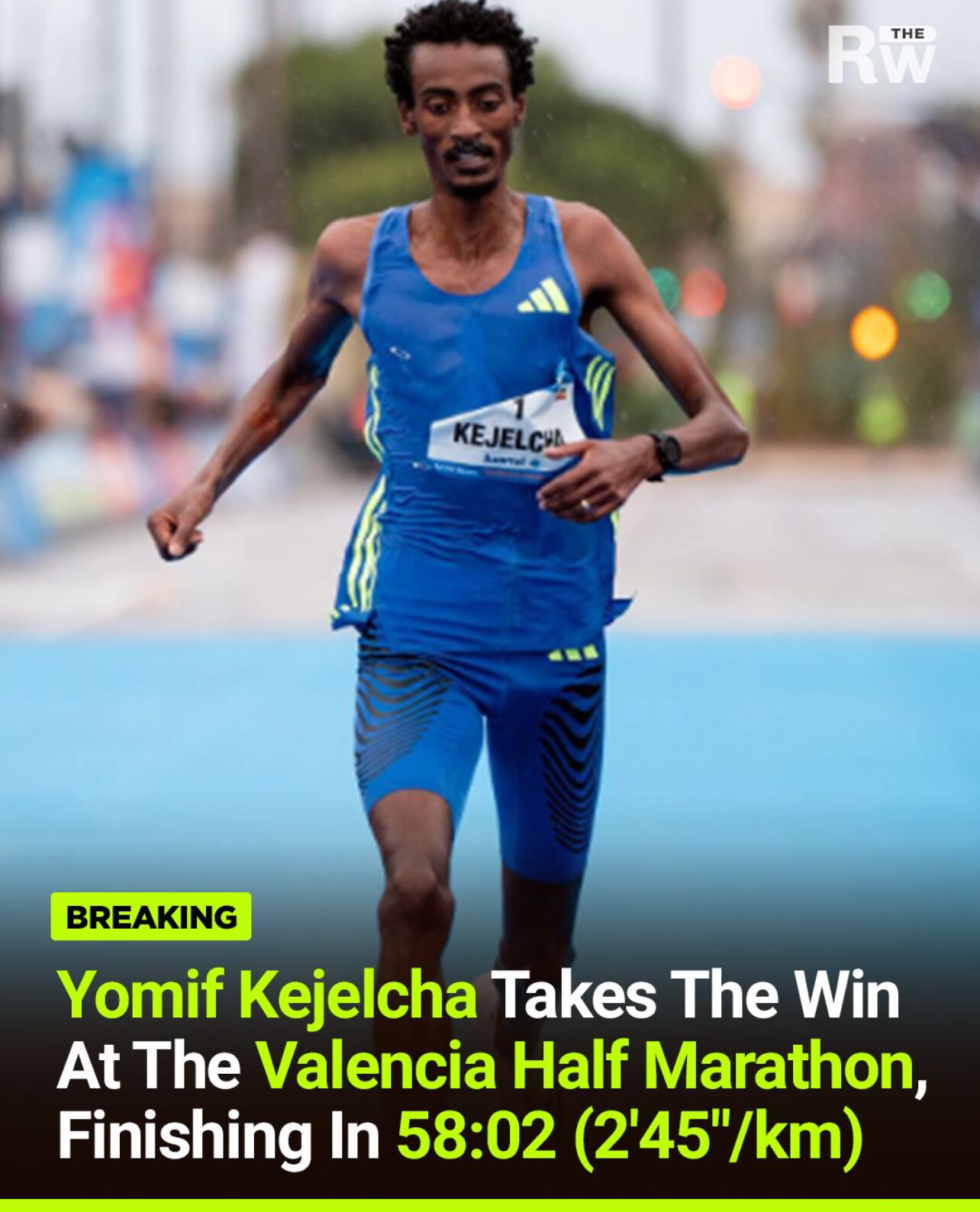
Ethiopia’s Yomif Kejelcha retained his Valencia title with a blistering 58:02, further cementing his place among the all-time greats. Though it was outside the current world record of 56:42, set earlier this year by Uganda’s Jacob Kiplimo at the Barcelona Half Marathon, Kejelcha’s effort was commanding from start to finish.
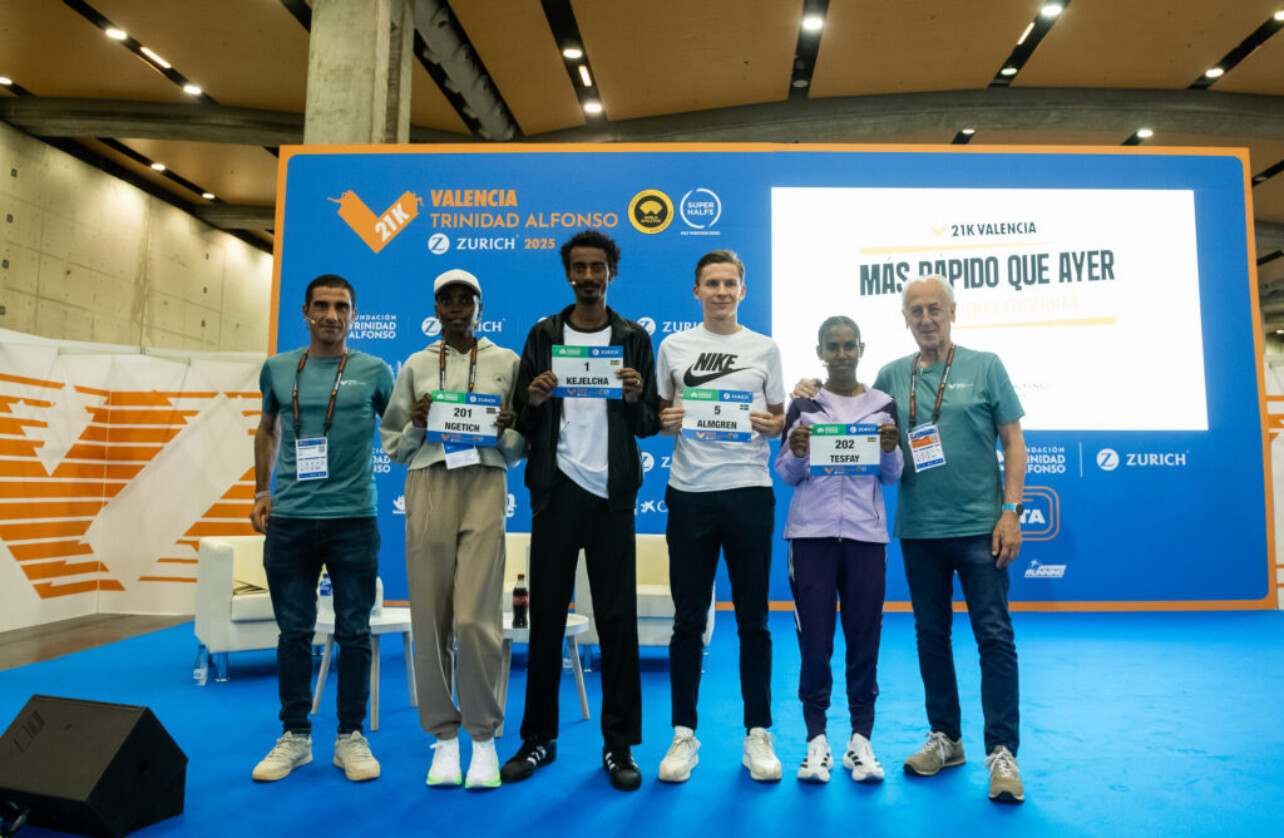
Running in his slipstream, Rodrigue Kwizera of Burundi and Brian Kibor of Kenya both crossed in 58:39, but the day’s biggest breakthrough came from Sweden’s Andreas Almgren, who stormed home in 58:41 — a stunning new European record.
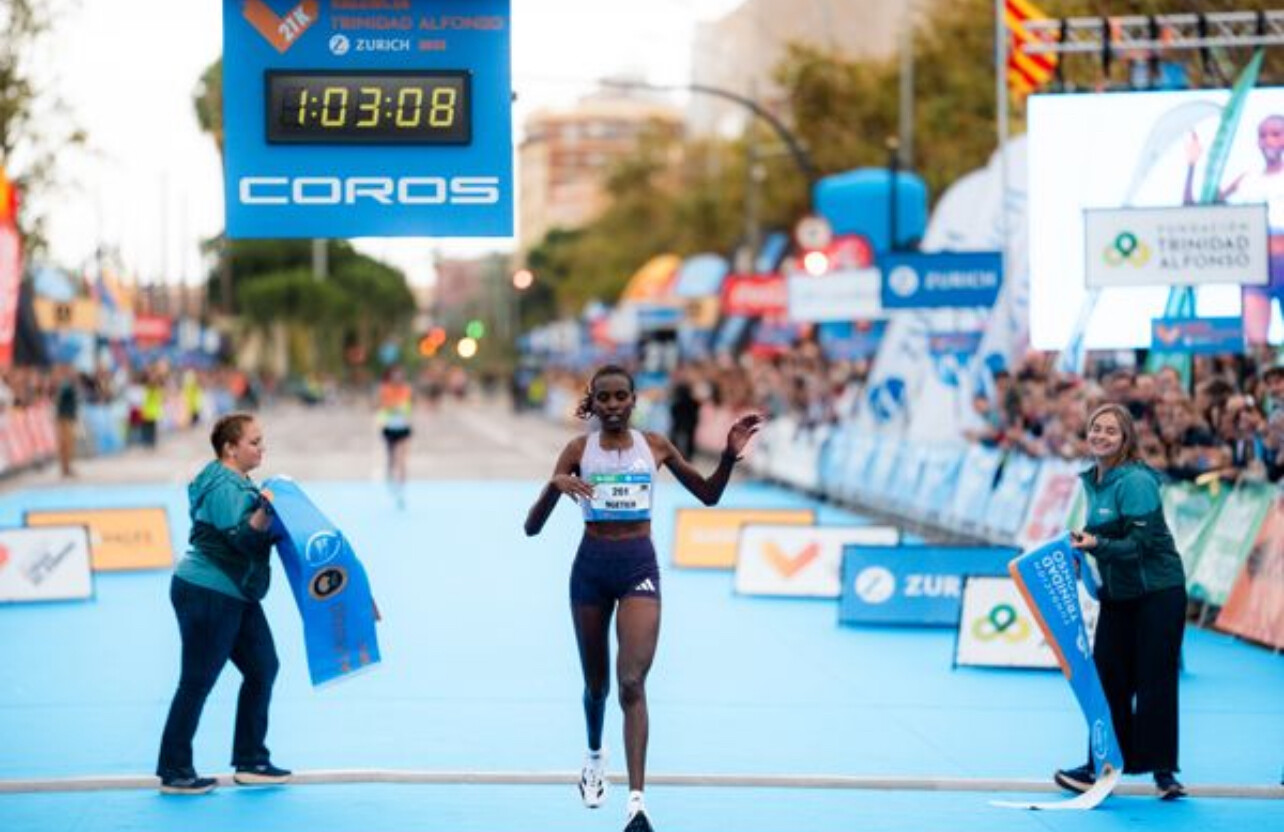
The 29-year-old Almgren shattered the previous continental best of 59:13, set by Julien Wanders in 2019, and became the first European athlete in history to dip under the 59-minute barrier.
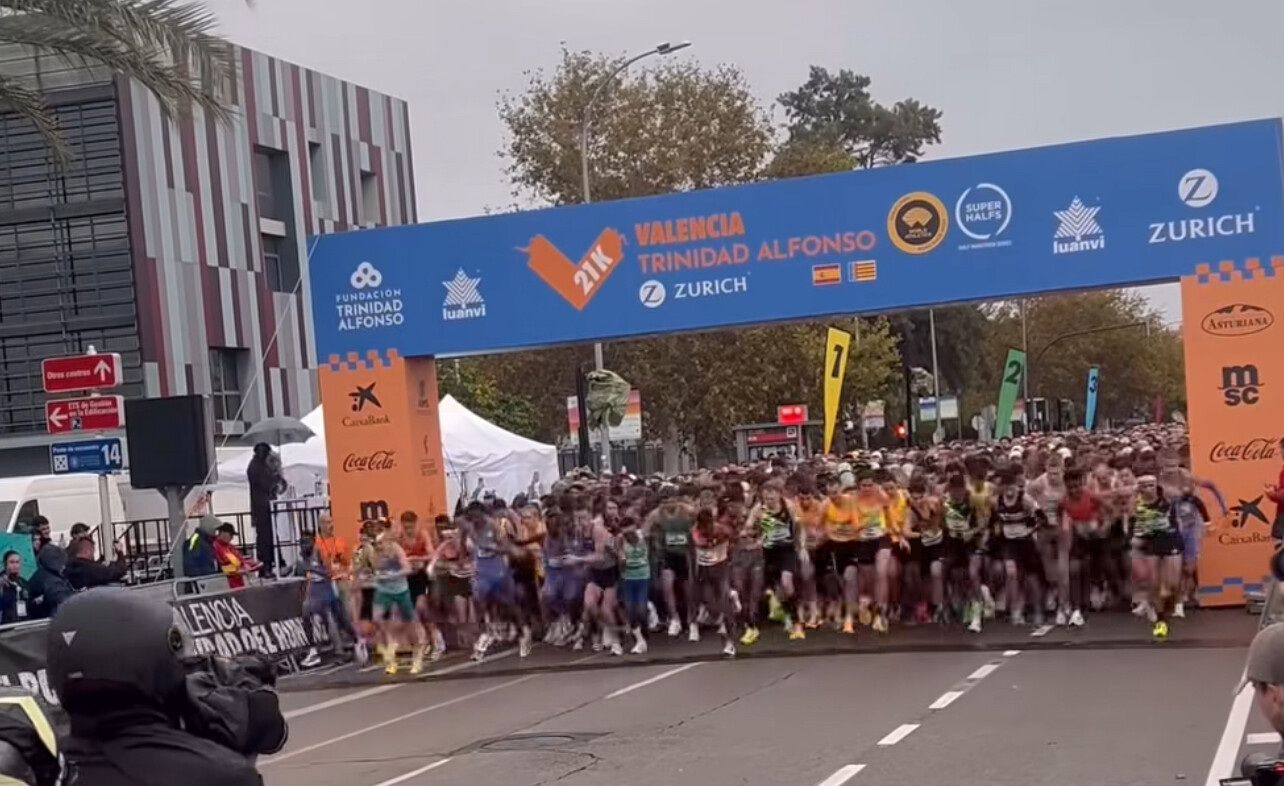
“This means everything,” Almgren said after the finish. “I came to Valencia knowing it was the place for fast times, but to run 58:41 — it’s beyond my dreams. Europe is back in the game.”
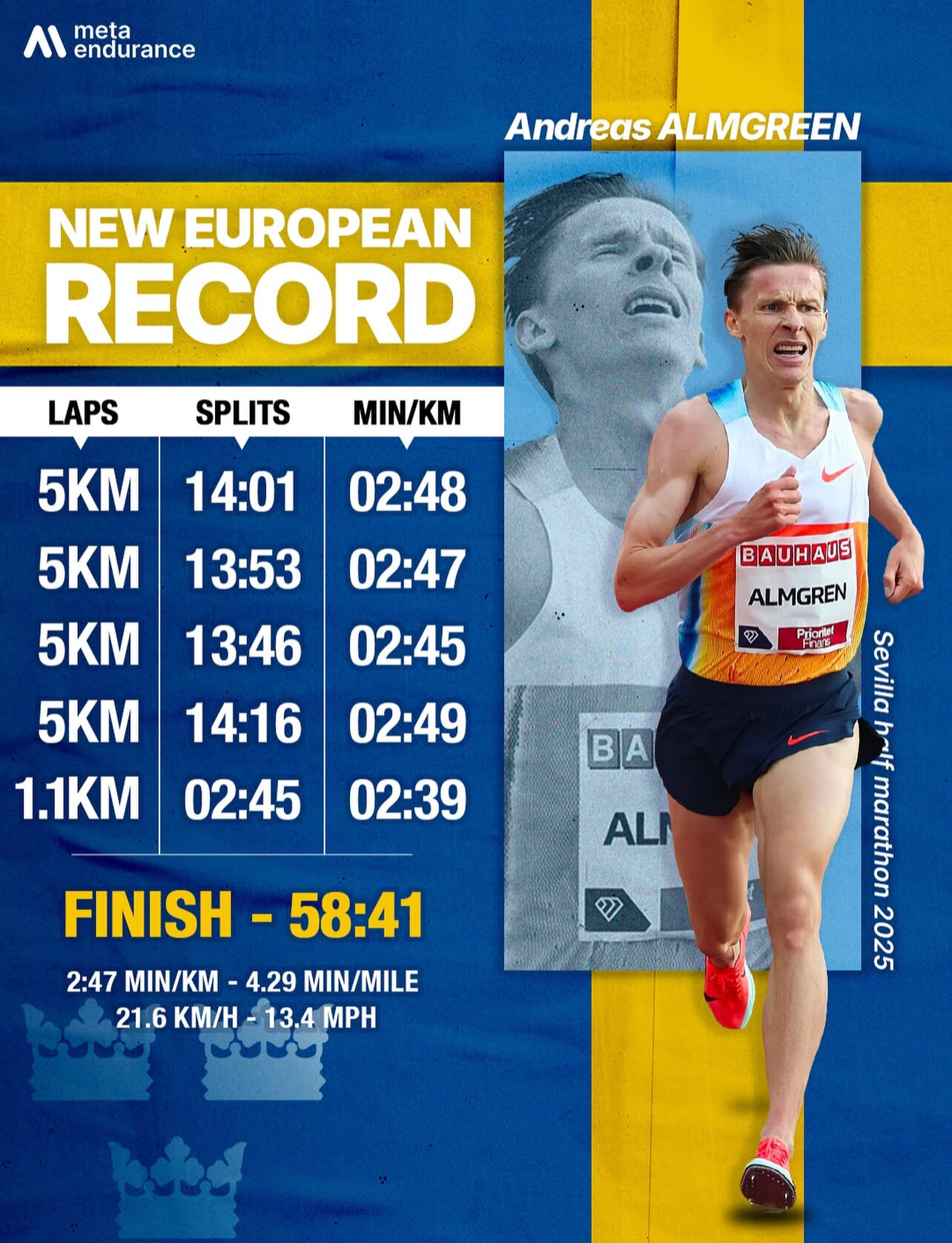
Kejelcha went out hard with early splits suggesting another sub-58 performance might be possible, hitting 10K in around 27:13. Slight headwinds in the final kilometers kept him just off world-record pace, but his margin of control was never in doubt.
WOMEN’S RACE: NGETICH CLOSES IN ON THE WORLD RECORD
Kenya’s Agnes Jebet Ngetich produced yet another masterpiece on the streets of Valencia, winning the women’s title in 1:03:08, the second-fastest time ever recorded for the half marathon. Only Letesenbet Gidey’s world record of 1:02:52, also set in Valencia in 2021, stands ahead of her on the all-time list.
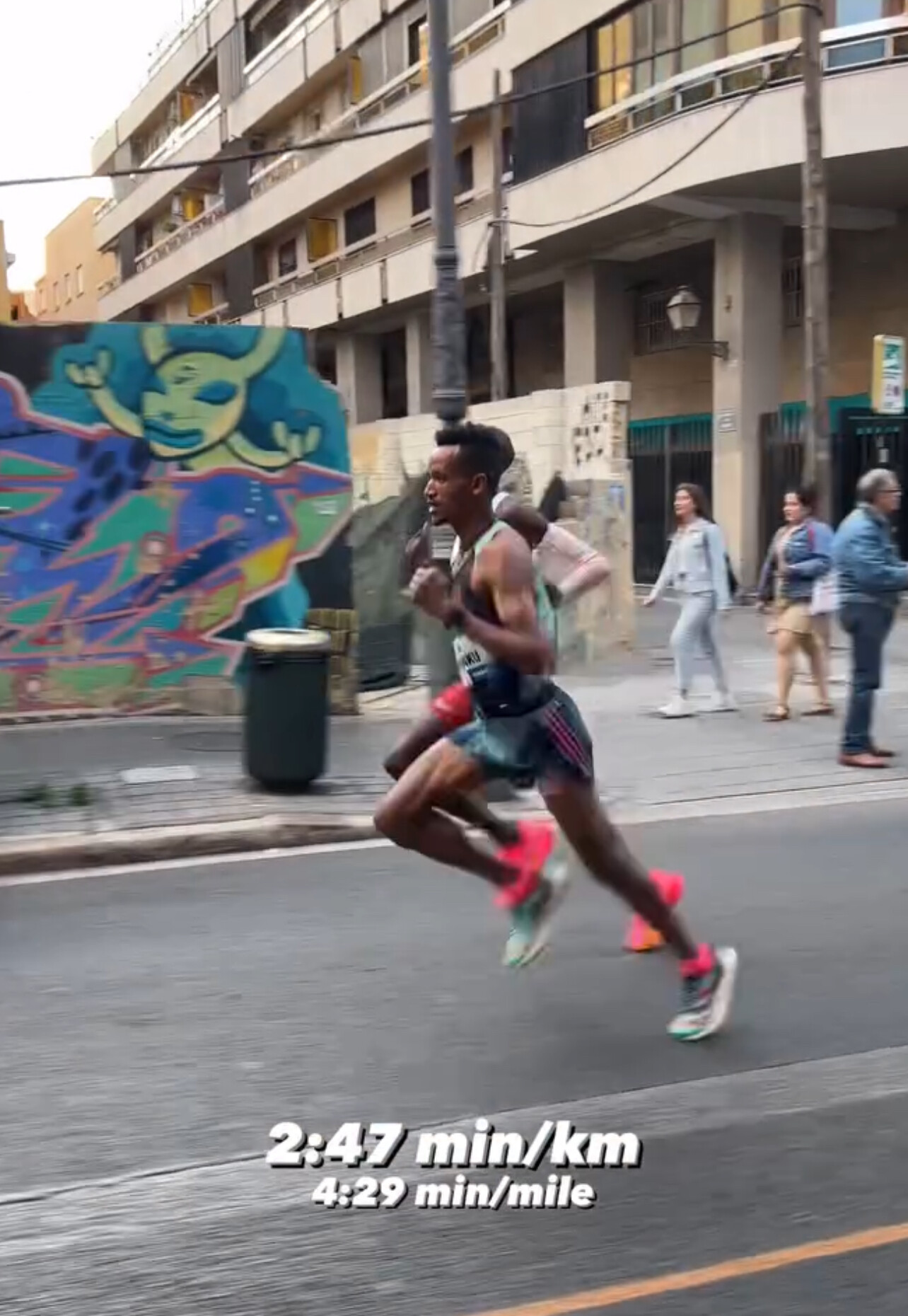
Ngetich went out aggressively, passing 10K in 29:28, well inside world-record pace. But a headwind over the final five kilometers cost her valuable seconds. Despite missing the record, her performance once again showcased her dominance and her special connection with the streets of Valencia, where she has repeatedly delivered career-defining runs.
“Valencia brings out the best in me,” Ngetich said. “I felt strong, and even though I missed the record, I know it’s within reach. I’ll be back.”
Ethiopia’s Fotyen Tesfay took second in 1:05:11, while Kenya’s Veronica Loleo ran a superb personal best of 1:05:46 to finish third. The top performances underscored the remarkable depth and quality in women’s distance running today.
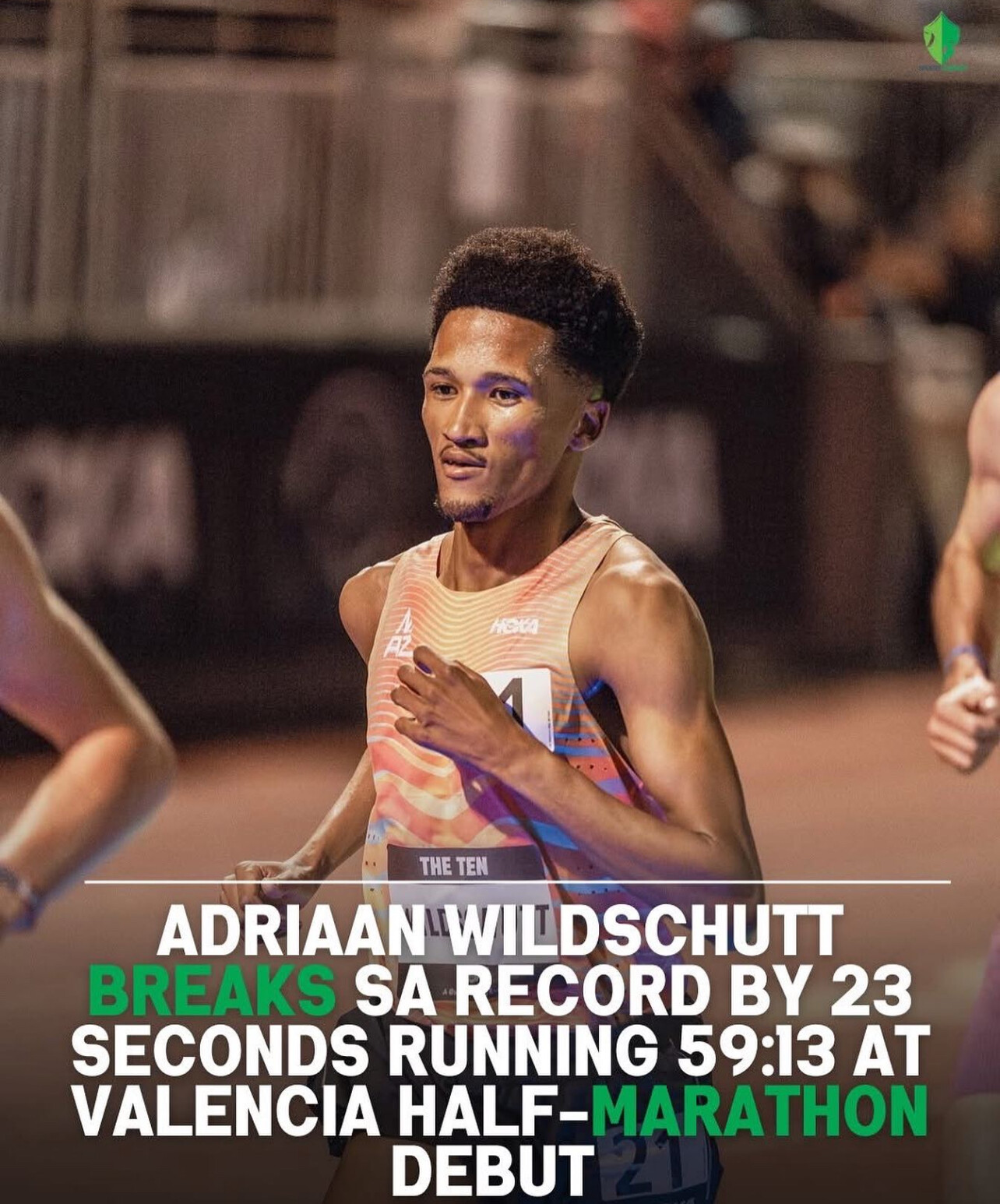
RACE CONDITIONS AND COURSE
Cool temperatures, light humidity, and minimal wind set the stage for another record-friendly day in Valencia. The famously flat and fast course — celebrated for its long straightaways and sea-level setting — once again proved why it’s the go-to destination for athletes chasing lifetime bests and global marks.
Pacemakers set an aggressive tempo from the start in both races, and despite minor breezes in the final stretch, the results confirmed that Valencia remains the gold standard for road racing worldwide.
TOP RESULTS
Men’s Elite Results
1. Yomif Kejelcha (Ethiopia) – 58:02
2. Rodrigue Kwizera (Burundi) – 58:39
3. Brian Kibor (Kenya) – 58:39
4. Andreas Almgren (Sweden) – 58:41 (European Record)
5. Milkesa Mengesha (Ethiopia) – 59:12
6. Boniface Kibiwott (Kenya) – 59:16
7. Sebastian Sawe (Kenya) – 59:22
8. Mohamed Essa (Morocco) – 59:45
9. Tadese Worku (Ethiopia) – 59:58
10. Gabriel Geay (Tanzania) – 1:00:02
Women’s Elite Results
1. Agnes Jebet Ngetich (Kenya) – 1:03:08 (Second-fastest time ever)
2. Fotyen Tesfay (Ethiopia) – 1:05:11
3. Veronica Loleo (Kenya) – 1:05:46 (Personal Best)
4. Irine Cheptai (Kenya) – 1:06:03
5. Melat Kejeta (Germany) – 1:06:37
6. Viola Chepngeno (Kenya) – 1:06:44
7. Tsige Haileslase (Ethiopia) – 1:06:56
8. Eilish McColgan (Great Britain) – 1:07:09
9. Selly Chepyego (Kenya) – 1:07:16
10. Marta Galimany (Spain) – 1:08:21
WHY VALENCIA CONTINUES TO INSPIRE THE WORLD
For more than a decade, Valencia has been the epicenter of half-marathon excellence. From Gidey’s women’s world record in 2021, to Kandie’s men’s mark in 2020, to Kejelcha’s near-record runs and now Almgren’s European breakthrough — the course has become synonymous with speed and history.
This year’s edition reinforced three powerful truths about modern distance running:
1. Yomif Kejelcha remains one of the greatest half-marathon specialists of all time.
2. Agnes Jebet Ngetich has brought women’s road racing to new heights, now sitting just seconds shy of a world record.
3. Andreas Almgren’s European record symbolizes a resurgent era for European endurance running.
FINAL SUMMARY
Event: 2025 Valencia Half Marathon Trinidad Alfonso Zurich
Date: October 26, 2025
Location: Valencia, Spain
Men’s Champion: Yomif Kejelcha (Ethiopia) – 58:02
Women’s Champion: Agnes Jebet Ngetich (Kenya) – 1:03:08 (Second-fastest ever)
European Record: Andreas Almgren (Sweden) – 58:41
(10/26/25) Views: 11,011Boris Baron
Nike’s Investigation of the Oregon Project is Complete
After Mary Cain alleged emotional abuse as an athlete under Alberto Salazar’s coaching, Nike conducted an internal probe of the professional running group.
Nike said on Monday that it is planning to take multiple actions to better support its female professional athletes, following an internal investigation into the now-defunct professional running group, the Oregon Project.
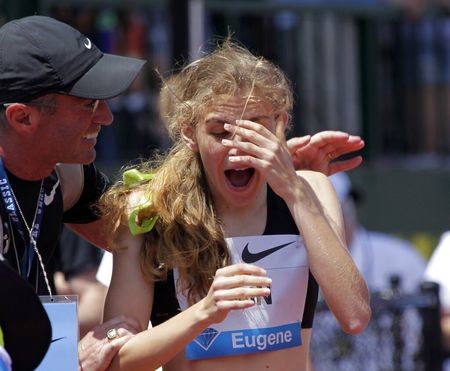
The company started the probe in November after former Oregon Project athlete Mary Cain went public with a New York Times op-ed piece about her experiences as a young track star under coach Alberto Salazar, who is currently serving a four-year ban from the sport for doping violations. (Salazar denies the charges and is appealing them—Nike said in an email to Women’s Running on Monday that “we support Alberto in his decision to appeal and wish him the full measure of due process that the rules require.”)
Cain joined the Oregon Project as a teen phenom, foregoing NCAA eligibility in 2013 to sign a pro contract with Nike. She moved from Bronxville, New York, to Portland, Oregon, at age 17, as a national high school record holder—the youngest athlete to ever represent the U.S. in a world-championships competition, where she raced the 1500 meters.
In the documentary, titled “I Was the Fastest Girl in America, Until I Joined Nike,” she described the pressure that Salazar and the all-male Oregon Project staff put on her to become thinner in order to perform better. Cain said she was weighed in front of her teammates and publicly shamed by Salazar for not hitting the goals he demanded—allegations that were later corroborated by former members of the group.
Now 23 years old, Cain said while training with the Oregon Project and during a period afterward, she suffered five stress fractures and didn’t menstruate for three years, which are symptoms of RED-S (relative energy deficiency in sport), a syndrome of insufficient caloric intake, with symptoms that can include excessive fatigue, amenorrhea, and decreased bone density. It can have serious long-term health effects like cardiovascular disease, infertility, and osteoporosis. Before she left Oregon to return home in 2015, she said she felt so isolated and trapped that she had suicidal thoughts and cut herself.
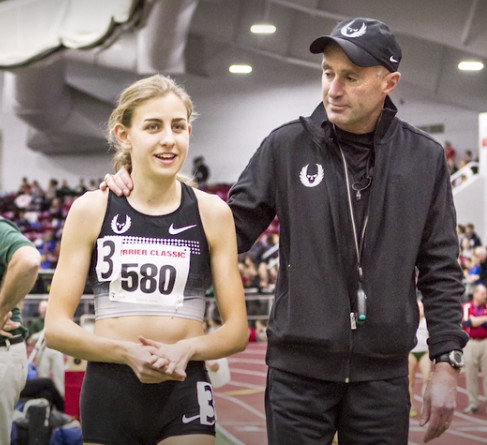
After the New York Times piece was published, Salazar denied any abuse or gender discrimination at the Oregon Project and added, “I may have made comments that were callous or insensitive over the course of years of helping my athletes through hard training.”
In the email to Women’s Running on Monday, Nike said the results of the internal investigation will not be made public, but “we are using the findings to identify areas where we can do better in supporting female athletes.” It was not confirmed who was involved in leading the investigation or who participated in it.
The initiatives that Nike identified include:
• Investing in scientific research into the impact of elite athlete training of girls and women
• Increasing the number of women coaches in sports
• Hiring a vice president of global women’s sports marketing in the coming weeks to have “strategic oversight” of Nike’s female athletes
• Creating an athlete think tank to help the company understand the opportunities and challenges faced by female athletes
• Partnering with Crisis Text Line, a free, confidential text messaging service for people to ask for help when in crisis
During a phone interview with Women’s Running on Monday, Cain said she was contacted in the fall by phone and email by a Nike lawyer, but opted not to participate in the probe because some of the people involved were Nike employees whose participation in it made her feel uncomfortable.
“There was no real transparency in the process, so I became very frustrated with the fact that there was no clear-cut person in charge, it was Nike investigating Nike, and seemingly some of the people involved in the process were investigating themselves,” she said.
Upon hearing the actions that Nike—the biggest sponsor of the sport’s governing body, U.S.A. Track & Field (a deal that goes through 2040 with an estimated value of $500 million)—wants to take as a result of the findings, Cain said she supports anything that promotes women’s health and opportunities in sports.
“It’s great to push money and push opportunity into the future—I whole-heartedly support that,” she said. “But the vagueness and no ability to see the report makes me worried that they’re hiding behind gestures that will almost make people forget the issues.”
Runners and other athletes have identified with Cain’s experiences since she shared them, creating a public conversation about the destructive culture underlying sports, where antiquated training philosophies perpetuated by a male-dominated coaching profession often result in eating disorders and worse for athletes.
“I have this renewed love of the sport that I only really found in the last few months because I do have so much hope in what women’s sports can and will become—so anything that’s generating interest and investment and research, I’m all for,” Cain said. “What I hope can happen through some of this work is that Nike can start hearing more voices.”
Still, Cain is hesitant to put too much stock in the proposed initiatives.
“It looks both weak and cowardly that as a corporation they won’t release what they found,” she said. “There’s a certain point where people would have a lot more respect for them as a broader institution and respect what they’re now trying to do if they also admitted what they did wrong. I can’t look at a future brightly if I can’t see them reflecting on their past.”
Since November, Cain has returned to training after about three years away, with the goal of making the U.S. Olympic Track & Field Trials in June. She most recently raced the 3,000 meters on Saturday at the Armory in New York, finishing in 9:24.38.
In December, she told Women’s Running that advocating for women’s sports and healthy coaching practices is her new dream.
“Due to lack of education and inappropriate societal norms, many people have a poor understanding of how to address topics such as women’s cycles, weight, and training appropriately,” Cain said. “My goal is now to create educational programs that coaches and athletes must take on these subjects.”
(02/02/20) Views: 11,010Seb Coe Hopes Cross Country Will be Added to 2024 Olympics
"The 2024 Olympic Games in Paris would be a fitting time to see the return of cross country to the Olympic programme,” said IAAF President Sebastian Coe, who attended and participated in Sunday’s Cross de Italica in Seville.
Organisers of the IAAF World Cross Country Championships 2019 to be held in Aarhus, Denmark scheduled for 30 March 2019, says they have already promised initiatives to help guide the Championships into new territory. More news about the course will be announced soon.
(01/24/18) Views: 10,820The coronavirus quarantine is no problem for determined Chinese runners
A report yesterday on the South China Morning Post‘s website focused on an interesting spin on indoor training: some Chinese runners who are forced to stay indoors due to the coronavirus quarantine have taken to running around their apartments to get their training in, and posting their workouts on social media.
One post by popular amateur marathoner Pan Shancu about running more than 6,000 loops of an eight-meter course in his apartment attracted thousands of admiring comments.
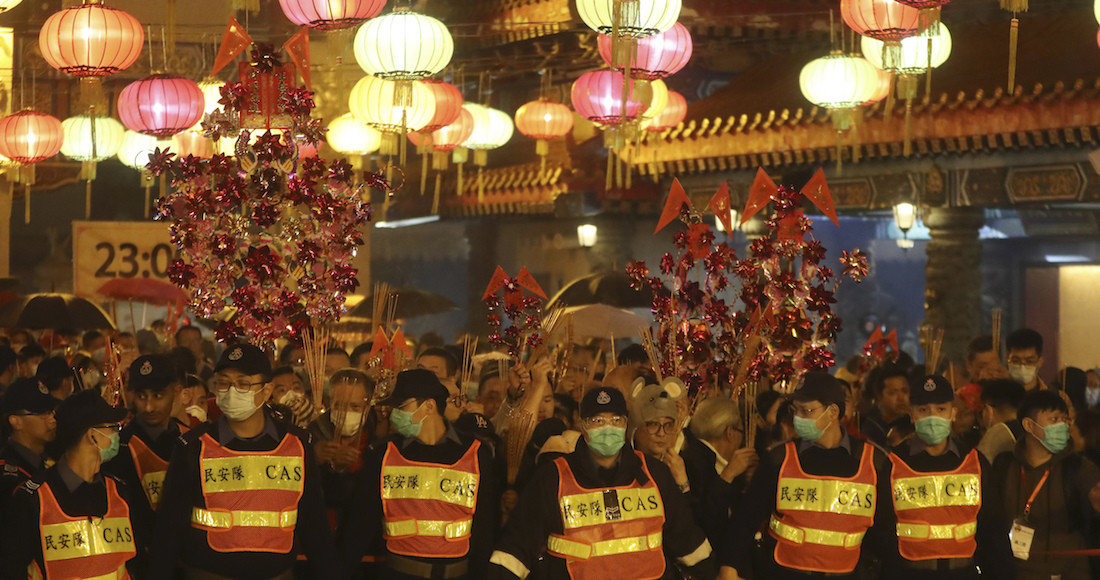
“I have not been outside for many days, today I cannot bear sitting down any more!” he wrote. “Let’s run laps around the two massage tables in the room, then! Yes, one lap is about 8m–I ran 50K, did it in 4:48:44, sweated all over, feels great!” he posted. Pan, who claims a 2:59 personal best, practices Chinese medicine in Hangzhou, about 500 kilometers from Wuhan, the center of the outbreak.
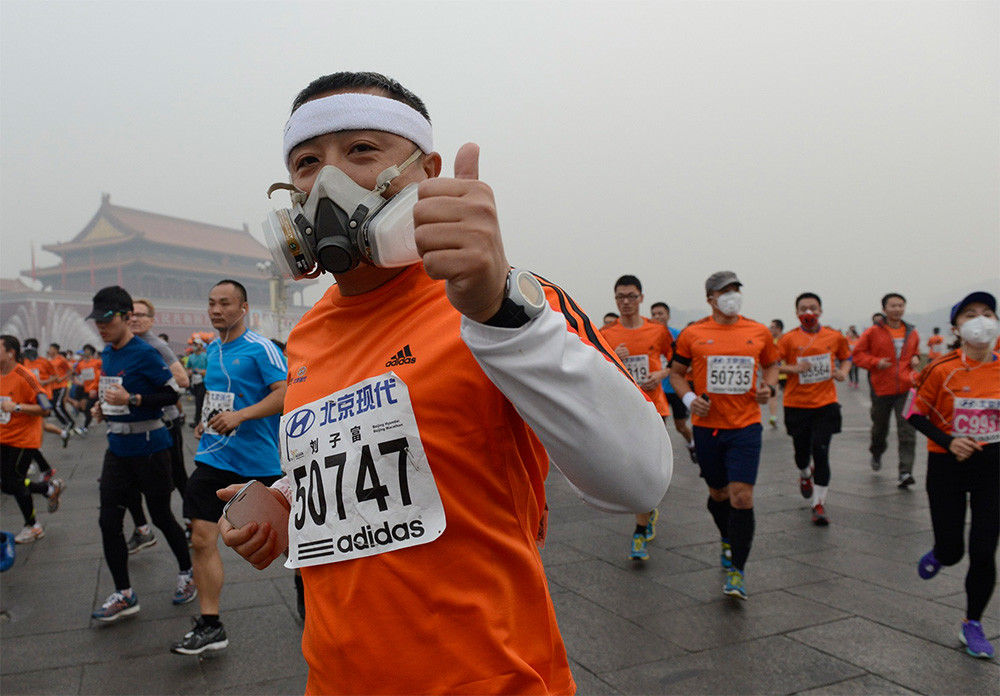
Running is very popular in China, which boasts an estimated 25 million enthusiasts. But even those without access to a treadmill are somehow managing to run.
The story quotes another woman, who posted a humorous and encouraging story on the Chinese social media site Weibo about a ‘race’ she ran in her home: “I swipe my race card and start in the kitchen, go through the living room, turn into my daughter’s room, the less than 20m-long racecourse has beautiful scenery and on my left my husband’s snoring is cheering me on, goji berry tea from the living room table is my mid-route nutritional supply, on the right, the handsome men and beautiful women on TV are waving, cheering me on,” the runner wrote.
“This is a silent battle. I put in a burst of speed and power on to the balcony. My husband’s verdict is that I have psychological issues.”
The World Health Organization’s latest situation report on coronavirus says there are now more than 20,000 confirmed cases worldwide in 23 countries. Four hundred and twenty-five people in China have died of the virus, and one person in the Philippines has died. As of yesterday there have been four confirmed cases in Canada, with no deaths.
(02/05/20) Views: 10,669Anne Francis
After seven week break Kawauchi runs another sub 2:12 marathon - his 26th
After a seven-week break from the marathon, Yuki Kawauchi scored his third-straight marathon win, second-straight course record and came just shy of a third-straight negative split as he ran a completely solo 2:11:46 to take almost six minutes off the Kitakyushu Marathon course record.
Following up on negative split wins at December's Hofu Yomiuri Marathon and January's Marshfield New Year's Day Marathon, the latter a course record by half an hour, Kawauchi was on his own in Kitakyushu the whole way.
After a 1:05:51 split at halfway he slowed slightly finishing the second half in 1:05:55. Along with the course record, Kawauchi extended his record for most career sub-2:12 marathons to 26 as he continues to prepare for the Boston Marathon.
(02/20/18) Views: 10,209Migrant workers and children to pad out crowd for World Championships
Ticket sales for the World Athletics Championships in Doha are far more sluggish than expected, making it highly likely that large numbers of free tickets will be given away to migrant workers and children who will be bused in by organisers, informed sources have told the Guardian.
Organizers are already blanking off the top section of the 40,000-seater Khalifa International Stadium to make the event, which starts on Friday, look better on TV. However, even with a reduced capacity and reasonable ticket prices starting at 60 Qatari rial (£13), seats are still readily available.
Sources have told the Guardian that 50,000 tickets have been sold across the 10 days of action – and that migrant workers and children will be bused in to stop the stadium appearing more than half-empty on TV. That is a far cry from the optimism displayed when tickets went on sale, with organisers promising that there had been “registrations of interest from literally all corners of the world”.
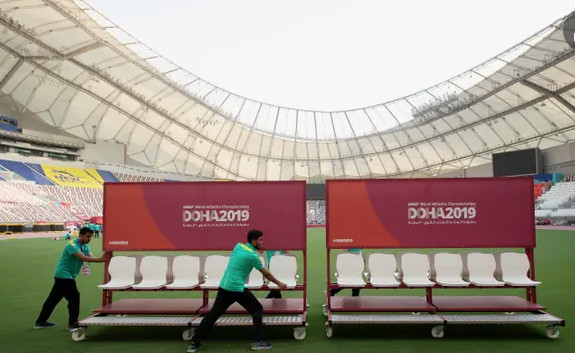
An IAAF spokesperson accepted ticket sales had been “challenging” but said nobody could have foreseen the boycott of Qatar by other gulf states, making it impossible for some fans in the region to watch the championships.
When asked about the possibility of tickets being given away, the spokesperson added: “Surely it is a good thing that communities across Qatar will be getting tickets? We believe it will inspire a whole new generation of fans into the sport.”
More than 1,800 athletes from around 150 countries are expected to take part in the world championships, which will be held in the Middle East for the first time.
However, Doha is not one of the traditional hotbeds of the sport and the event takes place at a time of year when the season is usually over. Nonetheless, the IAAF president, Seb Coe, has insisted that the championships will help track and field expand into new territories.
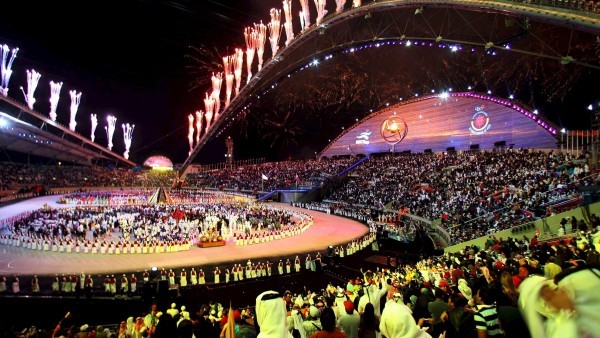
Organisers have promised a raft of innovations for the event, including two miniature cameras in each starting block that will show the first pictures of athletes’ faces in the 100m moments before they hear the starting pistol, and capture the explosion of energy as the athletes leave the blocks.
(09/28/19) Views: 9,879

